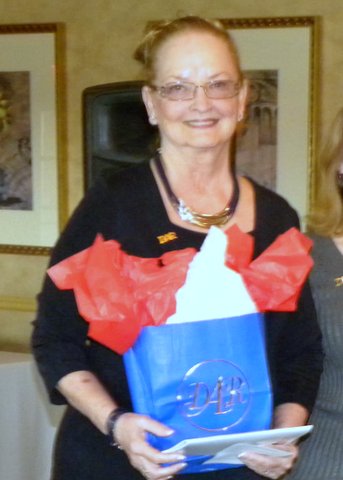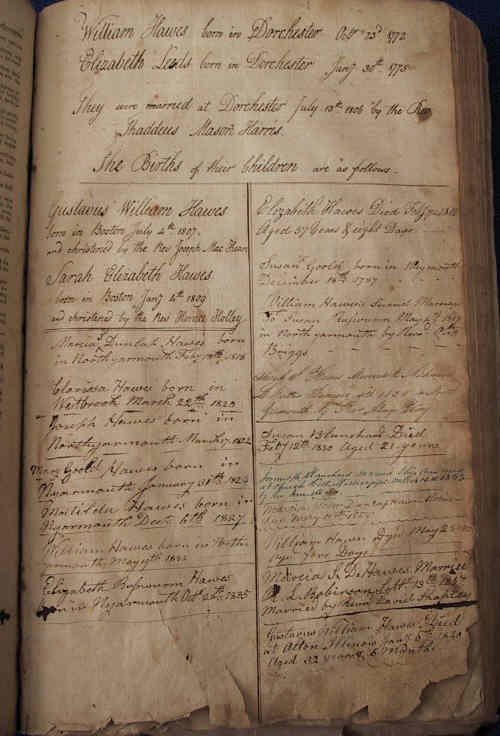| | Home | The Heritage Room Newsletter | FAQ | Happy Stories! | General Search | Sign In | |
| Everitt Bowles - This Month's Family History Hero A Civil War collector from St. Joseph, Michigan has a surprise in store on his birthday, thanks to Mom and Everitt Bowles, this month's featured dealer.
Mom, also known as Amanda Guernsey, is pictured with her secret surprise. She is a family researcher and new JustaJoy member. Everitt is a JustaJoy contributor with four decades of experience as a Civil War dealer.
"I have a house full of it," Everitt explains. I lived through the Civil War Centennial when I was a kid and I was hooked."Although Everitt deals in all sorts of American historical artifacts, his specialty is Civil War badges and photos and you are probably thinking the same way we do - yes, many are identified.
Everitt became involved with JustaJoy nearly as quickly as possible and this month's match was not his first. He especially enjoys matching things back to families.
"It is thrilling," says Everitt. "These things are precious to collectors but to family members, they are much more than an artifact. Matching the items back to families is a lot of fun.
"The original item discovered by Amanda on JustaJoy was a "calling" or "etiquette" card for Colonel Samuel G. Knee, a member of the Iowa 12th Infantry (federal). At the time of his picture below, Samuel was a Major. He was later promoted to Lieutenant Colonel and he married Julia Moreland in 1866, just at the end of the War. He is a cousin to Amanda and her son, Greg.
So now, Greg has a very special surprise awaiting, thanks to two passionate historians more than 700 miles apart (and a little help from JustaJoy to bridge the gap). |
|
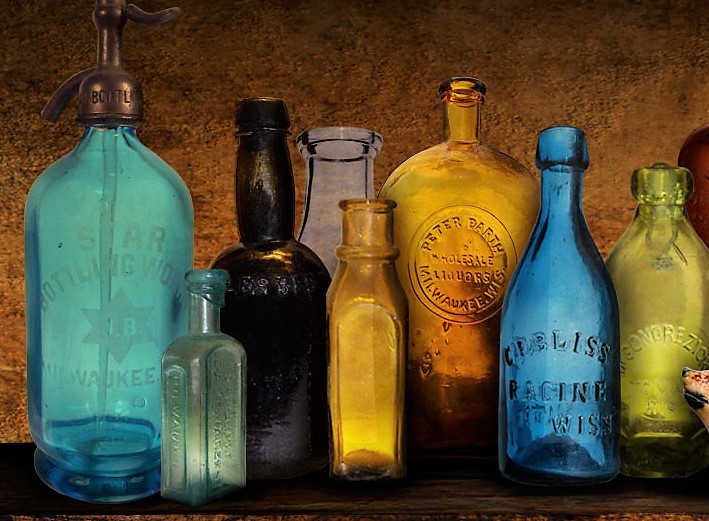
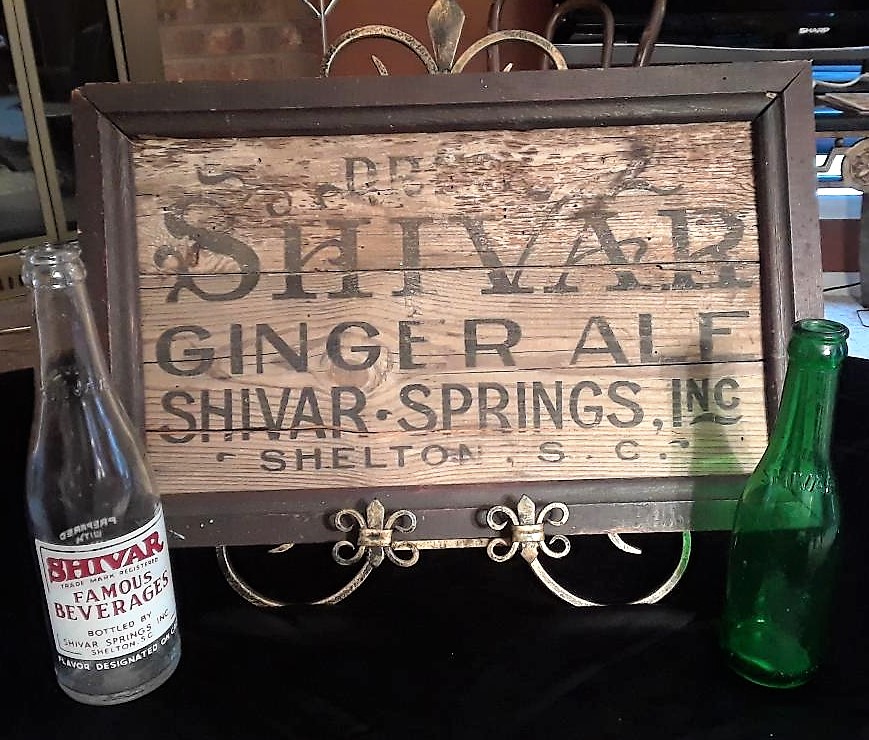
 |
Creating Genealogy Interest with a Family Fun Project! |
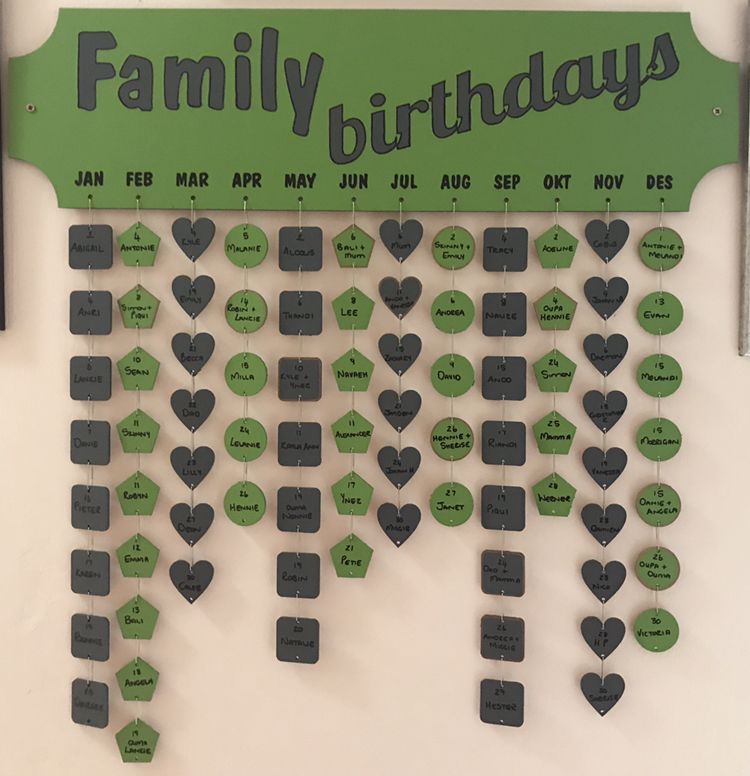
|
|
Two Ways to Save In March
This month's specials include two ways to save on renewals or new memberships to JustaJoy in March.
SAVE 20%! Use coupon code "Spring" (no quotes) to save 20% ($12.00) on an annual membership which includes full information on thousands of artifacts, "Joy Alerts" on up to 20 surnames, free posting and selling, "The Heritage Room" newsletter and free downloads of pictures and descriptions.
ONE YEAR FOR FREE! Family Bibles are JustaJoy's number one desired family artifact. We have been fortunate to match many (see "Happy Stories" page on the site), but we want to match many more. Therefore, any member posting a Family Bible during March will get one year free membership added to your current expiration date. If you are not a current member, please contact Joy to arrange to take advantage of this special. Phone 704-948-1912.
Both offers expire April 15, 2019 |
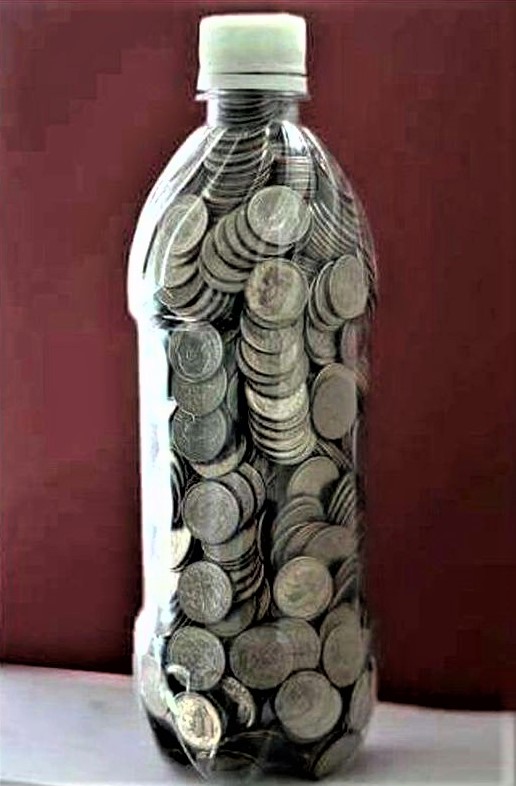 |
|
Regarding JustaJoy's Sold Inventory
New visitors to JustaJoy.com are sometimes disappointed that items they would have purchased have already found homes. This leads to the question of why we continue to include the sold items in search results.
The answer is simple. Even though JustaJoy.com is not exactly in the information business (we leave that to the big guys), we sure do not want to restrict our users from any information that the artifacts reveal. Quite often the artifacts expose information that can't be found anywhere else. Did you know GGGrandfather was a golfer? His trophy is on JustaJoy celebrating a hole-in-one! |
 |
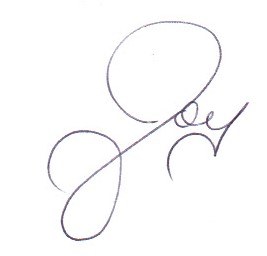
| "Black Memorabilia" - The Movie Some years ago, George & I participated in a project that has finally come to fruition. On Feb. 4th, this week, "Black Memorabilia", a documentary was aired on PBS as a part of their "Independent Lens" series honoring Black History Month. The movie has three distinct parts, one of which features our efforts to create an appreciation for artifacts that result from the African-American experience. The entire movie is meant to be quite thought-provoking and we were very honored to be a part of it. |
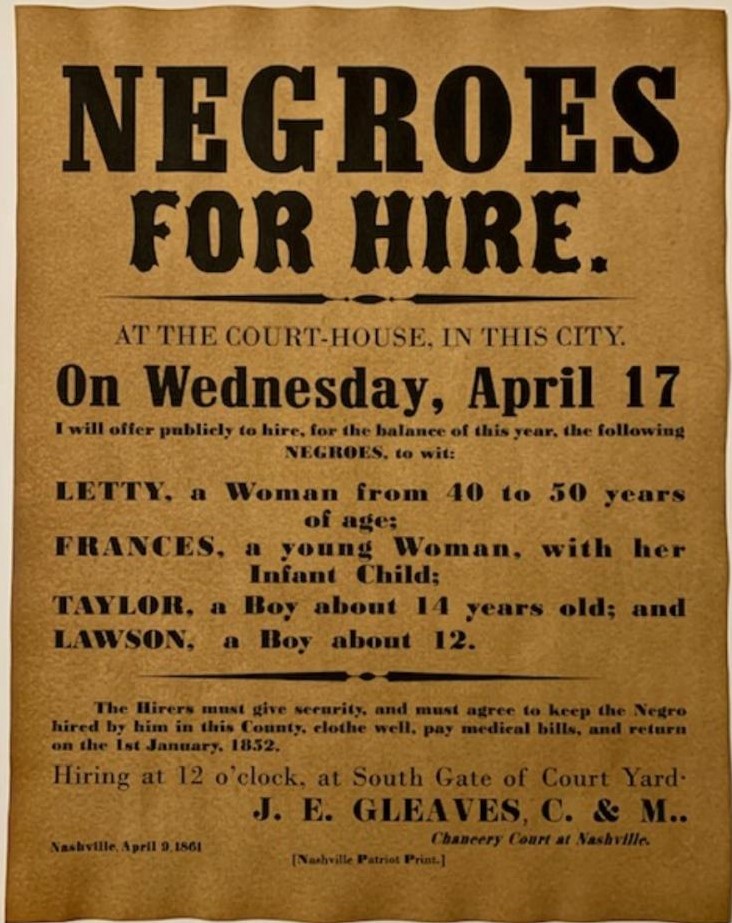 |
|
This Month's Collectible - Swords
Swords are one of the most desired Civil War collectibles. Thousands, if not tens of thousands were produced during the War. The high majority of these swords were prestige or presentation items, usually worn by officers. Cavalrymen also often had swords, probably attributable to the fact that they had horses to carry them.
The truth is, however, it was rare for these swords to actually be unsheathed and the number of soldiers who were killed by swords during the War is quite negligible, probably less than 20. Out of approximately 250,000 soldiers who were treated in Union hospitals, only 922 reported being injured by an "edged weapon" which would have included bayonets, pikes, lances, Bowie knives, and other small hand-to-hand weapons.
|
|
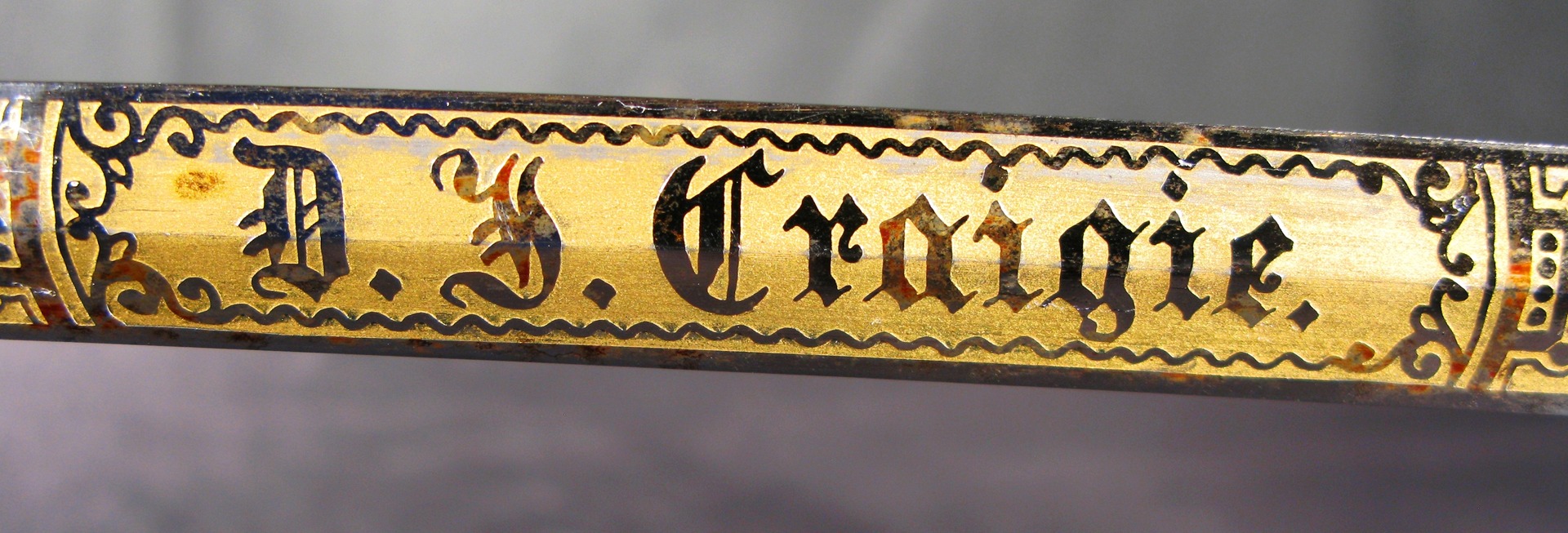
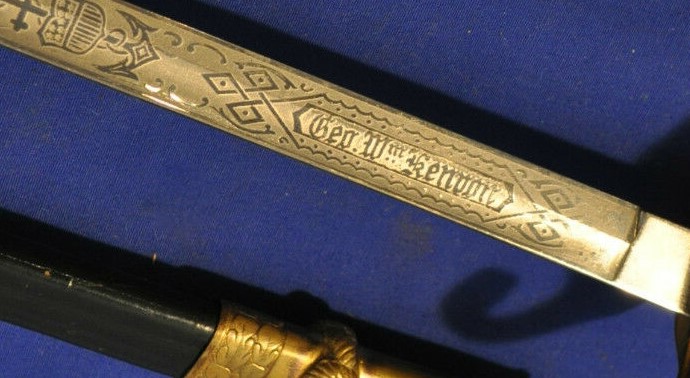
| Regarding Prices on JustaJoy.com You find my picture in the fire department. I was a crew member for three years. Although this cruise book was only $25.00 brand new, it has become priceless over the years. I've been looking for this cruise book for years, but the only ones I've come across were from sellers who knew how much this could mean to a former crew member pictured in this book and asking ridiculous prices, often over $350.00. Thank you so much!! This means so much to me. I'm on disability and I never thought I'd come across another copy of my cruise book that I could afford. I looked at the other items you are selling and it looks like you have quite a few yearbooks of varying branches, and ALL OF THEM are reasonably priced. I hope you sell all of them and continue selling military memorabilia for many, many years. Thank you and God bless you. |
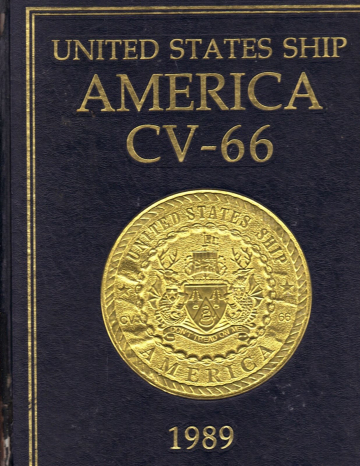 |
|
A Fictional Story Based in Truth
Fred, the antique dealer, is at the auction. It is just a few minutes before the auction starts and Fred has a chance to look around. He came because the auction was advertised to have a fair collection of Civil War items. As Fred looked about, he really didn't see anything very exciting - a non-commissioned officer's sword looked pretty good, but it would probably go too high. There were some period spurs, but one was broken and they weren't marked with a maker's name, so they would be hard to sell. There were some papers but Fred hated paper. So hard to take care of and he didn't want to have to read that writing with all those flourishes, anyway. He just pushed them back for someone else to consider. |
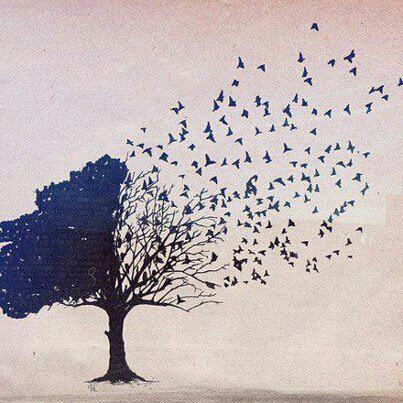 |

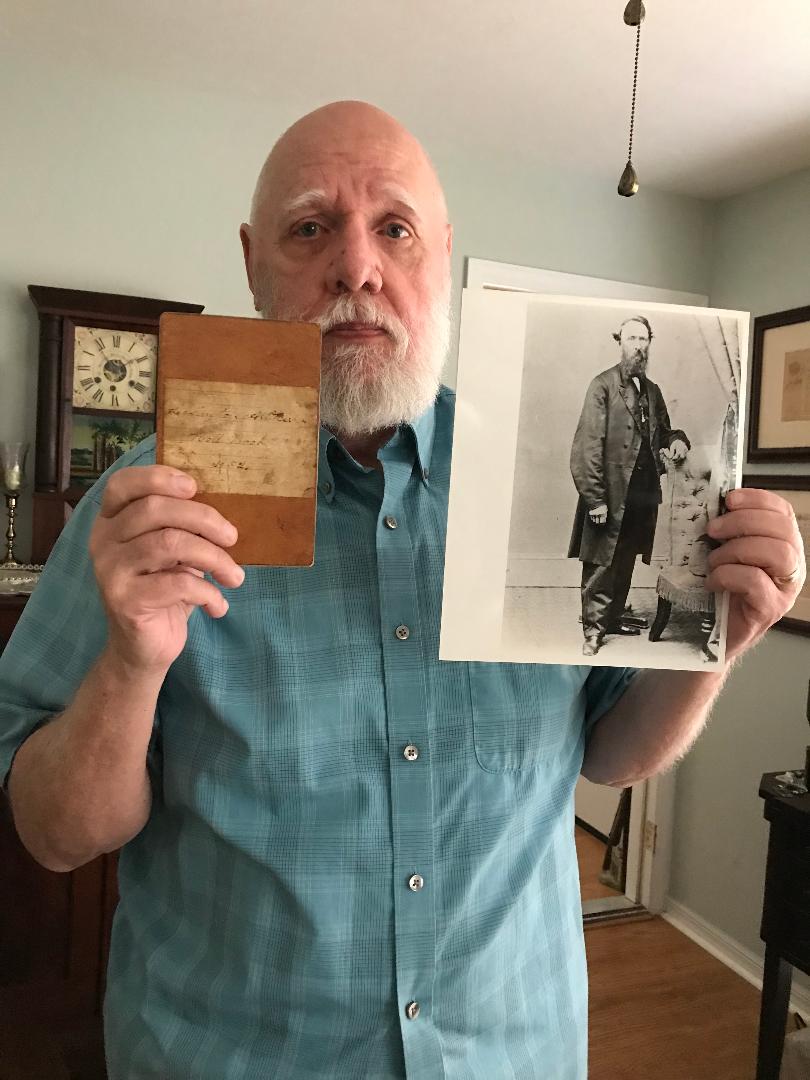 |
An "Orphaned Heirloom" is Orphaned No More
In one hand is a modern copy of a picture of a great-great-grandfather and in the other - an original item from his history. One hundred and sixty-six years separate the two items and they would probably never have been reunited except for a great-great-grandson, Seward Osborne of Newberry Florida, and his passion for the past.
The book lists all the names of the Lexington, New York Artillery Co. founded in 1852. It also includes information on many activities such as the purchase of uniforms, expenses related to "carting guns from Catskill" and much more. One of the men in the book is Porter Schermerhorn, Seward's 2nd great-uncle and brother to his 2nd great-grandfather.
Rarely has the Heritage Room been blessed with such excitement as ensued from Seward's initial phone call requesting more information on the little, handwritten book. From childhood memories, Seward readily recalled the very field where these early militiamen probably practiced and drilled. Such a wonderful match to such a deserving man. Thank you, Mr. Osborne for YOUR service to our country, as well (army veteran) and thank you for the service of your ancestors. |
|
TWO Years For the Price of ONE!
Let's start the New Year off with a good deal. Simply use coupon code "Two" (no quotes) to get two years for the price of a one-year JustaJoy.com membership or renewal! This is a fun offer that is usually quite popular. Offer ends January 31, 2019.
|
 |
This Month's Collectibles - Circus Memorabilia  |
|
|
On May 21, 2017, after 146 years, The Ringling Brothers, Barnum and Bailey Circus performed for the last time. It was considered a great victory for some animal lovers but the final performance also left a sense of sadness in many. Later, the same year, the movie musical, "The Greatest Showman" portrayed the origin of this, now extinct, art form. The movie lead us to believe that P.T. Barnum was both a good guy and a scoundrel - an apparent definition of the circus itself.
Amongst many seniors, memories of the circus trains are among their most favorite of childhood - the circus arriving in town, the unloading of the performers and wild animals and the subsequent "parade" as the menagerie made their way to their venue. The more modern reports of animal abuse eventually destroyed this panoply. with those childhood memories being the only vestige remaining, except, of course, in the antique world.
Circus items were already collectible, but the closures created much more interest. One hundred and forty-six years and thousands of employees create many, many artifacts as well as memories. Original, identified photos, payroll records, advertising, equipment and much more can be discovered. Websites such as thecircusworld.com and others have sprung up to celebrate and sell artifacts that vary from stock certificates to tent poles. There are also many circus museums to visit, the best known - the Ringling Museum of the Circus in Sarasota, FL.
|
EBay, "The world's largest marketplace" is an option, as well, for researching circus artifacts. A search on the word "circus" returns nearly 200,000 results, as of this writing, including some Milo Duplex strongman barbell weights starting at $20,000.
JustaJoy.com, of course, is much more interested in identified items of a personal nature. We are actively pursuing payroll items, identified photos, diaries and other items that tell more than the bright-colored broadsides could ever reveal. Circus people were often families within the "circus family" as they transformed themselves or others around them from ordinary and everyday to a spectacular part of the "Greatest Show on Earth". Finding these "behind the scenes" artifacts can be intensely revealing and dramatic. If you have circus DNA flowing through your blood, keep an eye on your "Joy Alerts". Who knows what might be discovered! Maybe, together, we can at least keep the MEMORY of the circus alive, even if an elephant has parted the show curtains for the last time.
|
A New Year - New Resolves
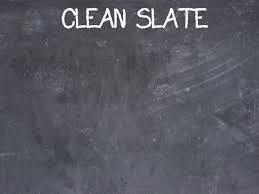

 |
A Significant Centennial - Remembering WWI
Sitting in an unnoticed corner of the Heritage Room is an iron rod about 5 feet long with screw-like twists at the bottom and coils spaced in regular intervals to the top. It is known as a "pigtail" and would have been used in World War I to string barbed wire in "no man's land". This was before tanks were invented, which happened later in the conflict and changed warfare, forever. Before then, "trench" warfare was the accepted method. Each side dug into deep trenches, large enough for an entire regiment, their offices and equipment and battles were conducted when officers on either side ordered their men, "Over The Top" into the no man's land that separated the two sides
.Placing the barbed wire between the trenches was very dangerous work that was often carried out under cover of darkness. The pigtail was designed to screw quietly into the ground and then be unscrewed to use again as the battlefield moved to another location.
If only this pigtail could talk. If it could, it might tell us about glorious victories and horrible defeats. It might even remember those first tanks or the airplanes, motorcycles, and motor vehicles that were used for the first time in War. It may have even witnessed the "Christmas Eve truce" - a short suspension of the War as soldiers from both sides laid down their arms to sing together, exchange mementos, and play soccer - only to shoot at each other again, the next day.
The centennial of the Great War has come and gone this month with very little fanfare in America to the chagrin of those, such as myself, who want to remember the great sacrifice of so many. 116,516 Americans died in World War I and many, many more returned home with severe lifetime disabilities from mustard gas, amputations, the flu epidemic, and more. At JustaJoy, we haven't forgotten these heroes. The JustaJoy inventory is laden with identified items such as dog tags, honor rolls, books, photos and correspondence. Not all of the WWI related items that can be found on JustaJoy relate to Americans. One of the pictures below shows a 1918 death card for Unton Moosbrugger, a German who died in the Great War. It is our feeling at JustaJoy, that the service of all of the 297,000 Americans who fought in WWI should be honored and remembered. To ignore their service is no different than ignoring the service of the fine American men and women who are serving our country today. They each promised faithfulness to our flag with their lives throughout the world.
Let's work hard to read and learn about this War that brought about so many technological changes. Maybe by creating a WWI tribute in your Heritage Room to remind children and grandchildren of the service of an ancestor. Another idea is to watch one of the great movies about the time. Two of our favorites are "The Lost Battalion" and "All Quiet on the Western Front", both of which are available on YouTube. Below are some examples of WWI artifacts available on JustaJoy.com. |
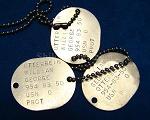
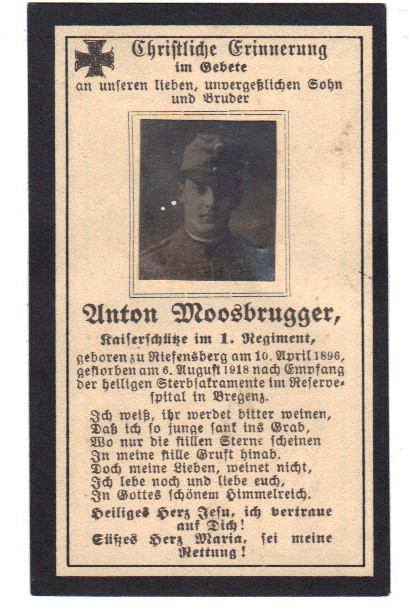
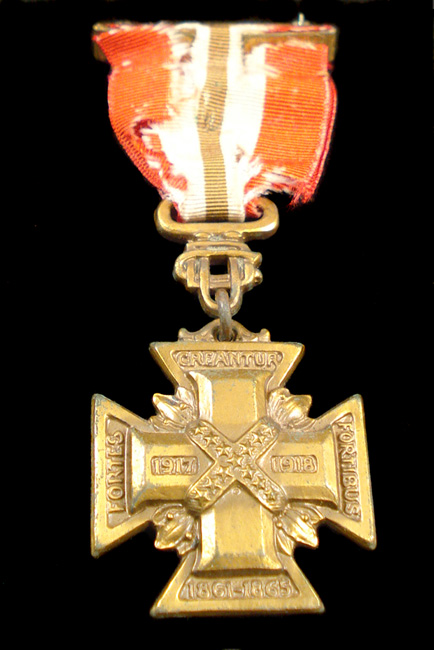
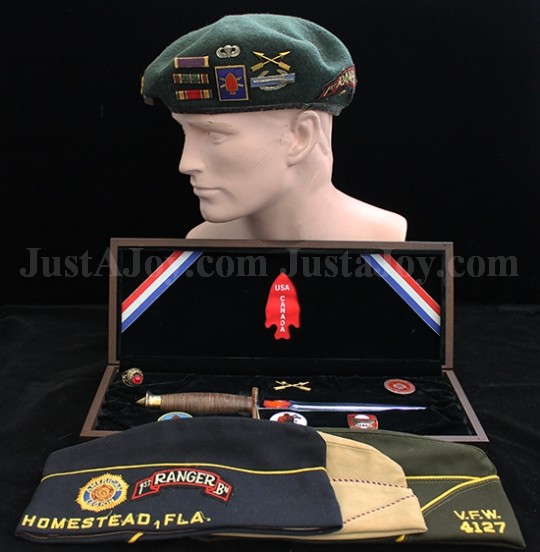
|
This Month's Collectible - Occupational Artifacts
Work is a big part of all of our lives. Of course, this was also true for our ancestors. As we grow in our understanding of who they were and how they lived, we can gain an extra understanding from items associated with their work.
JustaJoy offers many identified work-related items such as paychecks, resumes, photos, letters of reference, or payroll documents such as the one pictured. It is a 1901 payroll list for the newly opened Eastern Maine Insane Hospital in Bangor, ME. The name of the hospital has changed many times since and is currently known as the Dorethea Dix Psychiatric Center.
The document offers a great deal of information including 67 payees, their duties, rate of pay, and hours worked. Signatures of the employees, certifying their agreement with their pay, are also on the document.
These items may not be as important as Family Bibles or photos, but they add a little fun to our investigation, and hopefully, a little insight. |
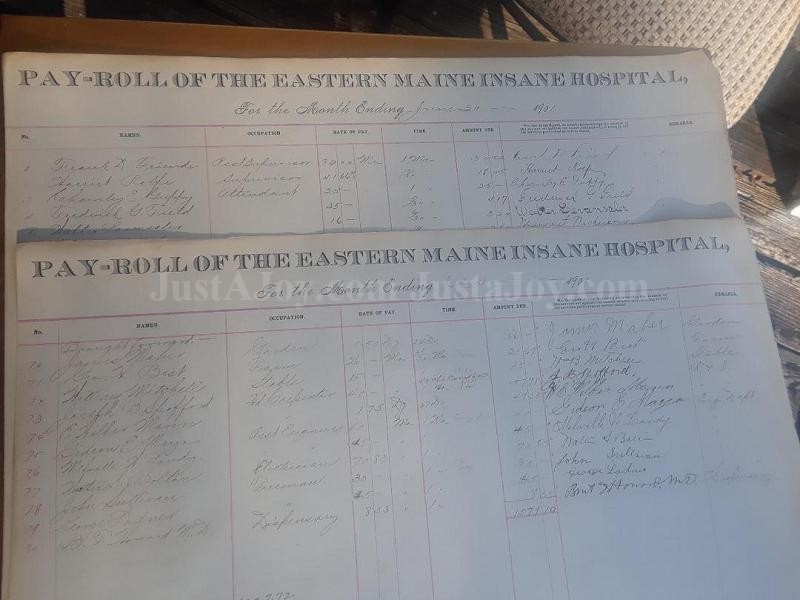 |
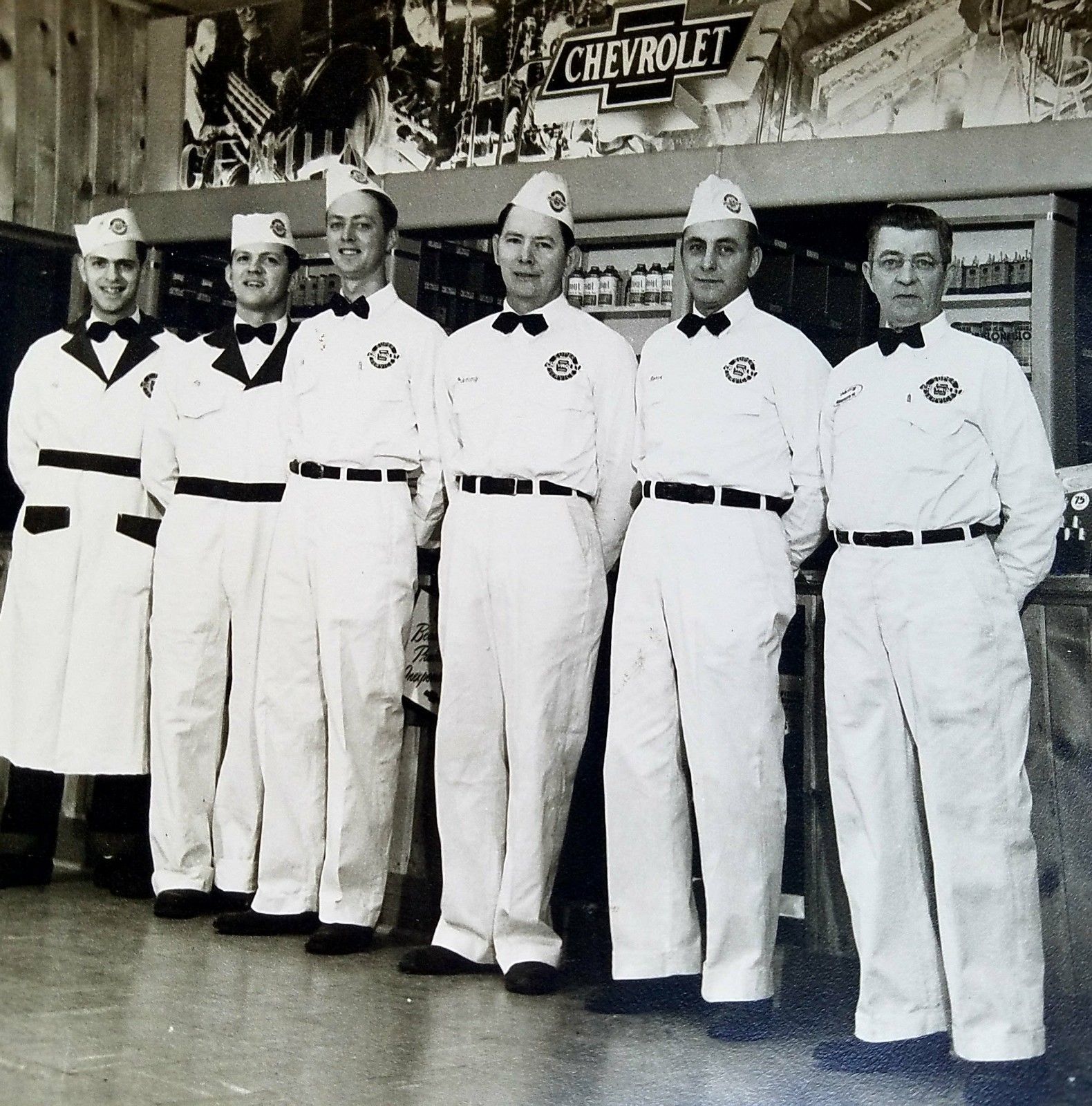
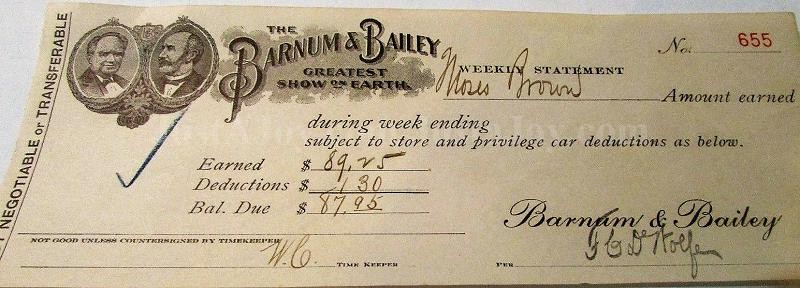
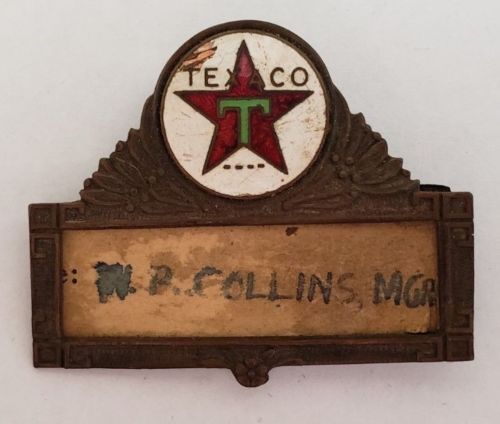
For Scorpios and Sagittarians - A November Surprise!
|
Memorial To A Mentor - Mr. John Weldon Pennington (Jack)
In October, Mrs. Betsy Ramsbotham from Mocksville, NC, joined JustaJoy.com. This was quite special because we are sisters of a sort. We were both trained by a soft-spoken pillar of virtue with a quick sense of humor - her father.
Mr. Pennington and I bonded over old paper. To us, few other antiques held such intrigue. He discovered the joy decades before me but nearly 40 years ago, as a young wife and mother, I became an avid student. He had a booth at the Metrolina Antique show where I would show up with what was left from a twenty-dollar bill after paying to get into the show and grabbing a cheap lunch. Before meeting Mr. Pennington, the antique show served as my getaway. I hadn't yet found my calling but I always knew it was there, somewhere - maybe hidden behind a porcelain vase or a pie safe. But then, I discovered a gentle, soft-spoken and wise man who had long since found his purpose, one that became mine, as well.
In my young years, I was occasionally impatient with his soft and slow explanations, but that was before I learned that any amount of time would be well worth the wait. In fact, if I had known the truth, he was probably justifiably impatient with this new patron who knew so little but wanted to know so much. Time after time, the last nickel would be counted as I purchased his treasures, some of which are listed on JustaJoy.com, today.
As the years passed we shared our love of historical documents, war posters, advertising pieces, and much more. Sometimes it seemed that the two of us were the only ones who knew how important that list of needed wedding items scribbled on WWII USO stationary actually was - importance that could not be reflected in the price. |
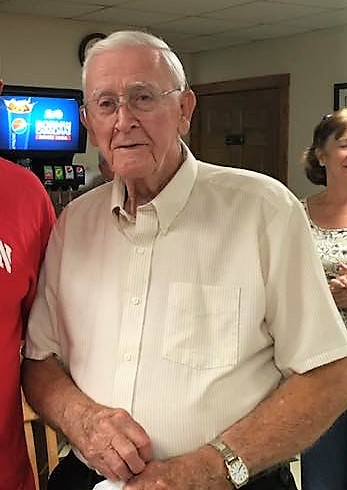 |
|
We good-heartedly argued and teased over the value of original, Titantic newspapers, Howard Cristy posters, flags, books, and Confederate money - even a Revolutionary War muster roll he found in a book. That worn, faded document became a foundation item as JustaJoy.com was being formed. More details of its story can be found on JustaJoy.com - the "Happy Stories" page.
Hours were spent in his booth, going through his "flip boxes" and table trinkets. Most people called him Jack, but he was always "Mr. Pennington" to me. I later made a joke that I bought so much from him, that I eventually had to stop buying or start selling. That joke held a certain amount of truth as JustaJoy Historical Treasures was born and later refined into the website.
Over the years I became friends with other members of his family. Besides Betsy, I met Lettie, his quick-witted wife, Martha, a second daughter, some of his grandchildren, even some of the Siberian Huskies that he so cherished. Betsy and Martha certainly inherited the graceful and kind mannerisms of their wonderful father.
In February last, we celebrated his life together at his beloved Methodist Church where he had sung in the choir for more than 70 years!
Thank you, Mr. Pennington for what you taught me and not just about the collectibles. I hope your spirit lives through the pages of JustaJoy.com. You will not be forgotten! |
|

- Christmas is coming. Would a JustaJoy.com subscription be just the right gift for someone you know? We can supply a gift certificate to wrap or hide in a stocking.
- What is great about being housebound during the winter months? You can post and sell (or give away) items on JustaJoy. No commissions of any kind!
- Don't ignore your "Joy Alerts". There is usually only one of each antique or artifact available.
- JustaJoy.com is a great topic for your next historical or genealogical society meeting. Let us know if we can help.
- All content in "The Heritage Room" can be copied and used by Genealogical or Historical Societies for free. Please just mention JustaJoy.com.

|
|
Supreme Court Artifacts - Then & Now
The Supreme Court has been in the news a lot lately, so we want to spotlight some of the family-related artifacts that can be found associated with this great body. Items signed by any of the 114 justices can easily be found but there are many other items to be discovered, as well. Law creates a ton of paperwork and many original items are still available.
Items such as attorney appointment letters and certificates to practice before the Supreme Court can be found, as well as gallery passes, general correspondence, non-trial related ephemera, and press photos. The Office of the Clerk of the Supreme Court has also created a lot of paperwork and correspondence since the beginning of the Court. Items associated with maintenance and other employees, suppliers, etc. can also be found. Such records may emerge from attics and basements forever. Besides original sources, published law books, trial transcripts and opinion pamphlets can be found complete with names and details of cases.
One of the first items added to JustaJoy in 2006 was an 1895 certificate to practice before the Supreme Court. It was found in a frame behind an image of Robert E. Lee. The attorney being certified was B.H. Moss of Orangeburg, SC. The item remains in our inventory - not yet discovered by Mr. Moss's descendants.
These kinds of artifacts remind us that we are making history, daily. Certainly, the gallery passes, newspaper reports, and any other items specific to the recent Kavanagh confirmation are now historical artifacts, however modern they might be. It is important to remember to save everything! |
|
Dates on Old Documents
For nearly a century in the United States, America's birthday was celebrated daily. Important documents and correspondence were not just dated with the words "in the year of our Lord", but also with the correct year since the independence of the United States. For instance, the date of this newsletter would be expressed, "October, 2018 - the 214th year of the Independence of the United States". The number is divined by subtracting 1775, the first year of the Revolutionary War, from the current year.
I have no knowledge of any documents that currently express dates this way and I am not certain when the practice began to abate, though I suspect it may have been around 1876 when America celebrated the first official World's Fair in Philadelphia, PA. The fair doubled as a celebration of the 100th anniversary of the signing of the Declaration of Independence.
The Centennial International Exposition of 1876
The Centennial Exposition of 1876 was a grand affair. Two hundred buildings were constructed on the Exposition's grounds surrounded by a fence nearly three miles long. Thirty-seven countries participated with exhibits and nearly 10 million people attended. Consumer products first displayed to the public included Alexander Graham Bell's telephone, a Remington typewriter, Heinz ketchup and Hires root beer.
Many identified souvenirs of the event exist. Some are pictured below. |
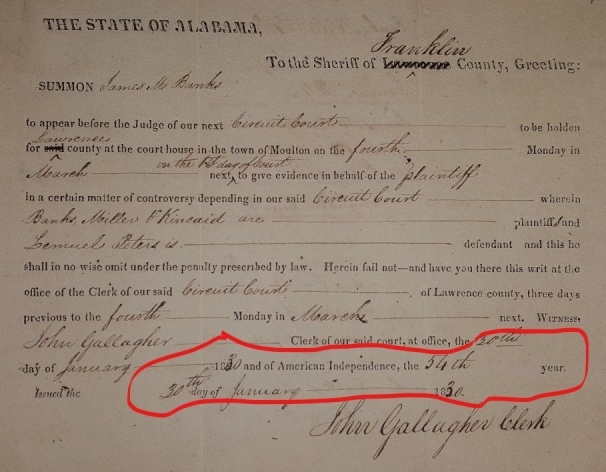 |
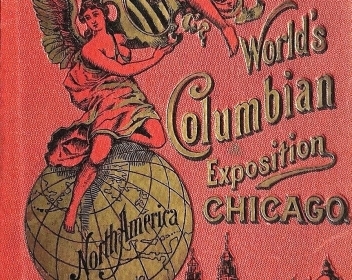
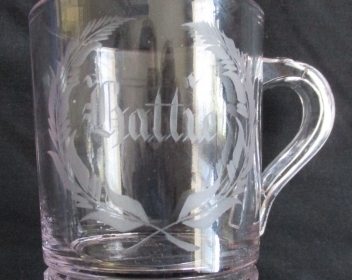
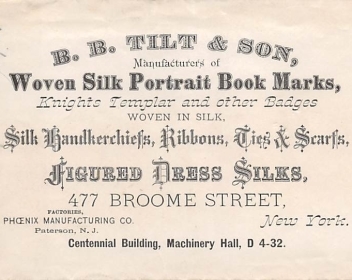
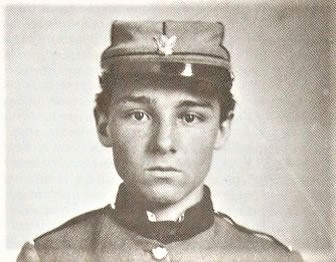
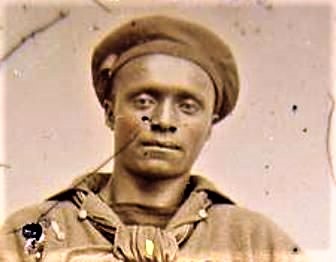
|
Do You Have a Witch in the Family?
Before you answer, please realize these paragraphs are not about your spouse's aunt. (With a wink.)
We have all heard about the witch accusations and trials that took place in the Massachusetts Bay Colony - not just Salem - during the 17th century. A story by Sue Shellenbarger published on January 15, 2013, in the Wall Street Journal told of Betty Jo Blevins of Alliance, OH who had discovered her ancestral witch - Mary Bliss Parsons. Betty Jo found out that her fifth great-grandmother had spent several months in prison awaiting two separate trials related to the deaths of a neighbor, a baby, and a cow. In spite of being acquitted, historical accounts indicate Mary could never shed the stigma.
But witchcraft did not end during the early ice age. As recent as 2005 the Supreme Court reviewed a case to allow "Satinistic" beliefs to be considered a valid expression of religion for Federal prisoners. The idea was upheld by the Court.
Today, the Witches and Pagans Facebook page has 328,345 followers as of this writing and brags of over 4 million page downloads a year! Yes, they sell advertising. |
|
 |
White Witches
Another interesting point to note is that, according to Wikipedia, all witches are not bad. "White witches" are good and are sometimes mistaken as "earth angels", which, according to Wikipedia, is not completely factual. Presumably, the term "white" is not a racist definition but one based on beliefs. White witches are supposed to direct their magic for the greater good and follow a moral framework set by the "Wiccan Rede" - a statement of conduct developed by the neopagan Wicca religion. |
|
Hope that puts you in the Halloween "spirit". Please have a "magical" month as we celebrate all that Fall has to offer. |
|
|
|
This Month's Collectible - Musical Memorabilia
I am often asked, "Where did the idea of JustaJoy.com come from?". I usually explain how it emerged as an adjunct to our antique business, which is true. But there is actually a more personal reason, as well. My father, John Chilton Hughes, was a musician. In my childhood memories, it seemed he could play any instrument he could figure out how to work. He played on the RKO circuit in the late 1920s and early 1930s. The RKO circuit was a chain of vaudeville and live radio shows founded in 1886. The name of my father's group was the "Ace & Duece Band".
My father spoke of suitcases full of musical memorabilia associated with the band - broadsides, banners, programs, newspaper reviews, photographs, and fan mail. By the time I came along, nothing was left but a couple of ragged postcards from fans, a small newspaper clipping, and a picture. In the photo, my young Dad (long before I knew him) was the one in the back left who looked a little scared to me. |
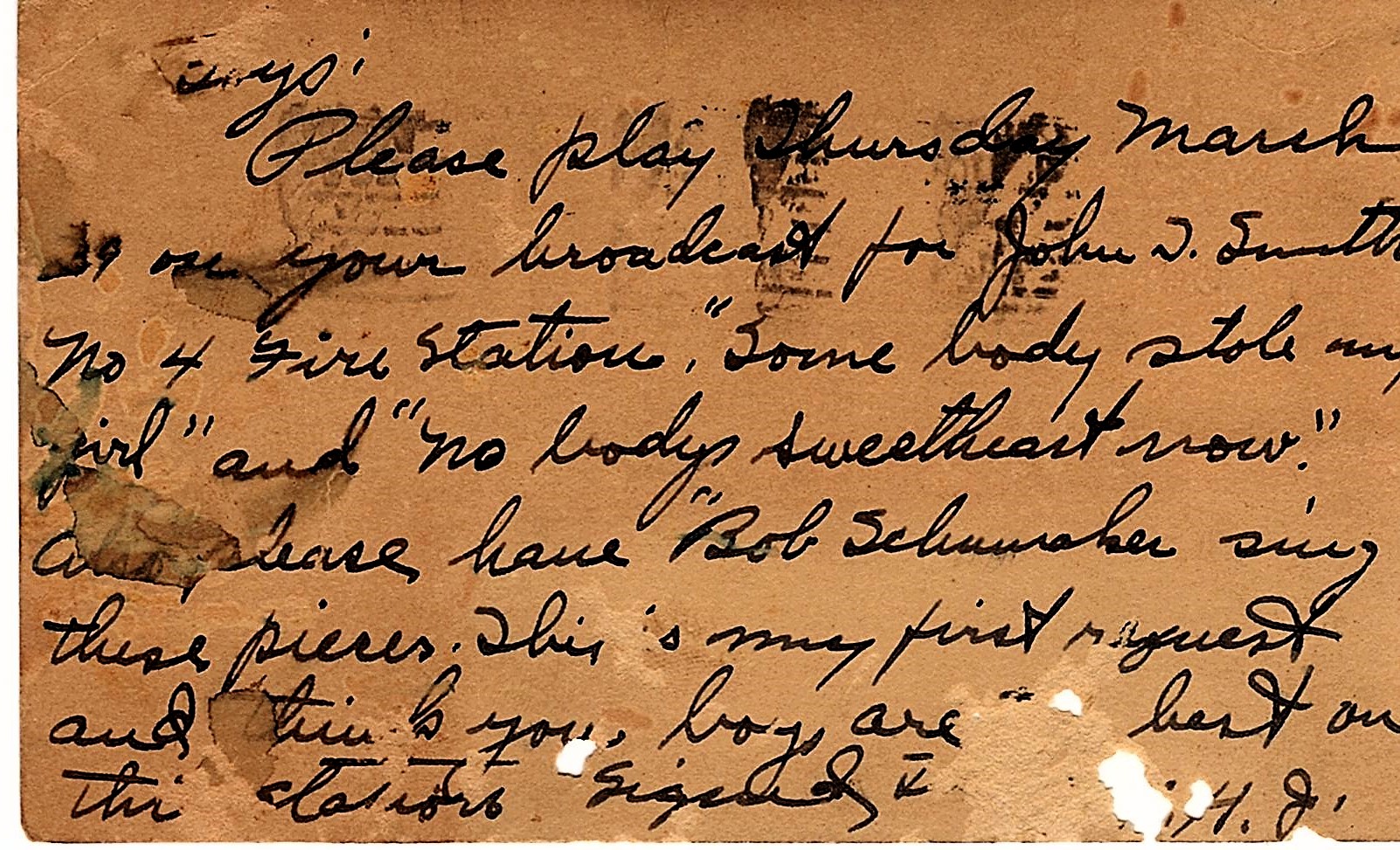
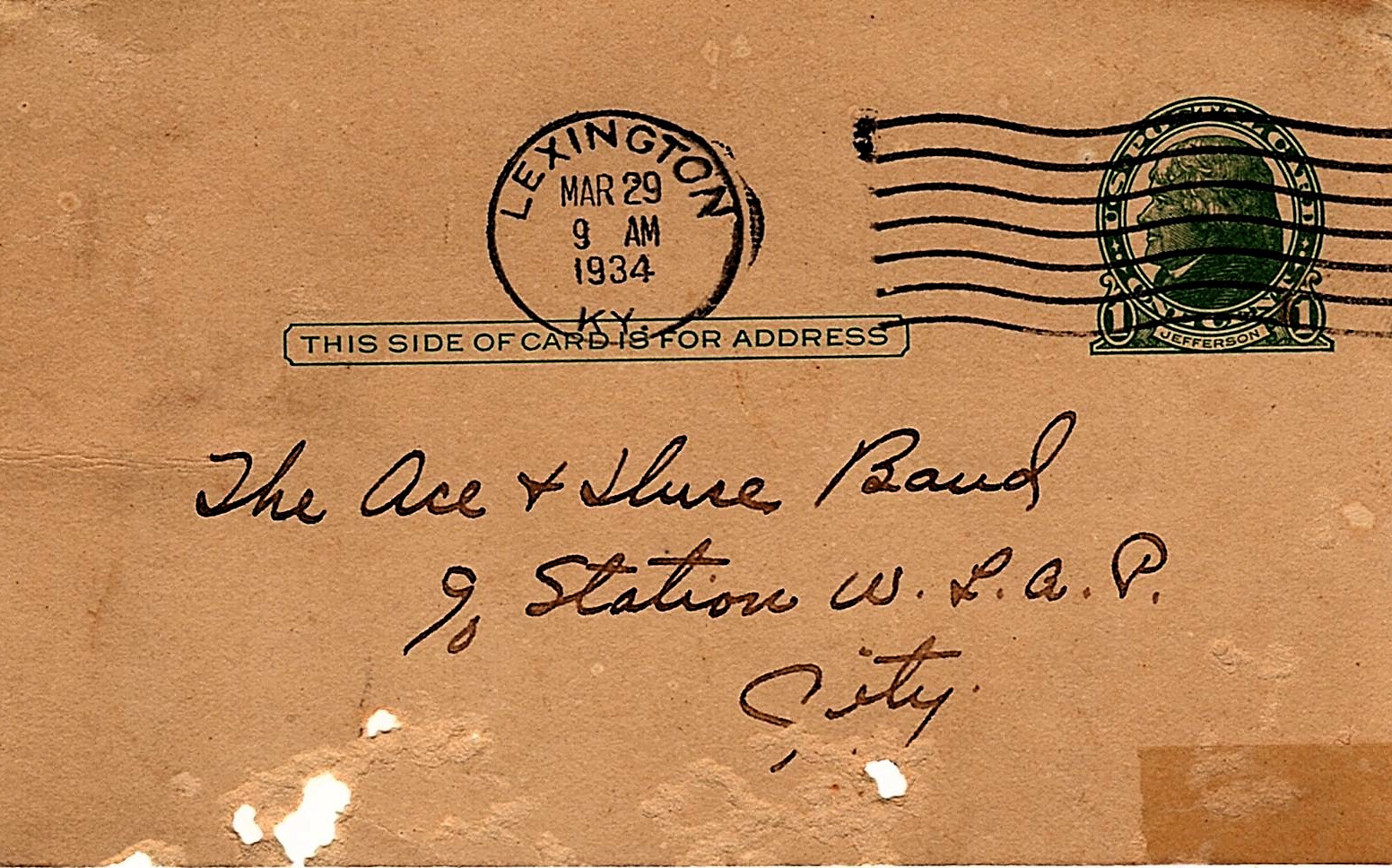
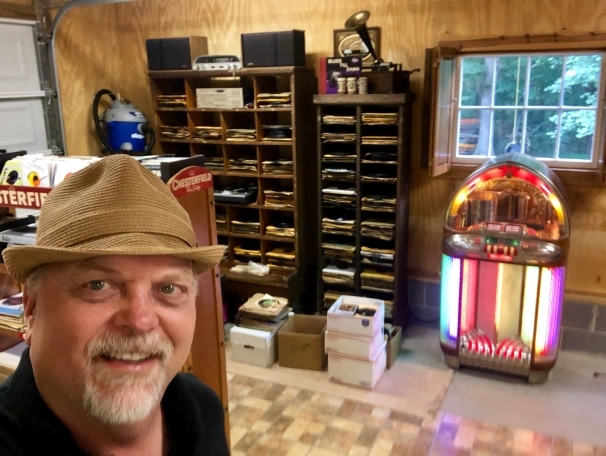
Special Offer from Mike Rawlins!
Mike has agreed to share his extensive knowledge and collection with any JustaJoy member who may be looking for a rare, extant recording of a family musician. Mike has made this dream come true for many others and shares in the joy as matches are made. There is a high percentage of early recorded music that is only available on 78 rpm and those are the ones he likes best.
Mike's collection has evolved from decades of sorting the old 78's. He especially prefers pre-WWII blues and gospel and 1940's and 50's rhythm and blues as well as rock recordings designed for the jukebox. "Please let everyone know I am still buying, selling and trading!" says Mike.
Feel free to contact him at Mike-Ronda@att.net.
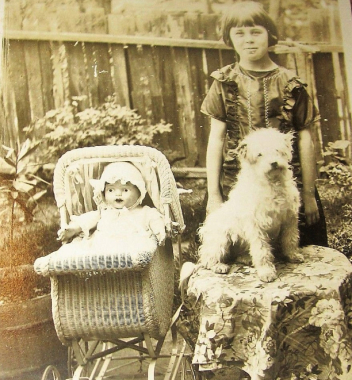
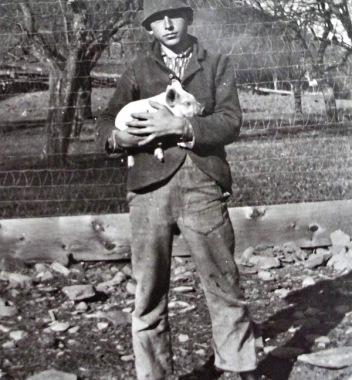
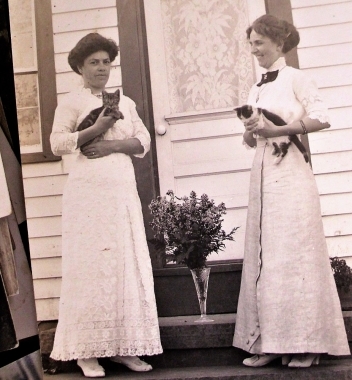
I have an older friend who recently showed me legal paperwork that he and his wife had procured regarding their final wishes. Their desire was to be cremated and their ashes spread over two graves in a pet cemetery where their two favorite dogs were buried. At first, this sounded quite strange to me, especially since this couple has children. Are the kids OK with this plan?
But my friend's proclamation put me to thinking about how important animals can be in our lives. I, for one, have certainly shed many a tear at the loss of dogs, cats, horses, even a dear duck killed by a dog. These sentiments were, no doubt, felt by our ancestors as well, especially those with an agrarian lifestyle, whose daily deeds intersected with animals of all sorts.
Many old pictures show animals alongside their masters and sometimes have their names. Usually, these pictures portray dogs, cats, or horses, but it is quite easy to find prize bulls, chickens, birds, goats, cats, snakes, and more. These pictures offer an insight into an ancestor's priorities. If you believe in "DNA Memory" maybe it explains our modern-day love for animals, as well. (As demonstrated by many Facebook profile pictures.)
My "heritage room" contains many pet associated items including three bent pieces of brass with the words "Jimbo", "Cody Micco" and "Dandy Boy" hand-punched into their face. These are halter nameplates for three horses I cherished as a child. To this day, I can tell you much about each of their habits and conformation. Probably not the kind of artifact that will be appreciated for generations, but quite valuable to me, fifty years later.
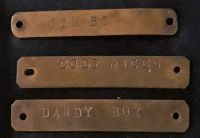
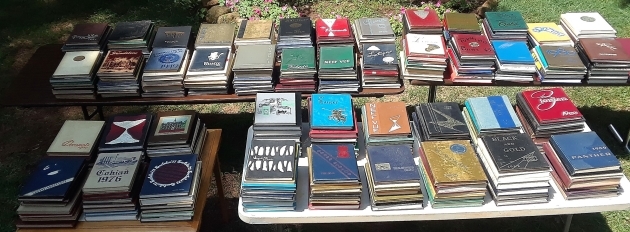
We have to add a note in appreciation of Ancestry.com's newest ads featuring yearbooks. We feel a little history may be in order.
Yearbooks were initiated in 1806 by Yale College. The first known yearbook was inauspiciously titled, "Profiles of the Class Graduated at Yale College". There are no known copies of this book and should one emerge, it would be quite valuable.
The oldest surviving yearbook was issued in 1845 by Waterville Academy in New York City. It even contains images of the students in the form of daguerreotypes pasted into its pages.
Later, as photography evolved, so did the process of adding them to yearbooks. Students would order many copies of their own photos to exchange with others. After a collection was achieved, it would be possible to place them into a book that could be bound - an expensive process.
Beginning in the 1920s, other classes besides graduates began to be featured. With improvements in printing and photography, the popularity of yearbooks grew rapidly.
Today, there are approximately 50,000 public and private high schools in the United States and each usually produces a yearbook each year. That adds up pretty quickly. That doesn't include elementary, college, or military!
Classmates.com advertises more than 70,000 versions and admits that is only a small percentage of the potential. They sell digitized copies for $75 - $100 each.
Ancestry.com is currently advertising information (only) from more than 300,000 yearbooks which is probably less than 10% of the total number of yearbooks ever printed.
Of course, JustaJoy.com sells originals. They may contain pressed flowers, dance programs, hair, or other memorabilia. There may even be a note or signature written to a classmate by an ancestor - a treat indeed. Our primary interest is older versions from the 1900s through WWII. The WWII high school yearbooks may contain the last identified photo of students before they were lost in the War and we consider that possibility of great significance.
A JustaJoy general search for the word "yearbook" returns more than 500 entries - most complete with full names. Some have already found homes, but the information remains forever to be discovered by other researchers.
Yearbooks can be an important part of our understanding of our ancestors in many ways. How else can we find out how Great-Grandpa looked in a vintage football uniform or that he was voted "Class Cutest"!
Reminders
- Even though temperatures are still hovering around 90 degrees at many places in the United States, perhaps it is time to start thinking about Christmas! Is there someone on your list who would appreciate a lifetime JustaJoy.com membership? We will even provide a lovely Christmas gift certificate for you to present!
- Would you like to be a "Heritage Hero" for another family? All JustaJoy.com members in good standing can post items for free to sell or give away. We are glad to help with pricing, as needed.
- Are you a member of a historical or genealogical society? Please consider doing an introductory program about JustaJoy.com. We can help!
- And if your society has a library with a computer, institutional versions of JustaJoy are free!
- Remember, all members have full access to all of the items on JustaJoy, not just the ones associated with the 20 surnames on your account. Explore away!
- Remember, "Joy Alert" links only work if you are logged in.
- Well, that is all for now. I have a whole stack of new items to add to JustaJoy. I better get started! Thanks for reading. See ya' next month.
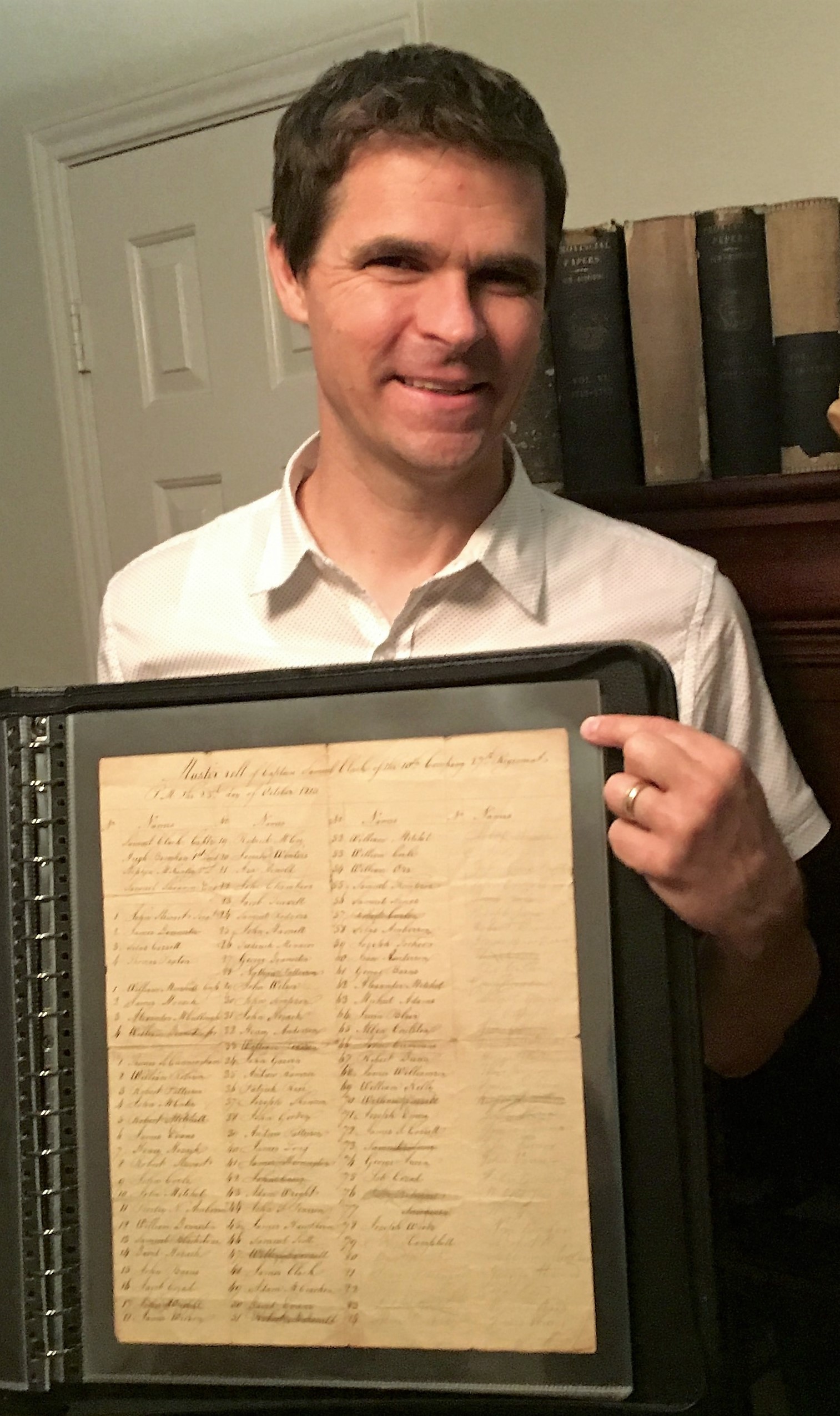 |
A War of 1812 Muster Roll Happily Restored!
Some exciting correspondence has transpired at the Heritage Room over the last couple of weeks. It is quite doubtful that War of 1812 Captain Samuel Clark could ever have guessed that he would be the source of such excitement more than 200 years after he signed his name on his Company's muster roll, but that is what has happened. Usually, genealogy research leads to the discovery of family artifacts, but this time the story was in reverse. The artifact actually led to the discovery of an ancestor - and an important one at that.
Jonathan, Samuel's 3X Great-grandson, used dogged research and DNA to establish with certainty that the War of 1812 Captain of a Mercer County, PA company was, in fact, his ancestor.
"To be honest," Jonathan wrote, "I'm astounded by what I'm finding out...I believe this document may be much more important than I thought. What it means is that Captain Samuel Clark and Margaret Hosack were my 3X Great Grandparents! This was not discovered previously and our family has been looking very hard for decades. I am so pleased! You can't know what an exciting breakthrough this ended up being.
"Maybe not Mr. Clark, but rest assured this story brought a smile or two to the Heritage Room, as well. |
|
How About a LIFETIME JustaJoy Membership!
No doubt some of the people reading this newsletter will live to be 100 years old. So why not save money by becoming a JustaJoy.com Lifetime Member? Even if you are already 80 and become a centenarian, that is only 2.7 cents a day! And who knows which of those days will be the one that JustaJoy discovers something very special for you and your family.
All premiums go to sustaining our site. Dollars leftover after server fees, etc. usually go to procuring additional artifacts. So not only are you paying for the pleasure of opening those treasure chests called "Joy Alerts", you are helping to keep this site alive and kicking.
Thank you for your best consideration |
 |
|
Is There A Hobo In Your Heritage? ...Was He An Artist? This Month's Collectible - Tramp & Hobo Art
Tramp art is a form of folk art that originated in Germany in the 1860s by "Wanderbuersons", wandering apprentices who were likely comparable to the rail-riding hobos we associate with the Depression. Our study of this form of art has revealed a very interesting distinction between the American transients.
Even though they often shared the same trains, "jungles" (campsites) and jail cells, "tramps" were distinguishable from "hobos" because they generally had their own society with its own rules and hierachy. According to "The History of Tramp Art" in an article at www.folkartisans.com, tramps took pride in their idleness and were contemptuous of hobos who would occasionally take jobs to support their wandering ways. Hobos, on the other hand, feared tramps as loafers and thieves, possibly even murderers. The two classes of vagrants did, however, coexist, sharing Mulligan stew and post-meal campfires where each would practice their particular art. Hobos used their pocket knives for carving chains, figurines, or a "ball-in-the-cage". Tramps largely created chip art boxes, frames, and other items from cigar boxes - many with very intricate detail. Identified pieces are somewhat rare, but not impossible to find. The pedestal box shown in the pictures above was made by a former Civil War soldier from New York named James Carol. It is currently offered for sale on JustaJoy.
Experts in tramp art can also sometimes identify a piece by its individual style. This is the case with artists John Zubersky from Chicago who used shot glasses and coins to make his patterns andJohn Zadora from Pennsylvania made heart wall pockets with birds and horseshoes in his art. Both of these men have interesting background stories that contribute to the appreciation of their pieces.
Hobo art carvings, such as the small statue pictured to the right, can also be found. It is identified to Paul E. Caron and available on eBay for around $35.00.
It is fun to imagine these free-thinkers on the road, existing solely on their smarts while facing hunger, angry policemen, hostile dogs, and other problems. Yet even in the worst of conditions, they found time to create art that we can enjoy, today! |
|
|
2018 - 100th Anniversary of World War I
One hundred years ago, to the very date of this writing, the final push began that ultimately ended World War I. It was known as the "Hundred Days Offensive" - a rapid series of Allied actions that began in August, 1918 with the Battle of Amiens. A series of succesful battles resulted in pushing the Germans back beyond the Hindenburg line and lead to the Armistice.
Perhaps we, at the Heritage Room, simply don't know where the commemoration events are, but this anniversary seems to be completely overlooked. We have read of no large celebrations in Washington, DC or elsewhere. There isn't even a movie epic to properly take note of the anniversary. But in the Heritage Room, we want to remember those soldiers. The very least we can do is recognize the anniversary of the first World War.
JustaJoy has hundreds of identified World War I artifacts in inventory - photos, honor rolls, dogtags, sheet music, correspondence and more. If you have a World War I ancestor, please be sure to click the link below to search for artifacts from their service. |
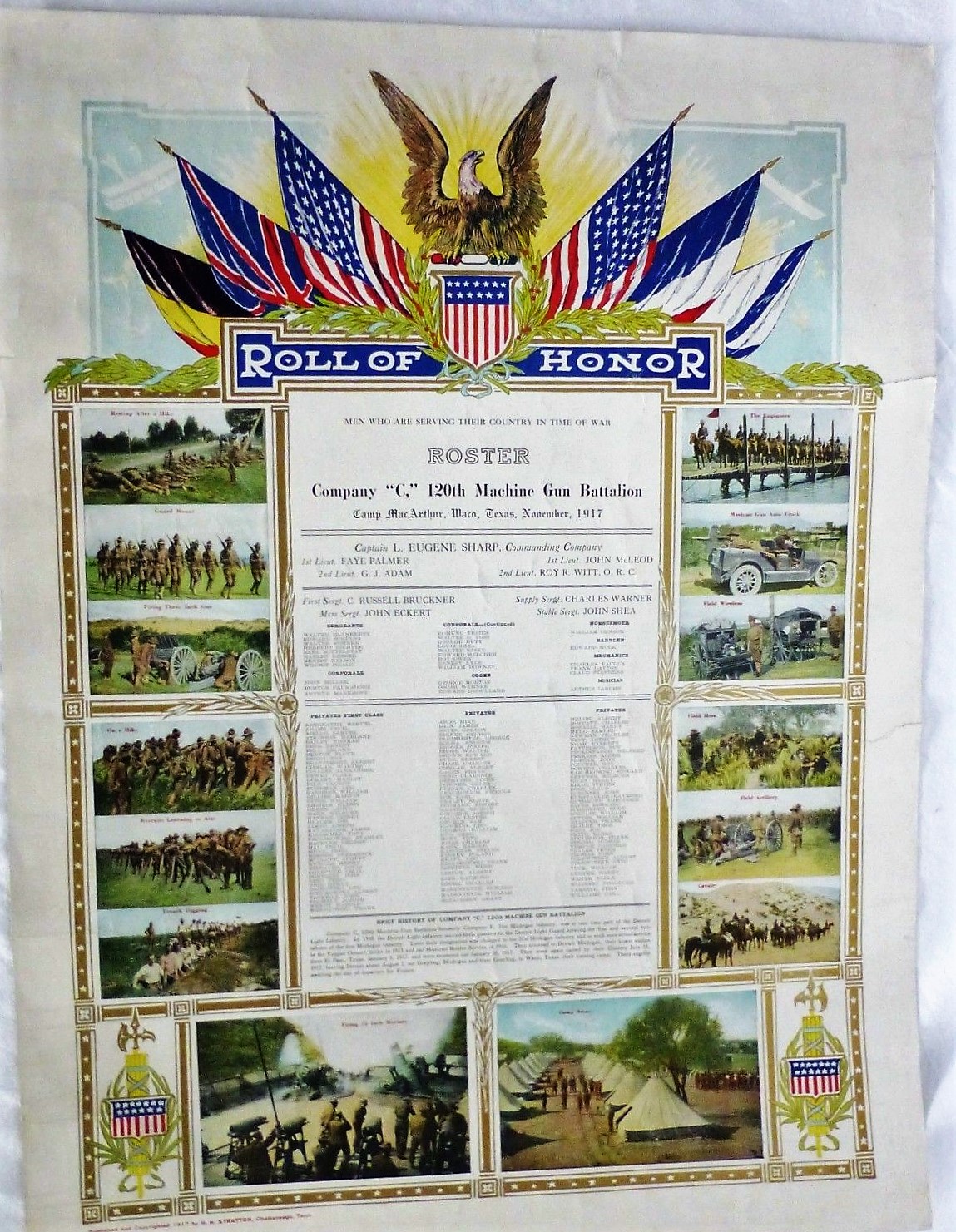 |
|
An Afternoon Essay On An Essayist - Thomas Paine (Nothing To Do With Artifacts)
Thomas Paine had only nine people at his funeral. Some accounts say six. He had fell out of worldwide favor by the time he died in Greenwich Village in New York in 1809, because of his radical views on religion in general and Christianity in particular - views that had led to convictions and imprisonment in England and France.
What an inauspicious end to the author of the most widely sold book, per capita, ever written in America, "Common Sense" - a book that set the stage for the American Revolution; a book that was, most likely, the source of Thomas Jefferson's famous sentence, "All men are created equal"; a book that has become widely forgotten except by arbiters of American history. |
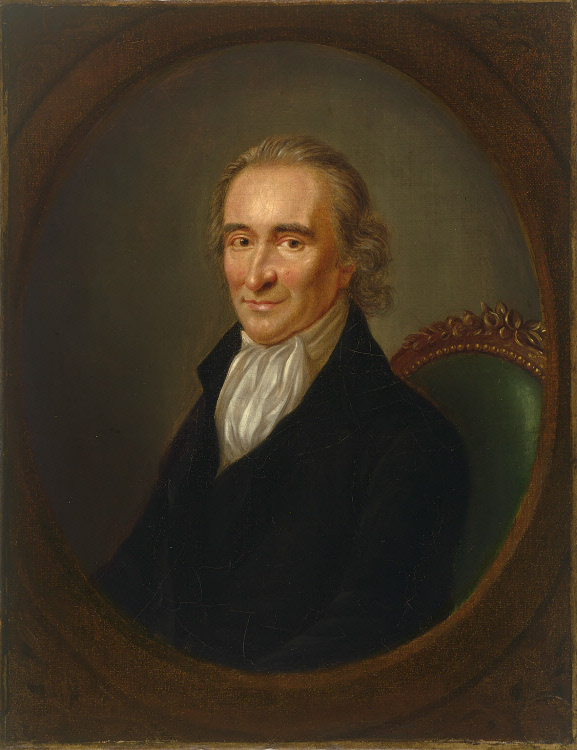 |

|
Stork Tracks Collectible Birth Commemoratives |
 |
Birth Certificates
These first official documents are of great importance to genealogists. They are considered prime evidence of someone's existence with information that is erroneously believed to be 100% reliable. The history of these documents goes back as far as the mid-19th century in some countries, but in the U.S., an organized and (somewhat) dependable system did not completely materialize until WWII. Our review of these documents revealed some interesting facts. |
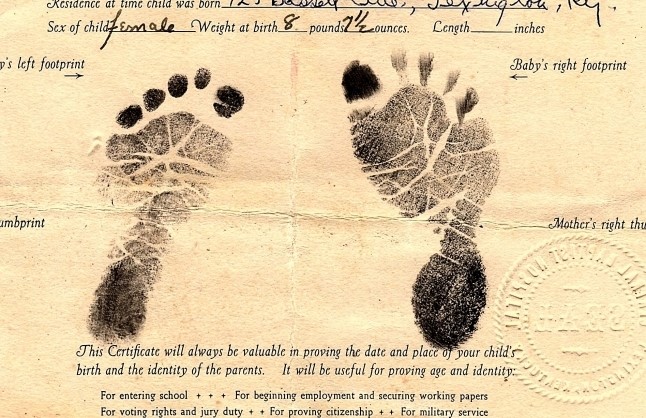 |
|
When a time (ex. 10:42 a.m.) is given on early certificates, it may represent an instance of multiple births (twins, triplets, etc.)
Ages of parents and residences on birth certificates can be inaccurate for a number of reasons, usually related to avoiding laws of the day.
The absence of a father's name may indicate death prior to birth (usually indicated with the word "deceased" or illegitimacy. A law passed in the U.S. in 1875 decreed that fathers had to give consent before using their name on the documents.
Sea & Sky Births - Our study of birth certificates uncovered an interesting situation involving births at sea or in an airplane. What is the nationality of the baby? It depends on many things and each country makes it's own laws. It may depend on where the plane or ship is registered, where the birth took place (ex: a country's air space) or the nationality of the parents. The U.S. State Dept. dictates that children born in international waters have an official birthplace of "AT SEA" whereas births in territorial waters would be listed as the name of the associated country. A child born in a country's "air space" may be a citizen of that country if the country claims sovereignty "to the heavens". Otherwise, the official birthplace will be listed as "IN THE AIR". An interesting side note is that some airlines give free flights for life to babies born in their metal.
Modern problems with birth certificates - Countries around the world are struggling with the best procedures to record births involving in vitro fertilization, sperm and egg donors and surrogate mothers. These types of births are growing. In 2013 CBS reported there were at least 5 million "Assisted Reproductive Technology" (ART) births worldwide and, of course, there are many more now. The legal case of one "mother" who wanted her name on the birth certificate in spite of contributing no DNA to the baby, went all the way to the Supreme Court. She failed in her endeavor and was listed as an adoptive parent.
|
|
|
|
In 1990 Debbie Owen gave birth on a British Airways flight from Gwana to the U.K. She named her daughter Shona Kirstie Yves. Her initials spelling SKY! |
Baby Books and Other Emphemera
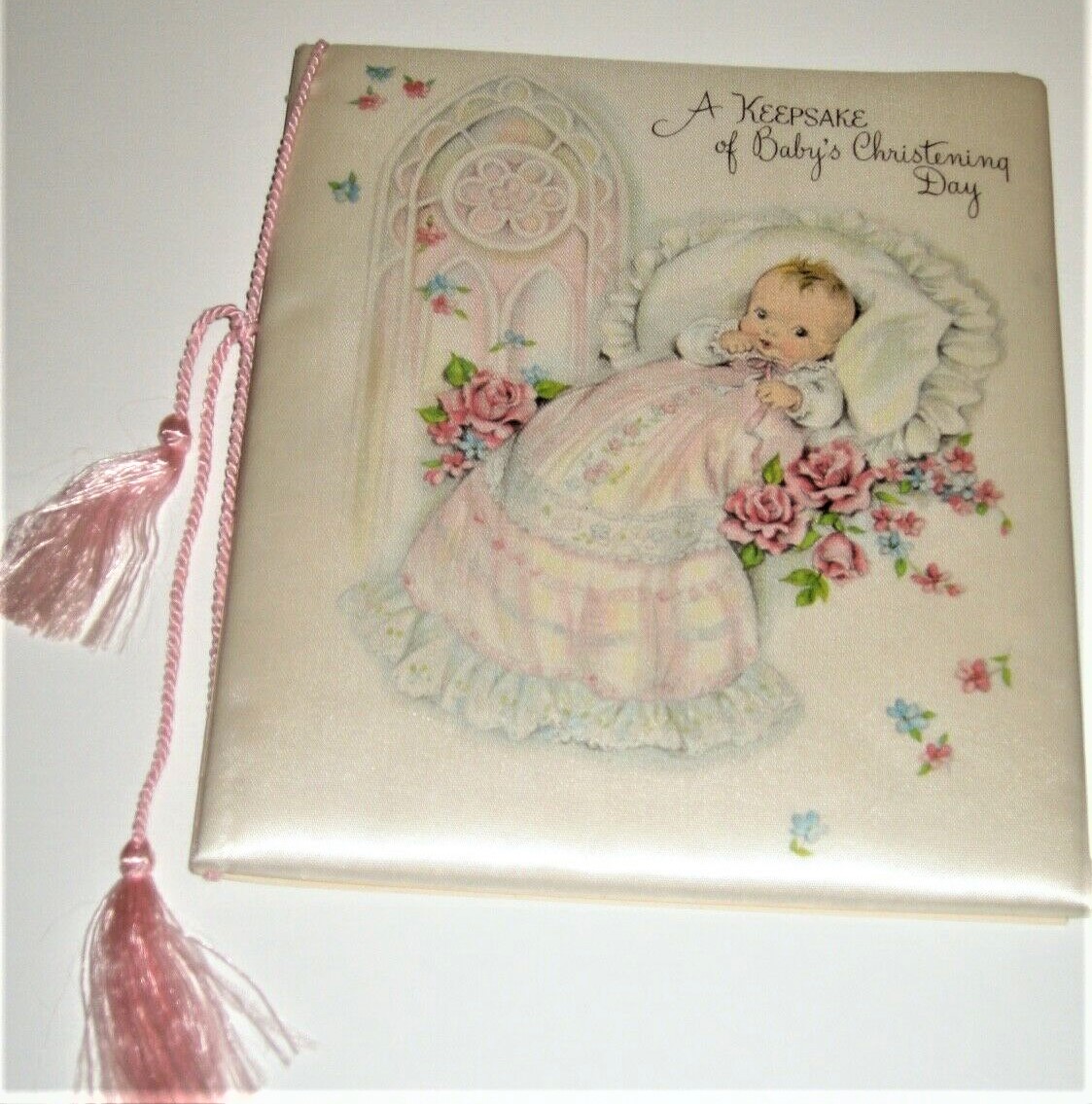
Engraved Items
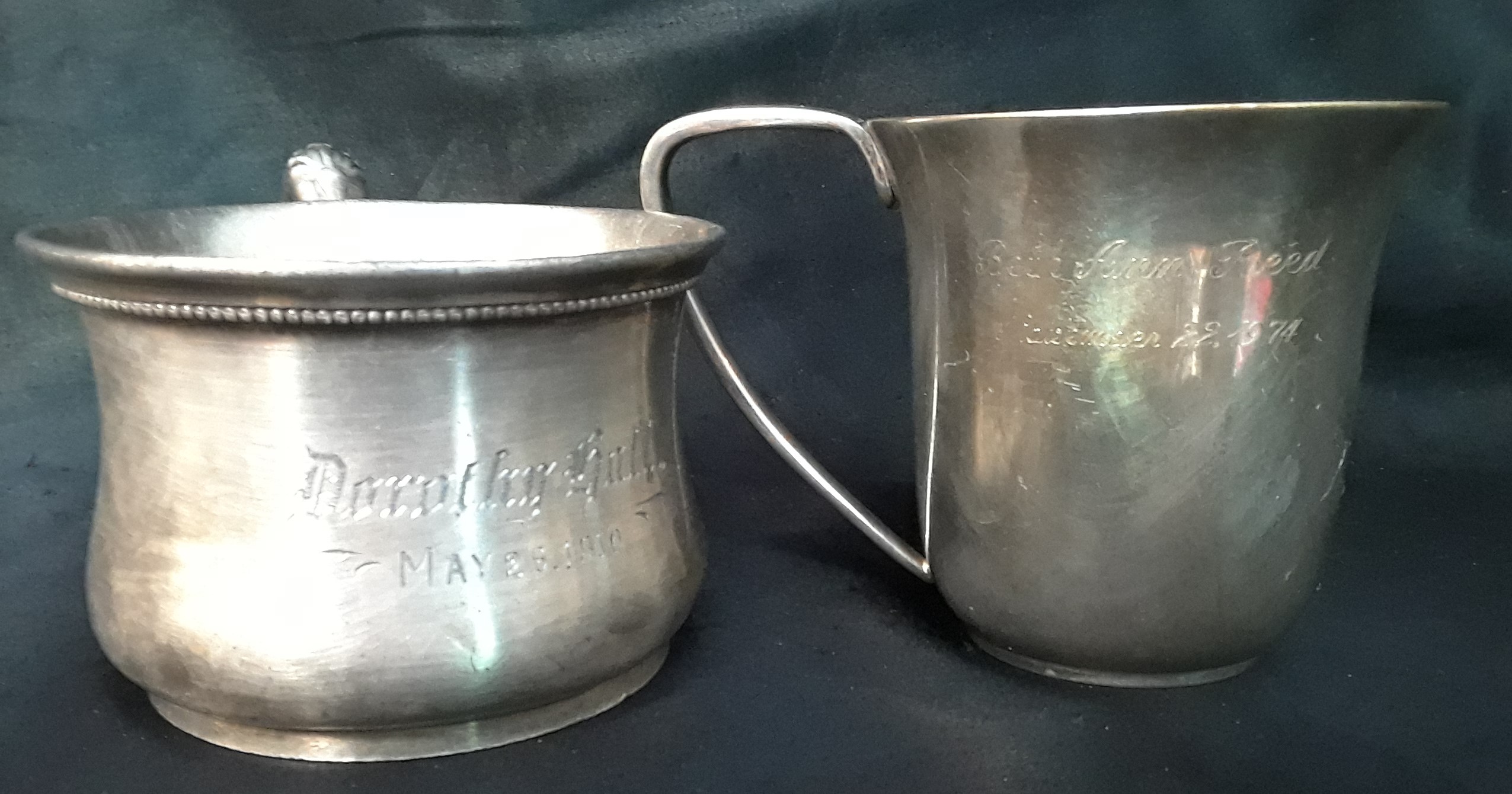
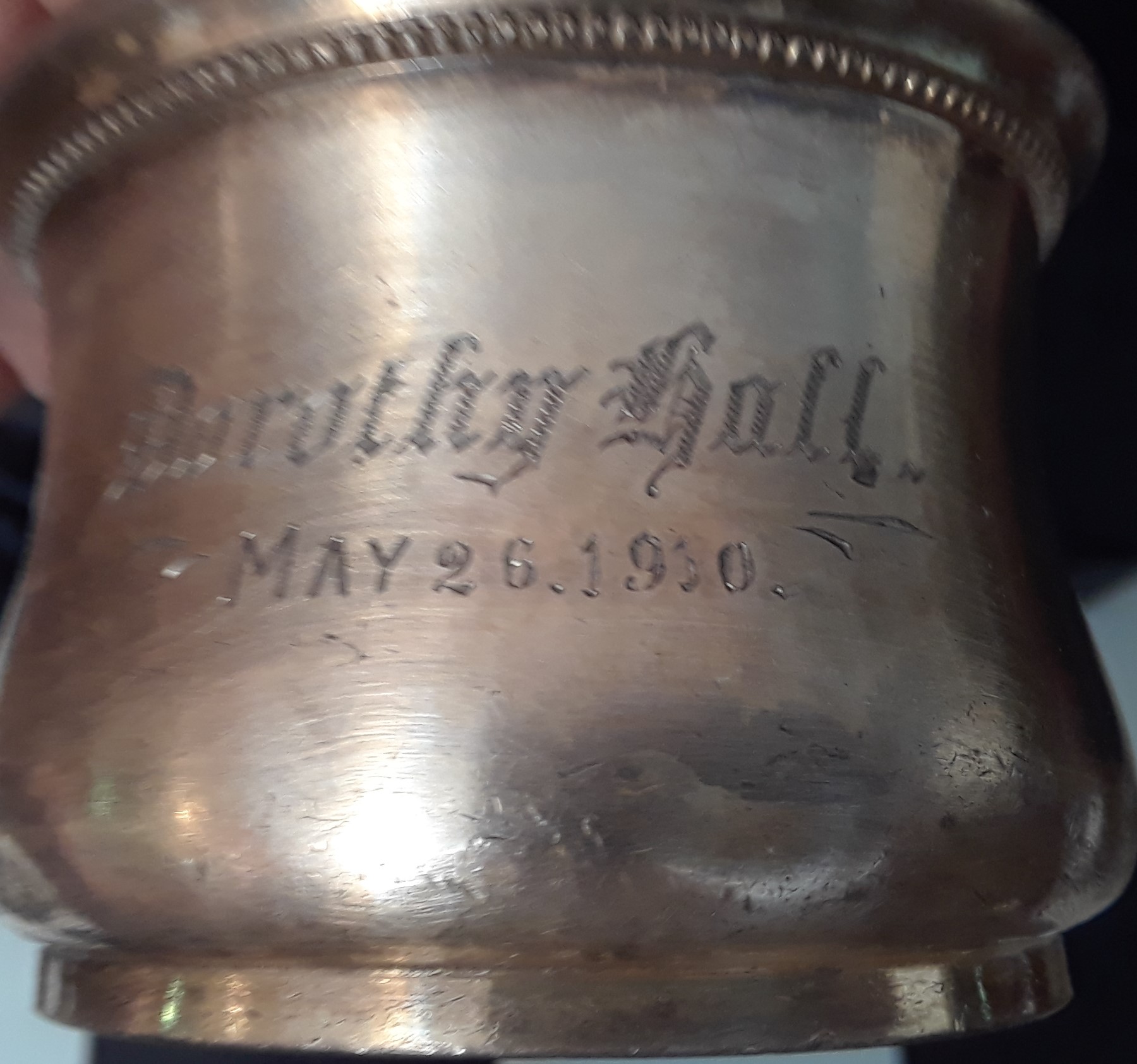
Summer Family Reunion Reminders!
| Every year around this time we like to say a special word to those of you who will be organizing or attending a family reunion. In plain words, sometimes it is hard to make the children and teenagers, even occasionally, the young adults, to really appreciate family history. Artifacts make it easier. If they can hold or see an item from an ancestor, suddenly the ancestor is much more real. Please take advantage of the opportunities that JustaJoy offers to make this reality possible. Yes, we know they will be looking forward to your potato salad and baked beans, but maybe you can bring along something even more memorable - an orphaned family heirloom that is orphaned no more. | 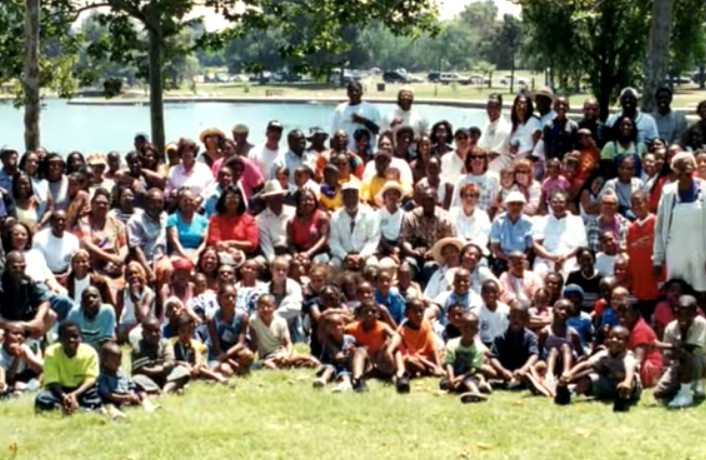 |
Caring for Paper Collectibles
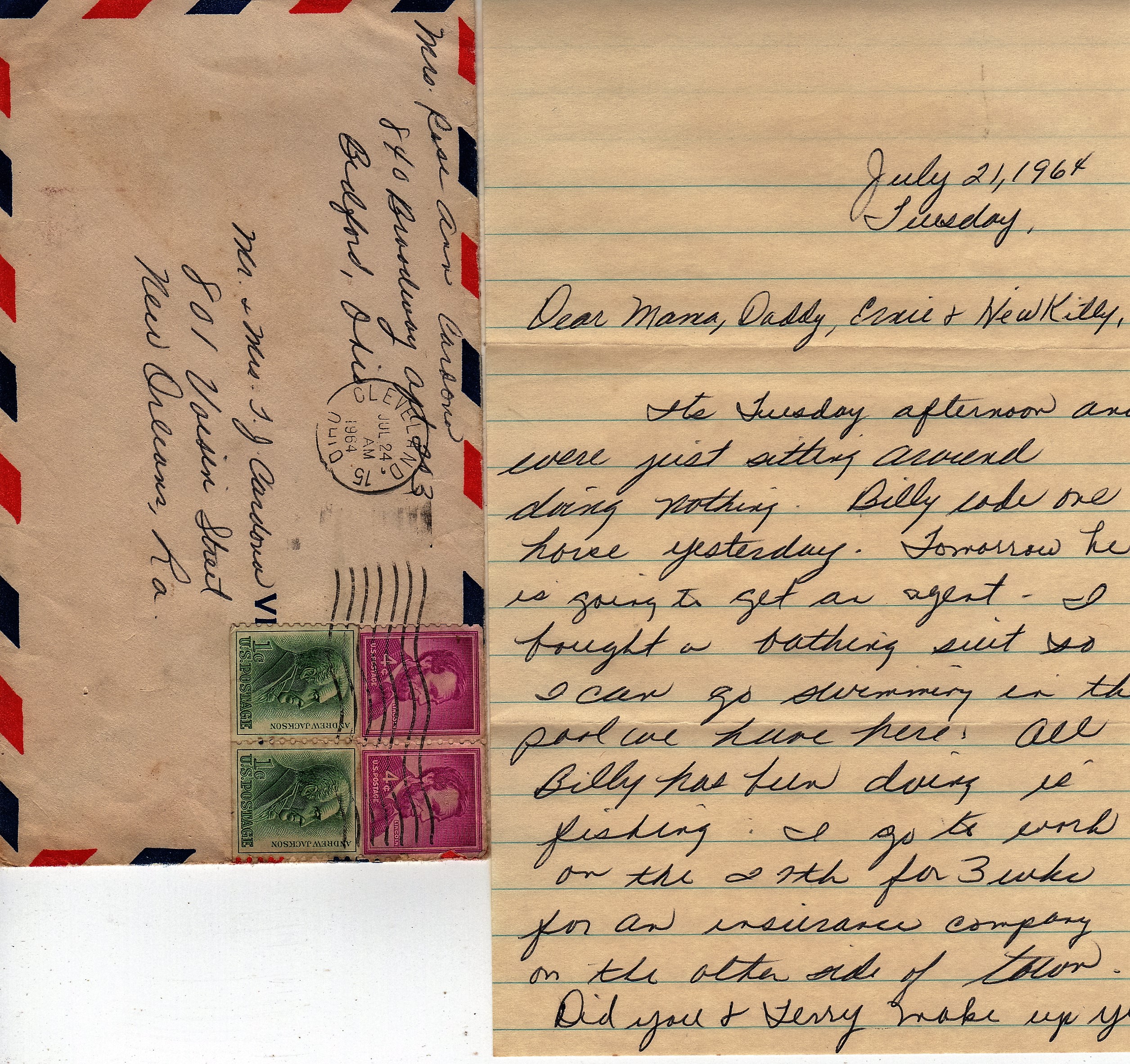
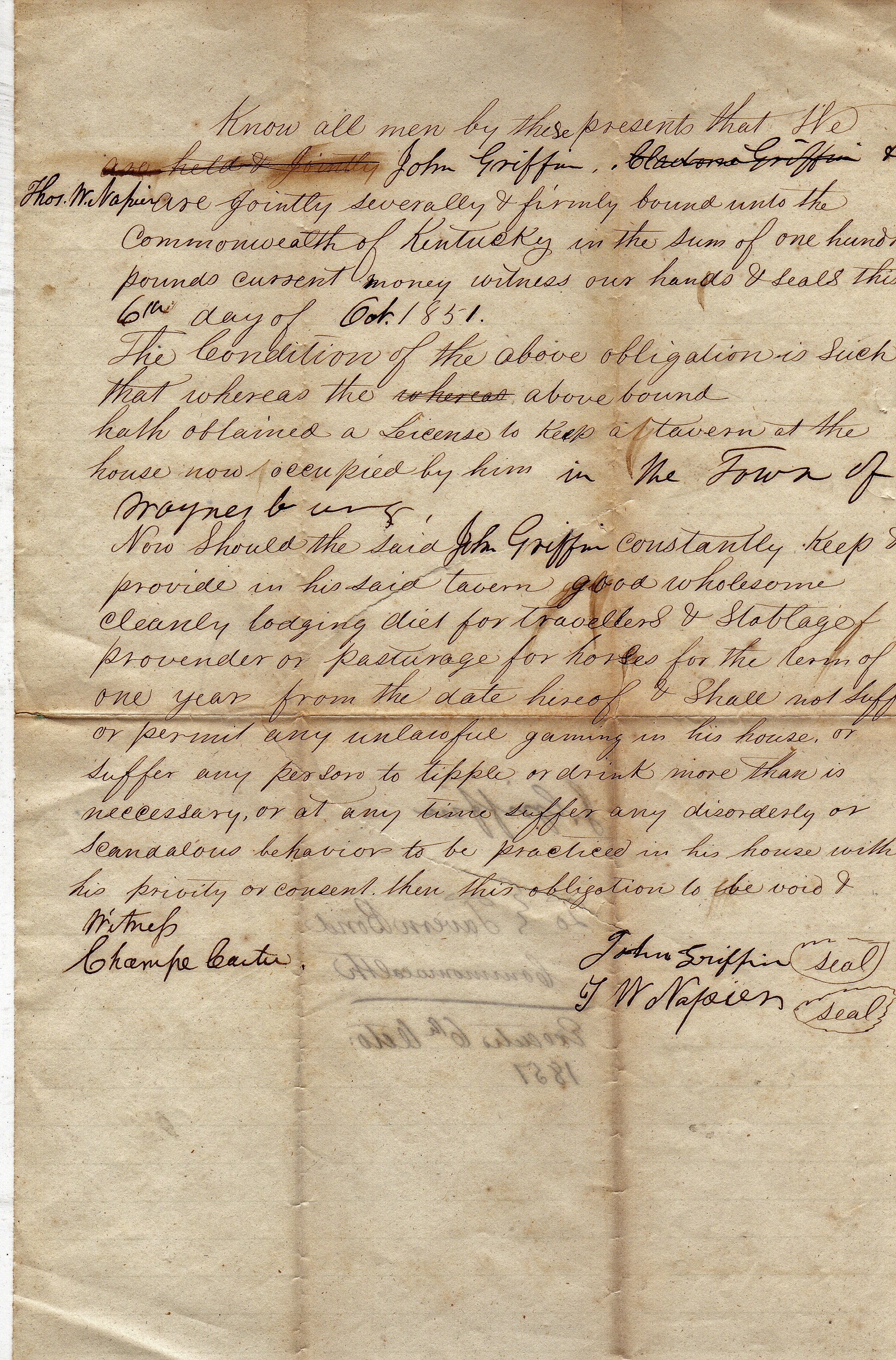
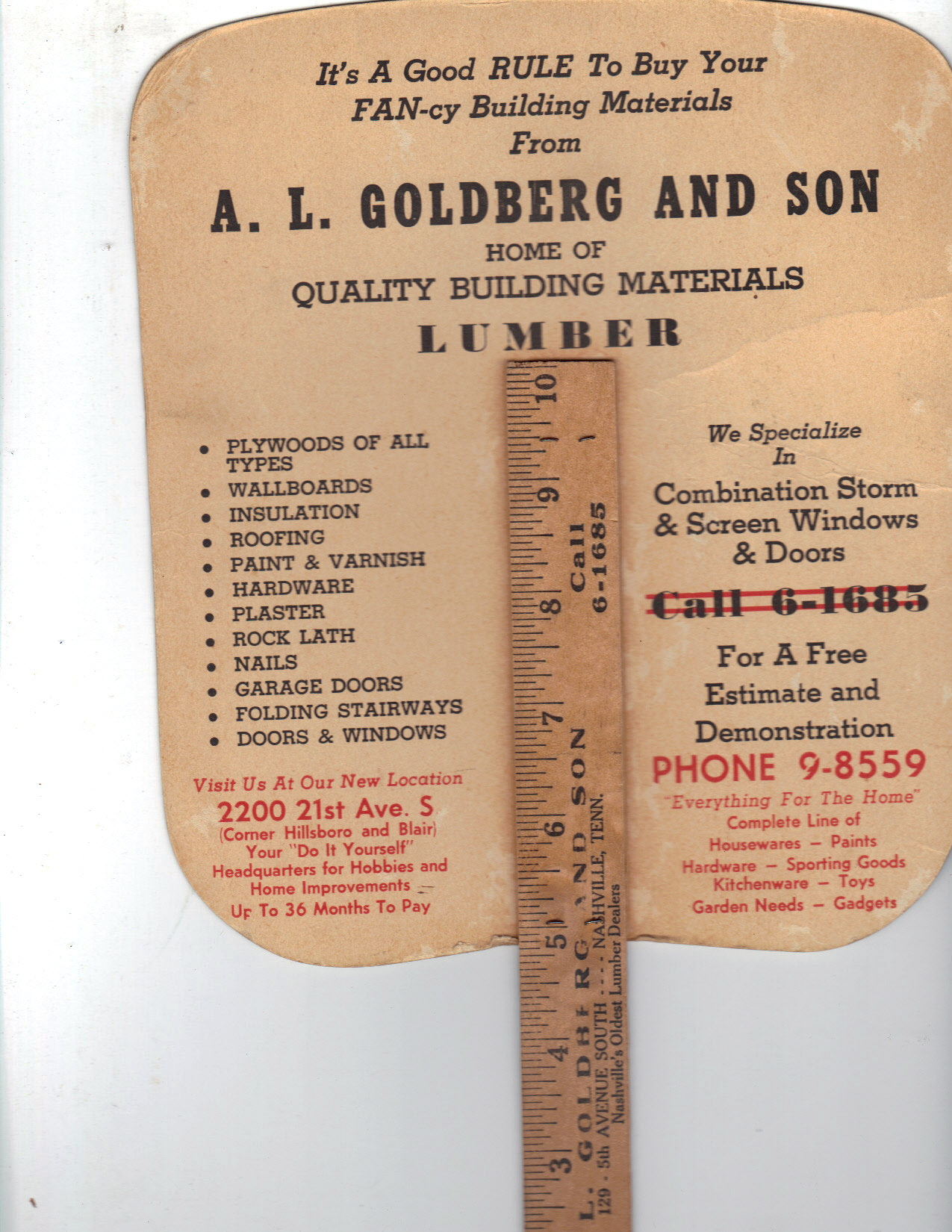
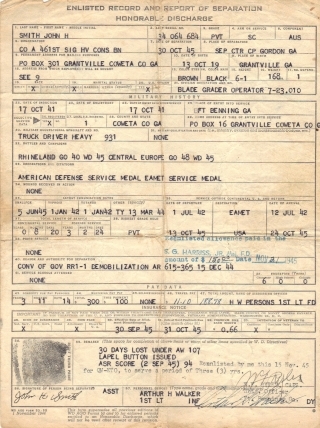
Reaching Out to Our Relic Friends
It has been a few years since we were regular vendors at many Civil War and military shows around the country. But in our travels in the past, we met some of the most amazing people, ever! These vendors were (and are) at the forefront of learning and teaching about artifacts from the past. I am thankful to so many for the patience they showed as they carefully taught me the many nuances of this kind of collecting.
When I introduced these dealers to my new JustaJoy.com idea, many jumped on board immediately and listed some of the finest antiques we have ever had on the site. Everything from cabinet cards to Confederate frock coats that valued in the tens of thousands. I just want to reach out to thank these individuals for so much they have done for me, in so many ways, but I still have one more special request.
Please continue to remember JustaJoy when you encounter those identified items. Many of you have your own website or an eBay store. Listings in both these places are unlikely to be seen by family members. Please block and copy it over to JustaJoy. Listings are free for members and there are no commissions or any other charges of any kind, other than the annual membership charge ($59.95).
You have a chance of being a hero as well as discovering a new place to sell. But there is a caution - when you make a match to a happy family, a tear might come to your eyes, as well. |
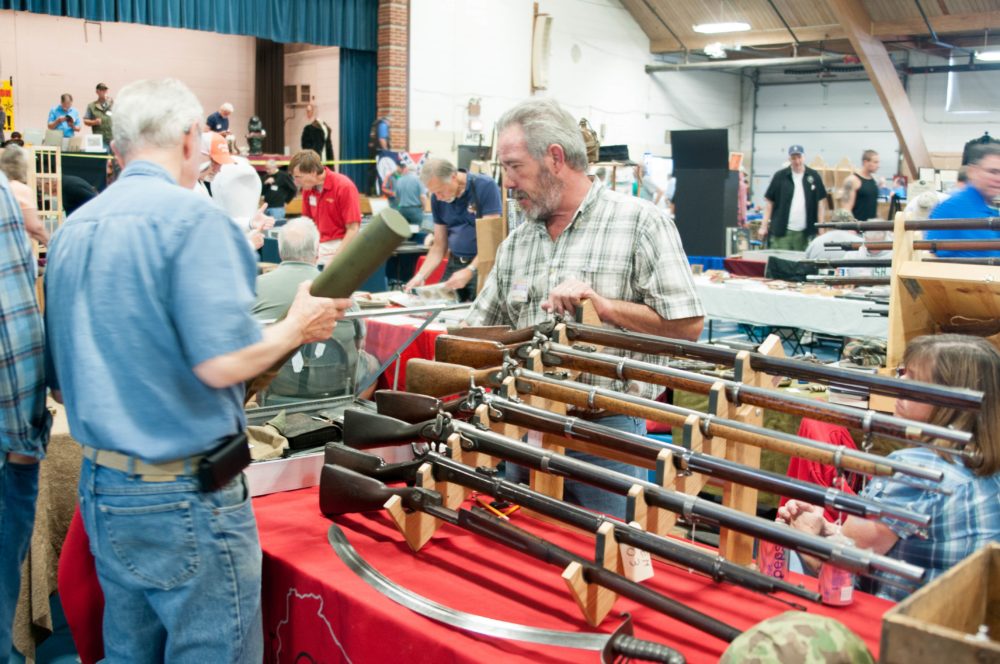 |
A "Tombstone Tourist's" Guide to the Artifacts of Death
|
|
|
Coffin Plates
Coffin plates are decorative adornments that can be made from brass, copper, silver, porcelain or other materials. They are attached to coffins and usually offer some combination of the name of the deceased, date of birth and death and/or sentiments. Their purpose ranged from simple identification of the body in the box to an elaborate display of wealth. They were used as early as the 17th century and were quite common before losing popularity in the mid-19th century.
Families of wealth would sometimes remove the coffin plates before burial to be kept as mementos of the deceased. Less privileged families who couldn't afford an elaborate coffin for every family member would reuse a fancy coffin adorned with the proper coffin plate for visitation. The body would then be buried in a more modest container, and the coffin plate would be replaced the next time the fancy coffin was needed. We have heard stories of stacks of coffin plates being discovered in the cellars of pre-Civil War homes. |
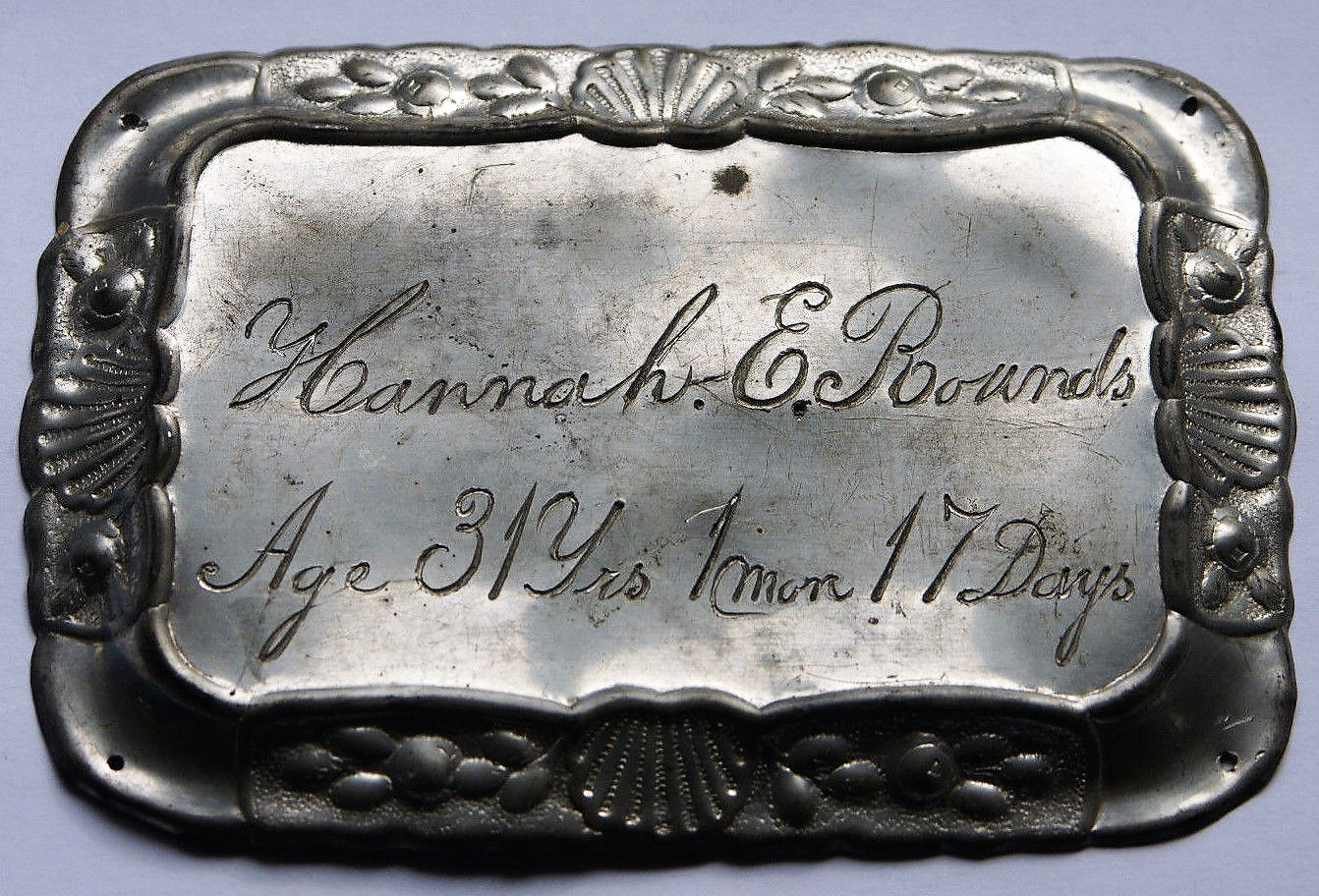 |
|
Lachrymals, Lachrymatories, Lachrymosas
These 3 words reference Victorian "tear vials" - bottles used to catch tears during a funeral to be saved until the mourning period is over. Somewhat controversial reports regarding lachrymals either completely discount them altogether or quote scripture that references them. They are usually beautiful, erect, handpainted bottles that can be corked. Very few (if any) have names, but we just had to include them in this list of interesting mourning materials. |
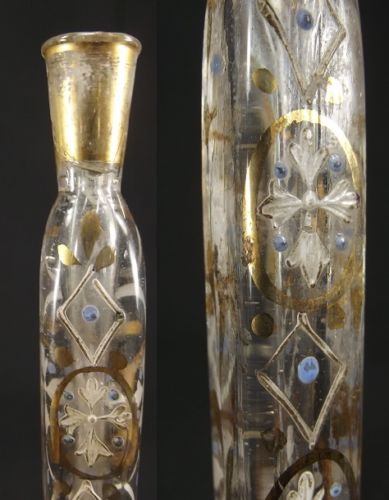 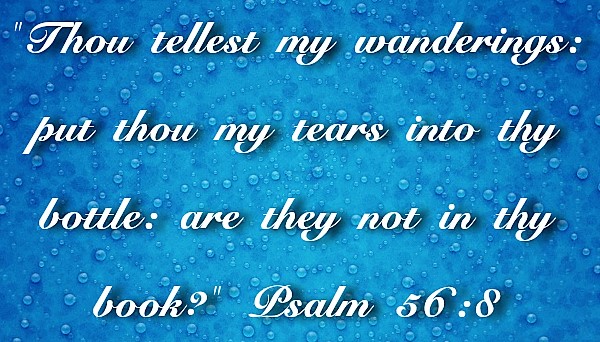 |
Hair Art Memorials
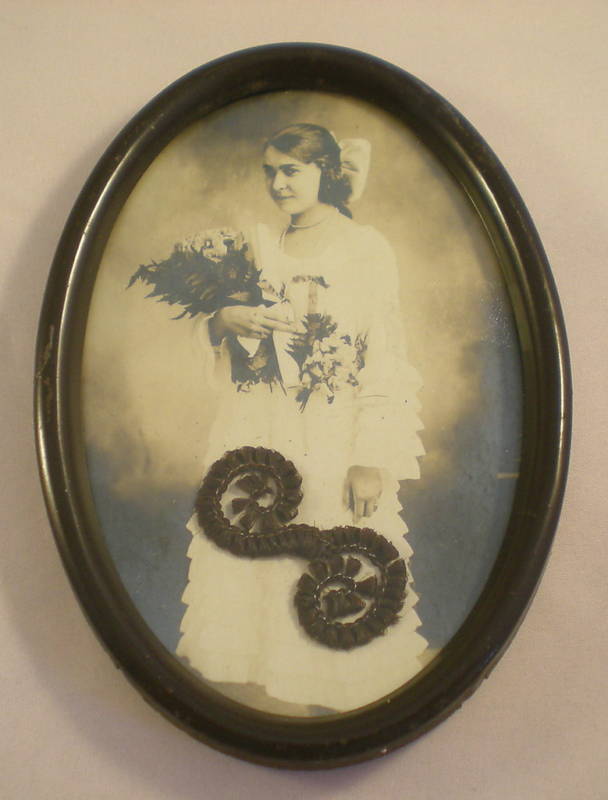 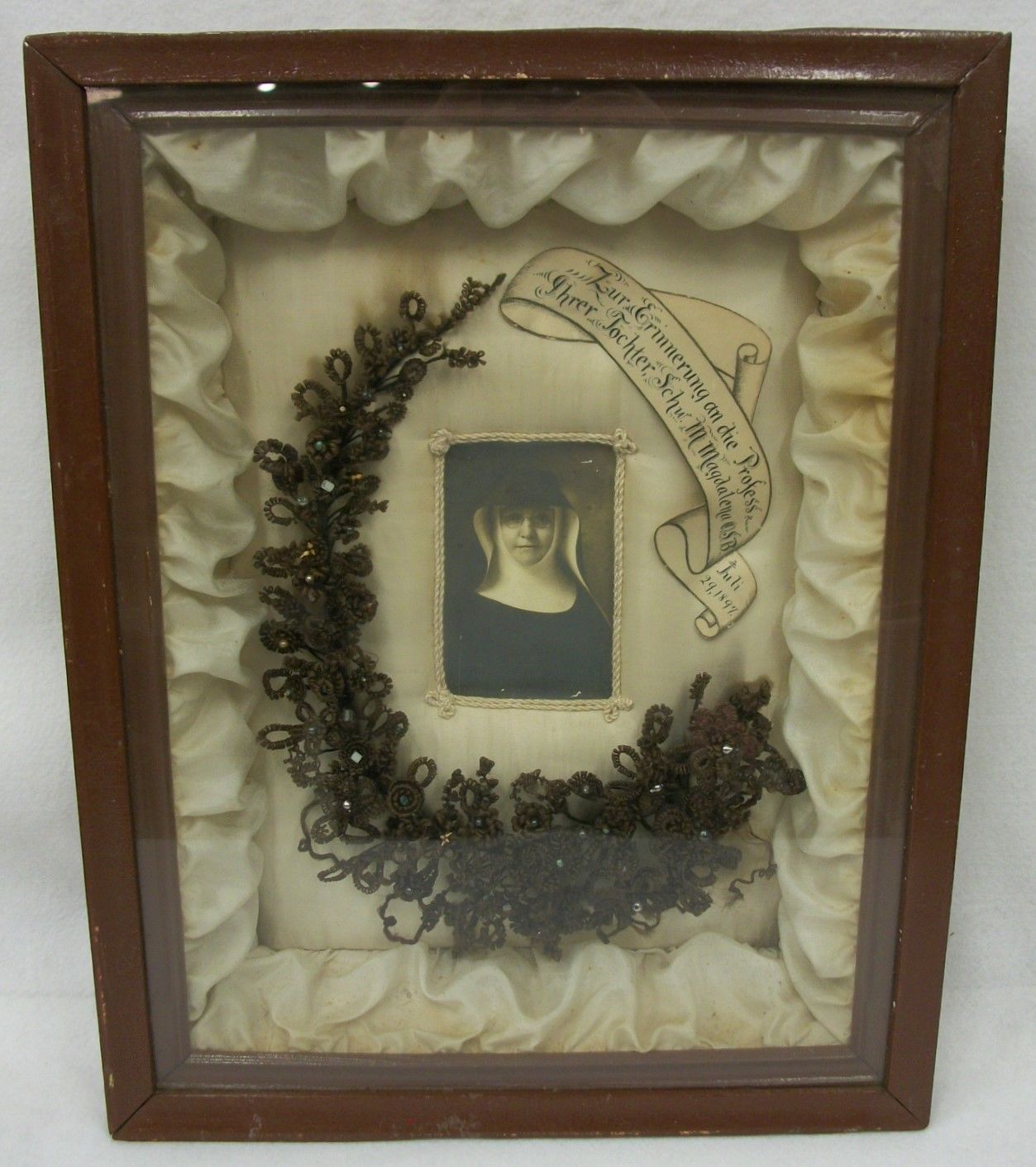 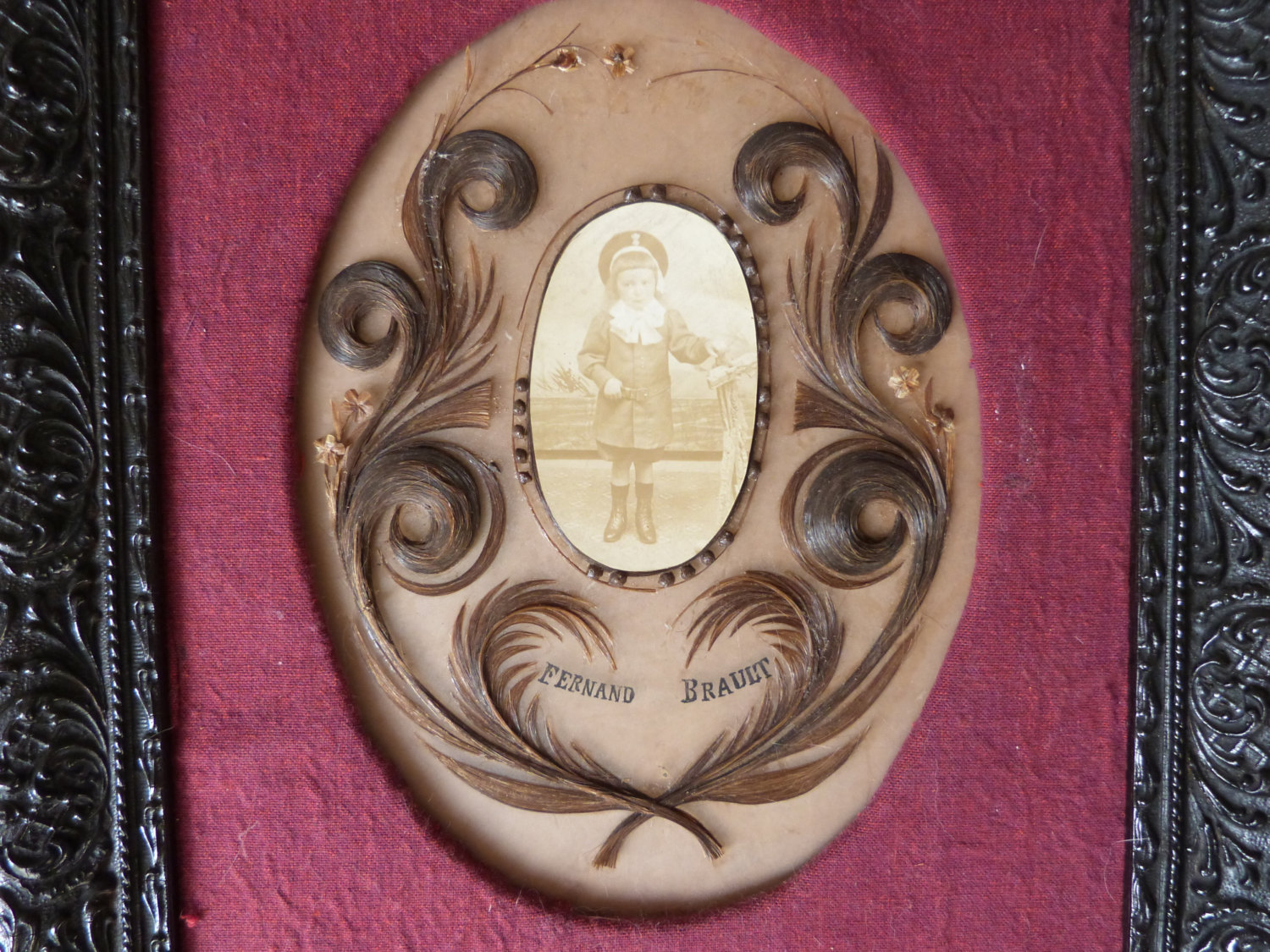 After the demise of Prince Albert in 1861, Queen Victoria was in mourning for 40 years until her death in 1901. She became the "queen" of mourning rituals during that time. She strongly influenced popular mourning activity including the creation of art composed of hair from the deceased. These memorials had many artful ramifications from framed wreaths to jewelry - even effigies of lost children - dolls made using hair from the lost loved one. The works of art would often be displayed in homes as a lasting reminder of the departed. They are often identified and sometimes even have a picture incorporated into the design.
Jewelry
Lockets, bracelets, watches, and more are often engraved to remember a departed loved one. Beautiful examples exist that also contain a lock of hair. In fact, you didn't always have to be dead to have such an item created for you. For example, it was fairly common for Buffalo Bill Cody to leave locks of hair with female admirers who would then create jewelry from them. The Buffalo Bill Museum in Cody, WY has a large collection of such pieces.
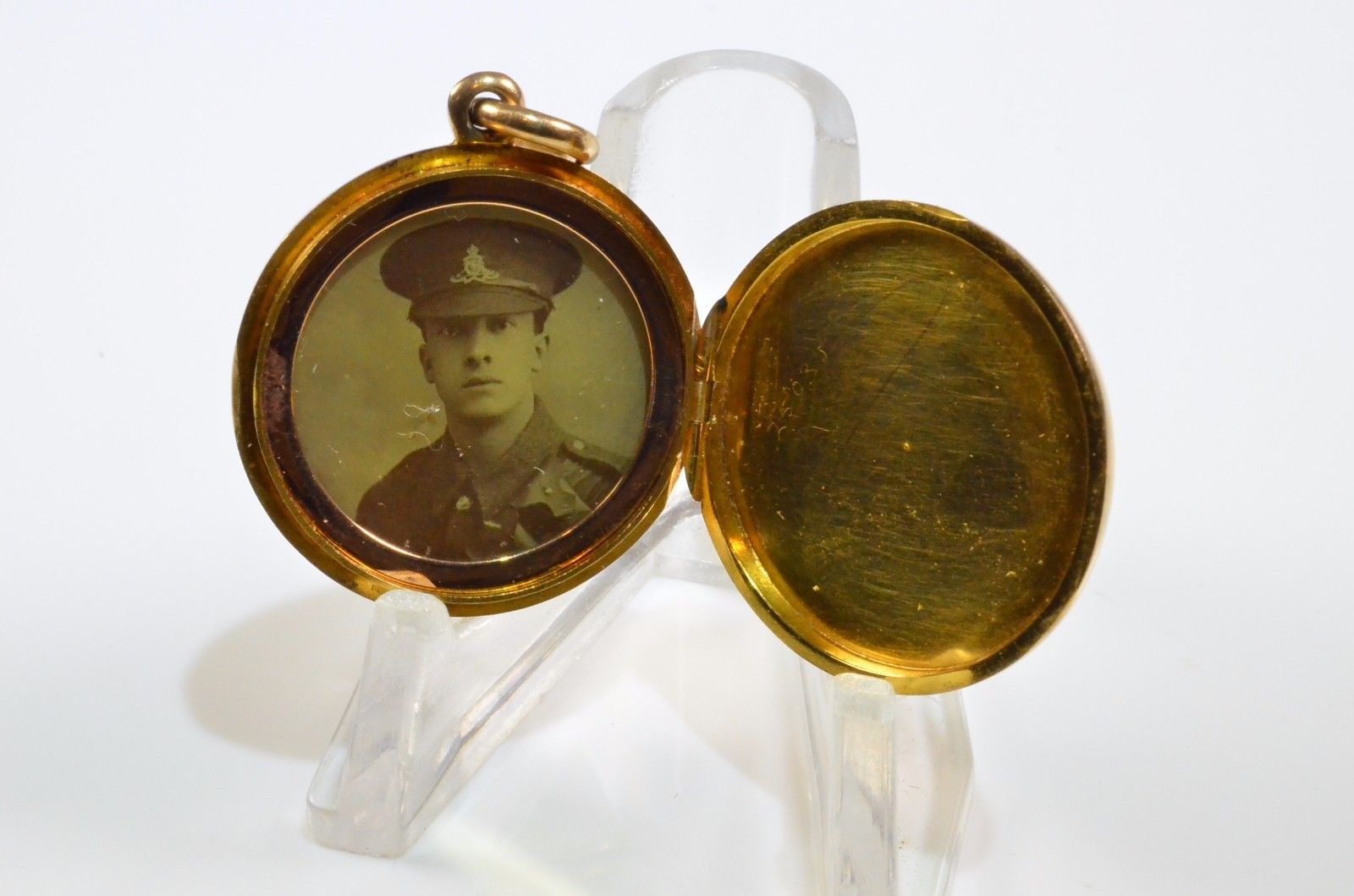 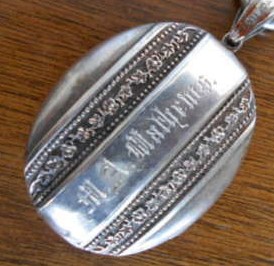 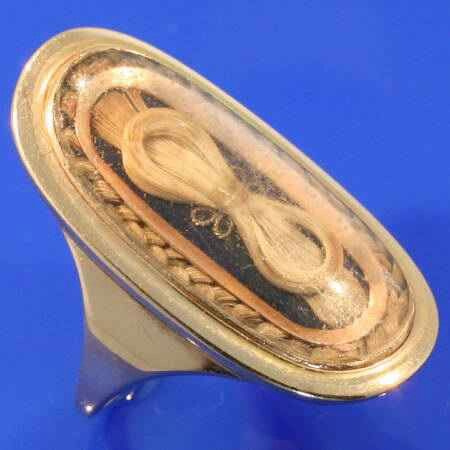 |
|
|
Post Mortem Photos
Post Mortem photos have been taken as long as photography has been in existence. There are even pictures of dead babies in the arms of the mother along with other members of the family. The practice was escalated during the flu epidemic of 1918 that killed more Americans than WWI. Many municipalities made laws that flu victims must be buried quickly, usually within four hours. This made it impossible for out-of-town family and friends to attend. Photographers would station themselves near railroad depots where caskets were prepared to satisfy the immediate needs. The photographers would offer their service to make photos that would be printed on a postcard backing to send to out-of-towners. These were the beginning of a phenomenon known to antique dealers as "real picture postcards" which eventually depicted every scene imaginable, even lynchings, with a postcard backing. Post-Mortem photos are often identified, but are somewhat pricey - usually starting around $100. |
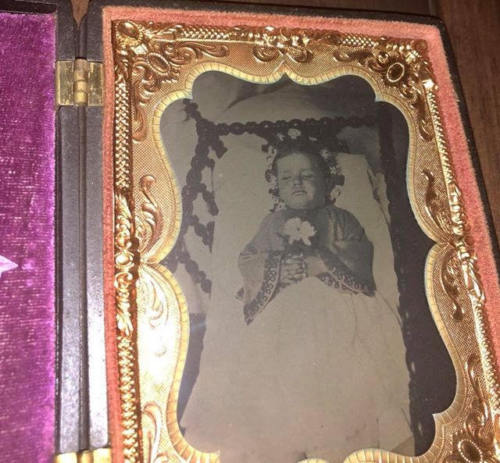 |
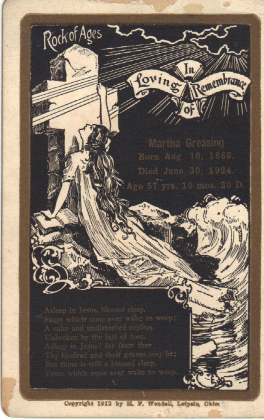 |
Funeral Death Cards A search for funeral or mourning death cards on JustaJoy returns dozens of examples. These cards were very popular in many countries in the 1800's and usually measure 4" X 6". JustaJoy has examples from France and Germany, as well as the U.S.The cards were quite elegant and were often lettered in gold. Besides information about birth and death, the beautiful cards sometimes contained pictures, personal information or poems. Thousands exist. Should one be found related to an ancestor, it can add an interesting and attractive element to any family archive. They are usually valued less than $25.00 each. |
|
Ephemera
Ephemera (paper items designed for temporary use) can offer many different kinds of original items to the family archivist. Original newspaper death notices, sympathy cards and letters on mourning-ruled stationery, original estate documents, and funeral bills can all give insight to not just the death of an ancestor, but also their lives. Many obituaries were flourished with exalting words about the deceased, mentioning great elements of their character, skills or faith. Details in estate documents and funeral bills can nearly depict the exact circumstances of an ancestor's life just prior to their death. Fortunately, thousands of these exist to be discovered by descendants. Price - $25.00 and up. |
|
|
Other Items
Of course, there is no end to the creativity of bereaved loved ones. Needlework samplers can be discovered along with all kinds of engraved items (other than jewelry discussed above). We even found a tribute engraved on a spoon! Needlework pieces vary in price from $100 to thousands, depending on age and the skill of the seamstress. Engraved items can be a bargain, as silver, pewter, copper, or brass collectors usually prefer items that are not engraved. JustaJoy.com customers usually have a different opinion. Needless to say, family deaths are of "grave" importance to most family researchers. Please be sure to watch for "Joy Alerts" about items of significance for YOUR family!
|
|

Most Popular State Surnames
Reminders 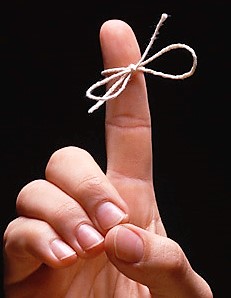
You can manage how many "Joy Alerts" you get by adjusting the surnames on your account, at any time. Just remember to occasionally check for any names you remove. The newest items are always at the top of any search results.
Usually the antique dealers who post on JustaJoy will negotiate on price.
All members can post and sell for free including genealogical and historical societies. (A possible fund-raiser!)Societies Are Important - Societies can also get JustaJoy.com for free for Society library computers.
We are always available to help with a program introducing JustaJoy.com to any group.
Don't forget about "General Search" when you want to search a place, school, regiment or any other parameters other than surname.
Those fun summer reunions are coming soon. Add to the fun by showing up with an original artifact.
|
The Ancestor I Could Have Had
The following is not really about identified artifacts - it is more of a personal story. I never knew a grandfather. Both died before I was born - one of natural causes, one of suicide. Of course, the suicide was never discussed much in my presence - usually only when my Dad was REALLY mad at my Mom. But just this week, this event came to mind as I realized that my grandfather could have known ME! Conceited you might think, but I believe he would have liked me. I was pigeon-toed when I was born, so my parents put me in ballet at age 3 to help correct the problem. A cute picture exists showing me posing in a leotard with my feet so turned in that it looks quite unnatural. The process, however, worked, and now my size 9 1/2 feet are fine (just ugly).
|
|
|
I believe that grandfather might have enjoyed watching me dance during those early years - he might even have dreamed that I would be another Shirley Temple! If he had put off his suicide even a little longer, he might have enjoyed watching me show horses, which I did at county fairs all over Kentucky in my youth. He may have enjoyed watching me drive Bingo King, my young hackney pony in his bright blue sulky in roadster classes. You know, he might have even enjoyed coming to my high school honors program when I received a scholarship to go to college. I believe some of these events might have cheered him past the cruelties he had known that led to his suicide. Perhaps watching a little pigeon-toed girl in a tutu could have helped him forget those tortures.
I have spent many years trying to guess the exact nature of his pain. He had lost a son to drowning - drowning in shallow water. Was there more to the story? His wife had divorced him and exiled him to live alone in a different house. A product of the lost son? He was a successful businessman who rarely drank and grieved copiously when he did - a fact I heard from his daughter, my mother. My mother could also have contributed to his misery. She had divorced her first husband (not my Dad) after losing a baby and after he had been diagnosed with schizophrenia - a disease that led to horrible consequences.
|
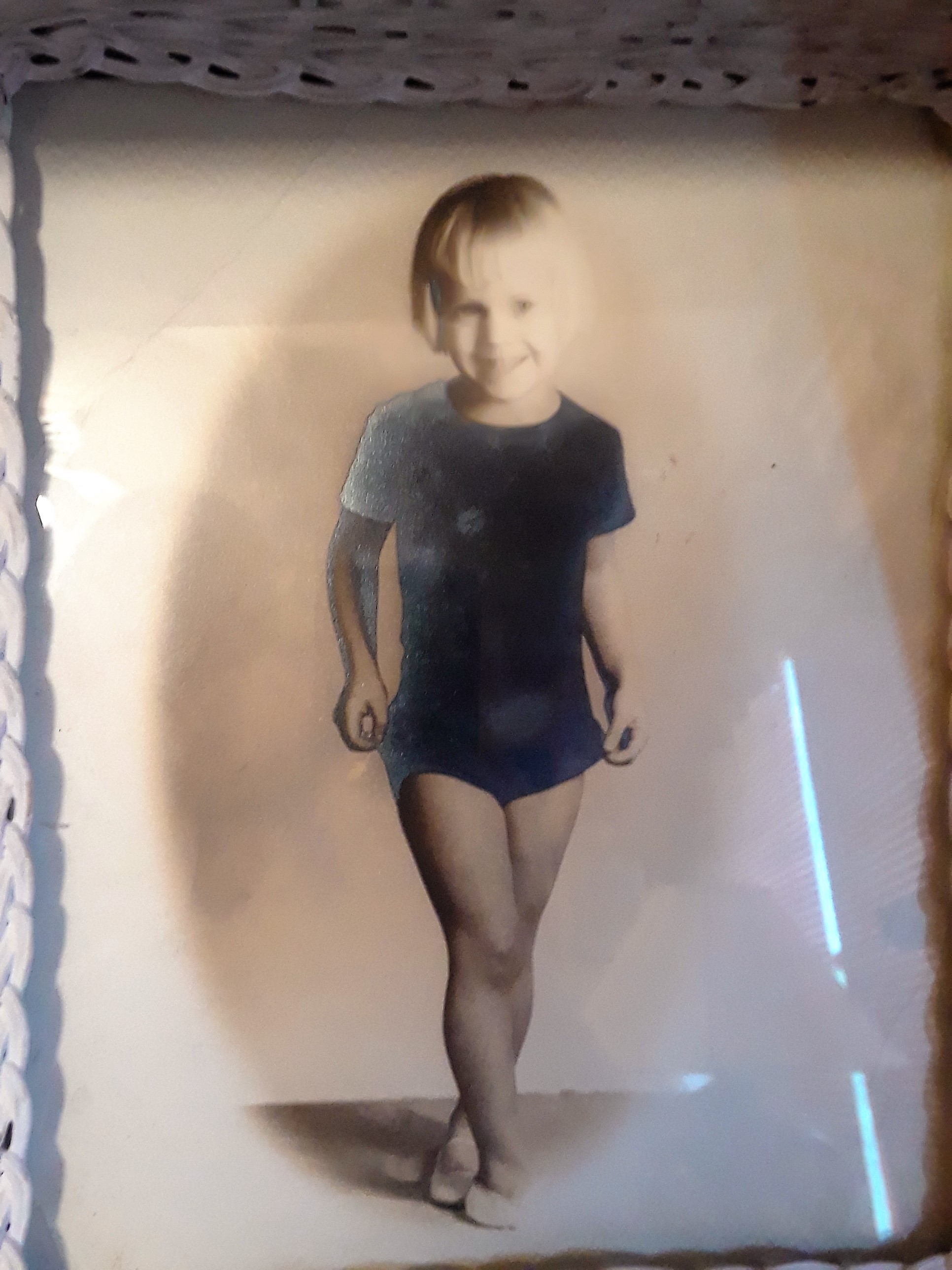 |
A lot of water had gone under the bridge by the time I was born in 1954 to a mother of 40 years old and a father of 45. I can only speculate at my grandfather's misery before he put that gun to his head, leaving stains on the hardwood floor that were impossible to remove (another argument-revealed fact).I would have loved to have known him. I would have loved to hug him. I would have loved to see him in the audience when I danced or when I stood on the stage at my high school honors night program. I would love to know, now, more about that piece of the pie that makes me.
If you are considering suicide, please think of that pigeon-toed little girl that might be in your future who will want your love - a love that you and you alone can offer. Be brave for her or for that yet unborn little boy who will learn from you. Even be brave for your current tormentors - you might get to see the redemption of the pains you have suffered. If you wait, you might get to see how God can fix unfixable problems. He loves you as you sit there with your gun in your lap. He loves you and who knows who else will.

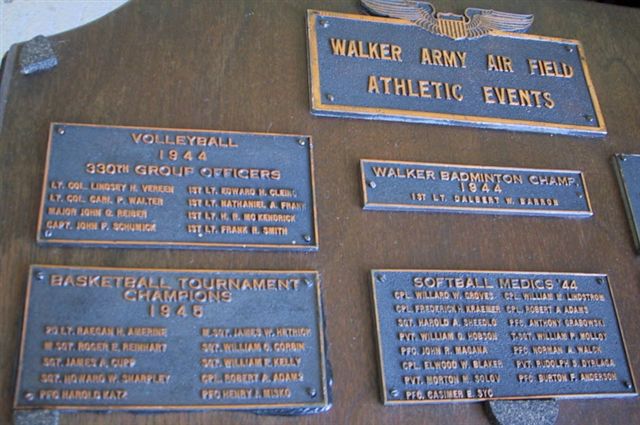 |
"Was My Ancestor an Athlete?" - Sports Collectibles on JustaJoy
One of the first items JustaJoy ever matched was a commemorative plaque honoring WWII trainees who excelled in sports at an athletic field at Walker Army Airfield in Kansas during WWII. It listed winners in assorted sporting events - everything from the badminton champ (Lieut. Dalbart Barron) to members of the 1944 Volleyball tournament - a team that included 1st Lieut. Howard R. McKendrick. |
|
|
The plaque was probably removed in January of 1946 when the airfield was put on inactive status. Thankfully, some far-sighted person preserved it by converting it into a lovely little side table that probably made many stops before ending up in JustaJoy's inventory. You can imagine our delight when in January 2011, 64 years after the closing of the airfield, we received the following correspondence from the former lieutenant who by then was Colonel McKendrick:
|
|
Later correspondence from the Colonel, after receiving the table, mentioned, "I haven't seen my family so excited for a long time." Below are pictures of Col. McKendrick in earlier years and with his family's forever treasure. |
|
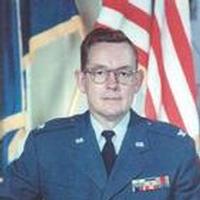 |
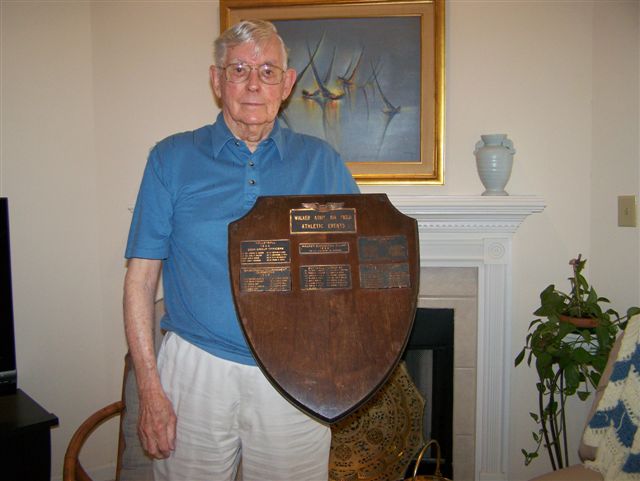 |
Other Sports Items on JustaJoy.com
Other examples of identified sports memorabilia that can be found on JustaJoy include:
|
|
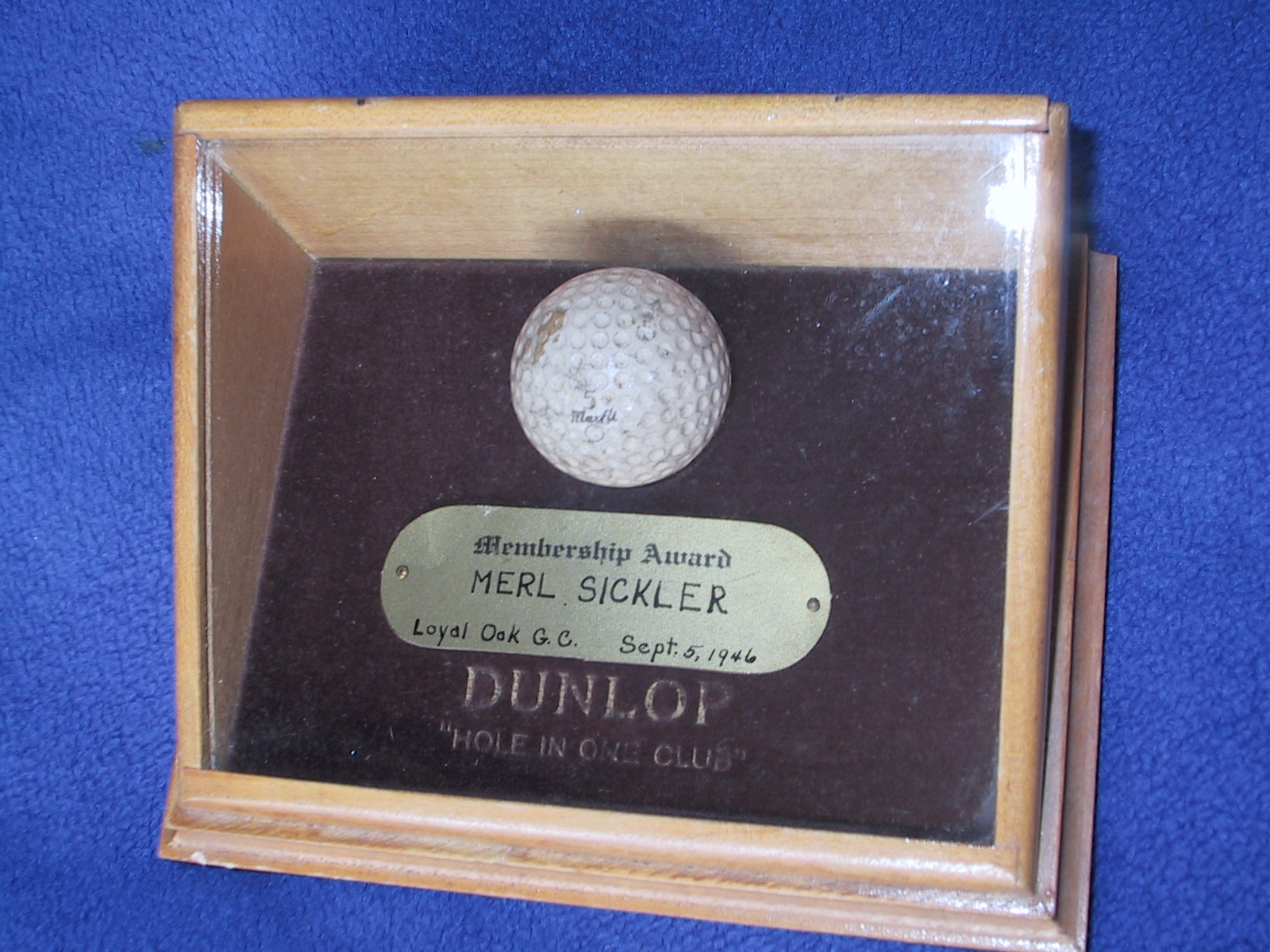

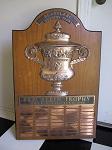
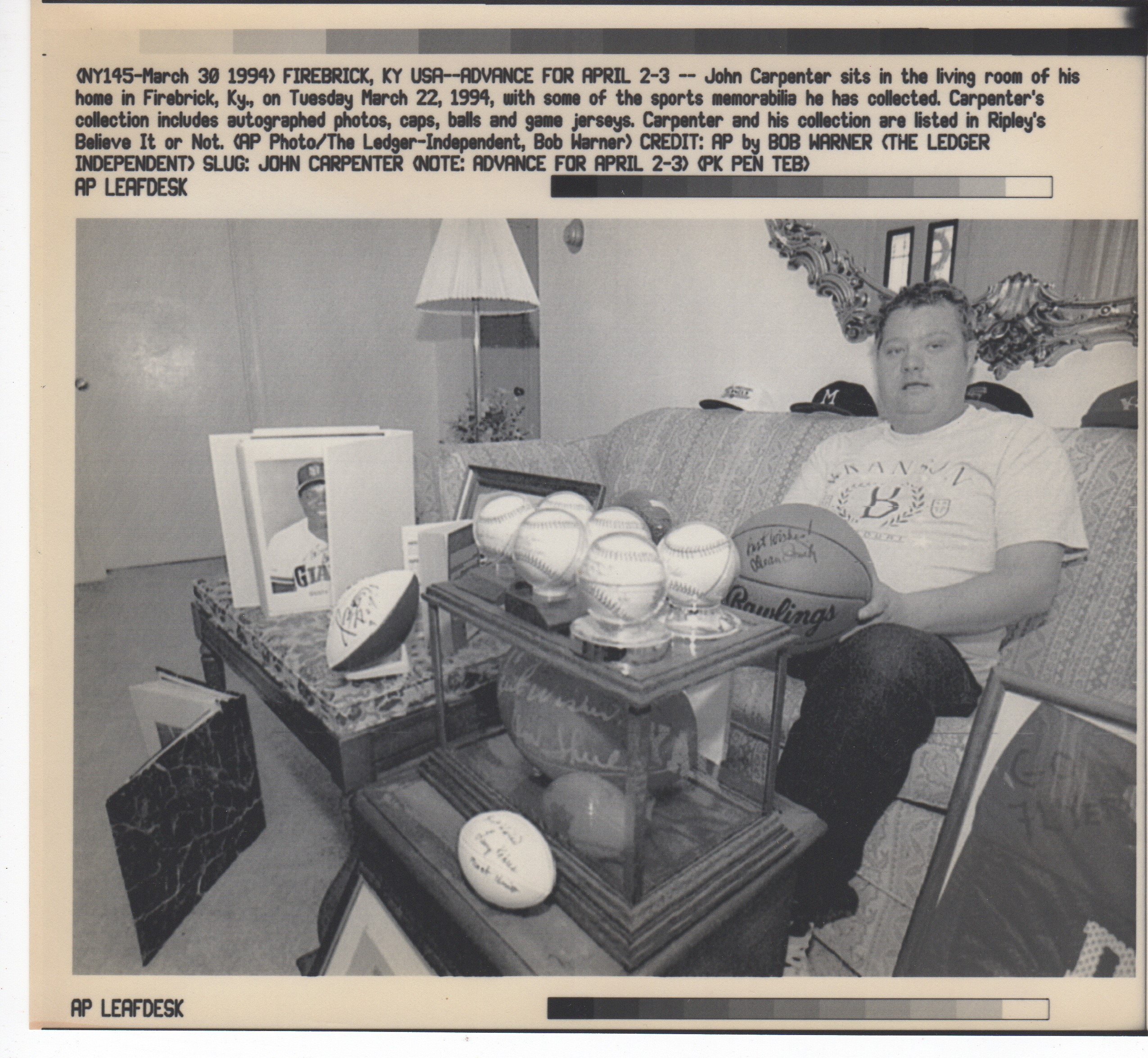
Free Appraisals! 
|
|
The War of 1812 - Was It God or Coincidence?
Is it possible to have a favorite war? A quaint idea, I suppose...but when you are an American artifacts dealer, you become very well acquainted with the various nuances of American wars - the reasons, the participants, the activities and the results. The history of each war is enticing for those reasons, with endless stories to study and lessons to learn. My favorite is the War of 1812, America's first declared war. This was also the war that firmly established the United States as a country in the eyes of other countries - even more than the Revolutionary War. After all, at the beginning of the War of 1812, the British navy had more than 1000 ships. The Americans had 17. There were also so many fiery and larger-than-life characters in the cast - the ever-controversial Andrew Jackson, the 5'4" woman hero, Dolly Madison, an anthem writer stuck on a ship (Frances Scott Key) and God. Yes, God, who undeniably showed his hand to interfere on the side of the Americans - let me explain. |
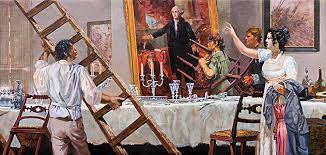 |
On August 24, 1814, the Brits were definitely winning the war. They were nearly, completely unimpeded as they marched into Washington, DC and began burning government buildings. At 10:30 p.m., they entered the White House and pilfered items as varied as presentation swords and the love letters from President Monroe to his wife, Dolly. After having a glass of wine in the White House dining room, Rear Admiral George Coburn ordered a blaze to be set, a blaze that ultimately could be seen by people from 50 miles away, including President Monroe on horseback in the field who was still worried about the whereabouts of Dolly. She had been quite busy. The only White House artifacts that survived the event were hastily gathered by her and she barely escaped with them before the Brits arrived. |
| Enter God. The next day, with more looting and burning planned, an uncanny storm appeared out of nowhere and with no warning. Beginning as a terrible thunderstorm that put out any fires that remained from the previous day, it evolved into a tornado that set down directly on the spot the British soldiers were camping! The storm killed more of the American enemy than the American troops had killed and the Brits were demoralized to the point of retreating promptly to their ships in the Chesapeake Bay! | |
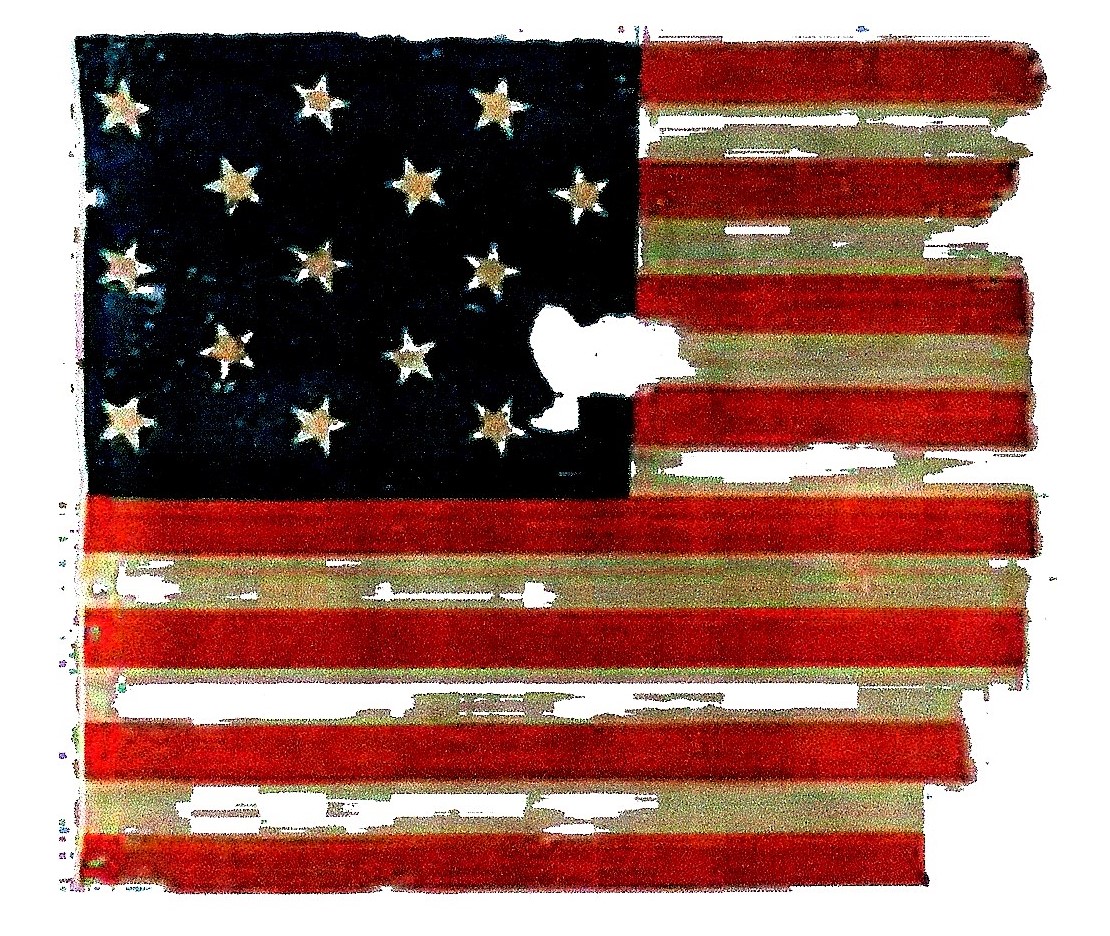 |
The War of 1812 doesn't get as much play as the Civil War, WWII or the Revolutionary War, but it was very significant and very interesting. JustaJoy has numerous original identified items from this war including muster rolls, pension documents, badges, books and letters. A video made in the Washington DC area can be seen on the JustaJoy home page. It describes how original documents found on JustaJoy helped a descendant secure a new monument for his War of 1812 ancestor. Please learn more about this War. There are many interesting videos on the subject including one, "Was it God or Coincidence". |
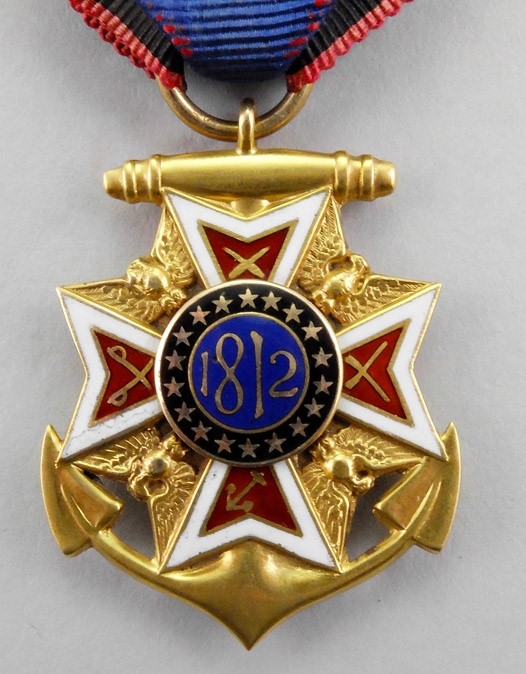 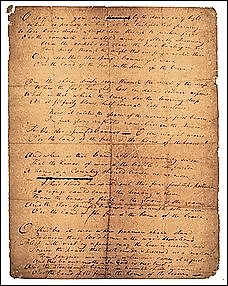 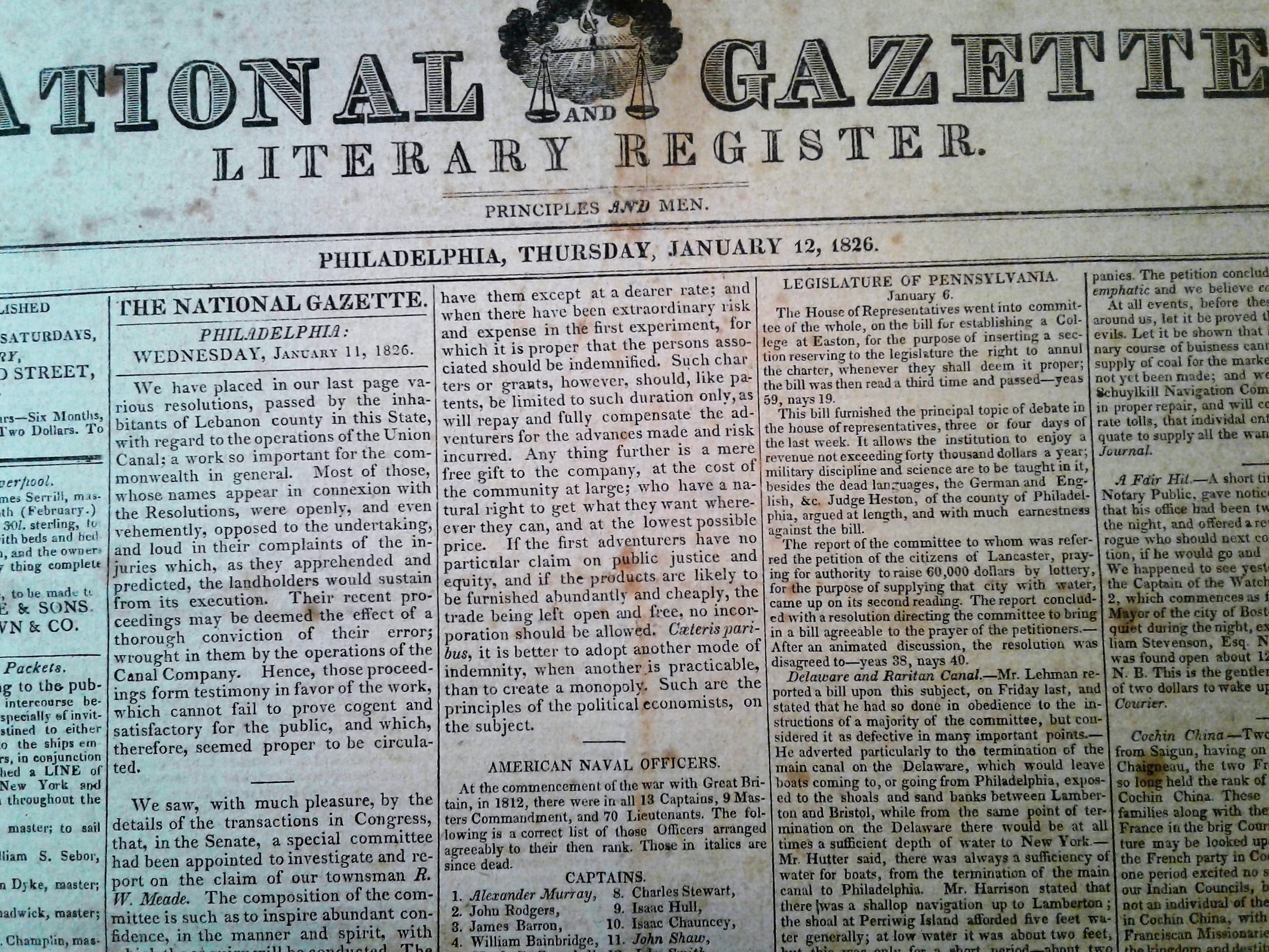 |
|
Important Reminders 
- Family reunions are coming. Wouldn't it be fun to show up with an original artifact?
- You can manage how many "Joy Alerts" you get by adjusting the surnames on your account, at any time. Just remember to occasionally check for any names you remove. The newest items are always at the top of any search results.
- Usually, the antique dealers who post on JustaJoy will negotiate on price.
- All members can post and sell for free including genealogical and historical societies
- Societies can also get JustaJoy.com for free for Society library computers.
- We are always available to help with a program introducing JustaJoy.com to any group.
- Don't forget about "General Search" when you want to search a place, school, regiment, or any other parameters other than surname.
 |
MyHeritage Guest Blog - Thanks, Again!
We were honored, once again, to make a guest appearance with the MyHeritage Blog. Our topic regards concerns about what will happen with our family heirlooms after we are gone. |
|
This is a guest post by Joy Shiver. Joy is the owner of JustaJoy.com Family Heirloom Exchange, a surname searchable, bulletin board style website antique dealers use to reach out to family members. With thousands of original items associated with more than 100,000 surnames, JustaJoy.com has become the largest in the world at matching antiques and artifacts back to families. Joy's background as a lifetime antique collector and dealer makes her uniquely qualified for such a venture. She describes her website as "Antique Hunting in the Family Tree" and loves when matches are made.
|
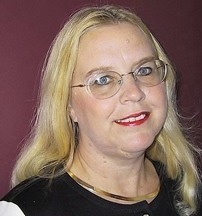 |
|
Many antique collectors express concerns over whether their treasured objects will be respectfully passed onto future generations. I am here to offer words of reassurance and encouragement as I have been nothing but impressed by the scores of youngsters I have encountered over the years.
As many of our readers know, "JustaJoy.com Family Heirloom Exchange" molted from our antique business, "JustaJoy Historical Treasures" which specialized in "Investment Grade Artifacts from the American Experience". Our inventory consisted of items related to the Revolutionary War, The Civil War, the African-American experience, World Wars I & II and political items. Our antique business became quite far-flung as we attended shows from Massachusetts to Florida, Virginia to California.
At every event we attended we would be blessed by wide-eyed children, as young as eight years old, full of curiosity, who would excitedly shift their weight from one foot to the other, anxious for their turn to participate in discussions about history and the artifacts it produced. They would wait not-so-patiently to ask dozens of questions, share what they had already learned and delicately touch or hold the precious (albeit usually inexpensive) items they were shown.
|
|
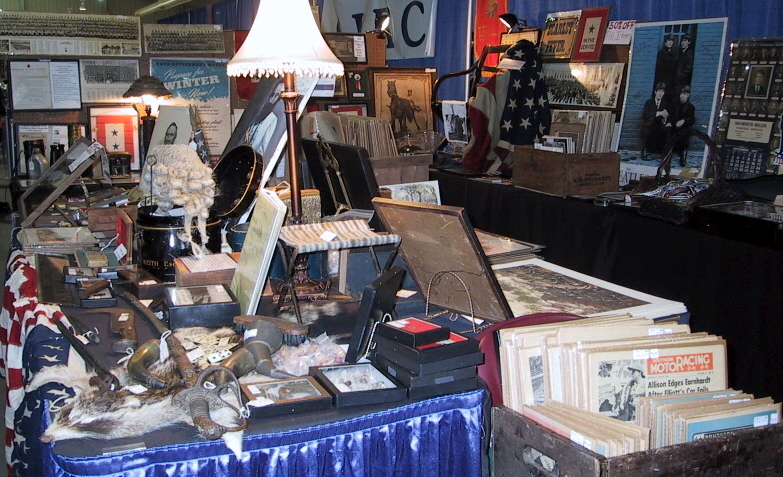 |
|
|
Some had parents who were also historians but most of the parents of these historical prodigies were befuddled by their child's passion. One mother of an 11-year-old memorably said, "Don't ask me, I'm just hanging on for dear life!" Another impeccably coiffured single Mom told of following her son through mud puddles at reenactments and bumping her head on the roof of a B-24 airplane as she tagged along with his excited visit to the WWII monolith. Another Mom had no explanation for her child other than, "He's an old soul."
We had a regular fan club of young people whose parents often said the only reason their child wanted to come to the show was to visit our booth - one of the greatest compliments we had ever received. I often watched the parents standing quietly and proudly in the background as their children enjoyed the bounty of our booth and ultimately spent his or her birthday money or allowance on Civil War Minié balls, 1943 steel pennies, or a WWI backpack. During those moments, I felt the parents and I shared a secret - a certain knowledge that THIS young person was very special and would need very little guidance other than encouragement. These moments were quite a privilege and often justified the long drives and heavy lifting more than anything else.
Through our years as antique dealers, we watched many of these children grow up and become amazing people. They often had interests in law, politics or the military. More than one was an Eagle Scout and one was even elected by his peers to speak on their behalf at their law school graduation!
So, how does all this help you in your search for the right caregiver for your archive and artifacts? Maybe not at all, but I want to share this information because I believe all of your hard work and discovery will be extraordinarily cherished by SOMEONE in the future - maybe someone you will never meet. And just as you are thankful for the folks that you have never met who left a trail for you to follow, some as-of-yet unmet person(s) will be thankful for you.
I believe the study of genealogy is a blessed activity and benefits from guidance from an unseen hand. Even though the exact path may be unclear, there is no reason to believe our passion will end with the deaths of any of us. After all, we don't really own family history. We simply protect it for the next generation. |
|
Nancy and Her Negatives 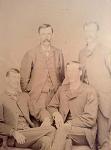
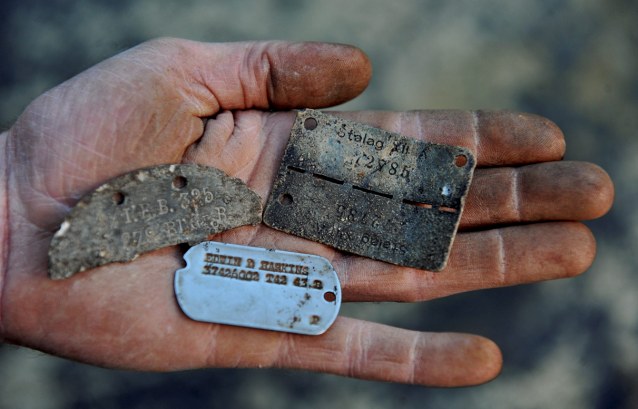 |
This Month's Collectible - Military Dogtags
The origins of American military dog tags originated in the Civil War. Because some Civil War battles saw casualties in the thousands, timely handling of the dead became an issue. Many, many soldiers were buried in graves marked "Unknown". |
|
Soldiers began writing their names and unit designations on paper tags and pinning them to their clothing or creating identification tags made from wood or coins they would wear around their necks. Soldiers in the Indian Wars battles, the Spanish American War, the Mexican Border Wars and other military battles continued the practice until 1906 when War Department General Order No. 204 required a circular aluminum disc to be worn. The disc contained the name, rank, serial number, unit, and religion. This design was used through WWI.
|
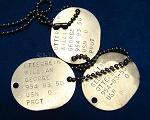 |
| In 1916, the regulation was changed and soldiers in America began wearing two tags - one of which was to stay with the body, tied to legs, ankles, or feet, and the other would be collected by the officer in charge to prepare the paperwork and notify the family. Other countries operated with the same concept by using a single tag that could break apart. Such was the case of the initial German military identification tag, called the Erkennungsmarke, first issued in 1939. | 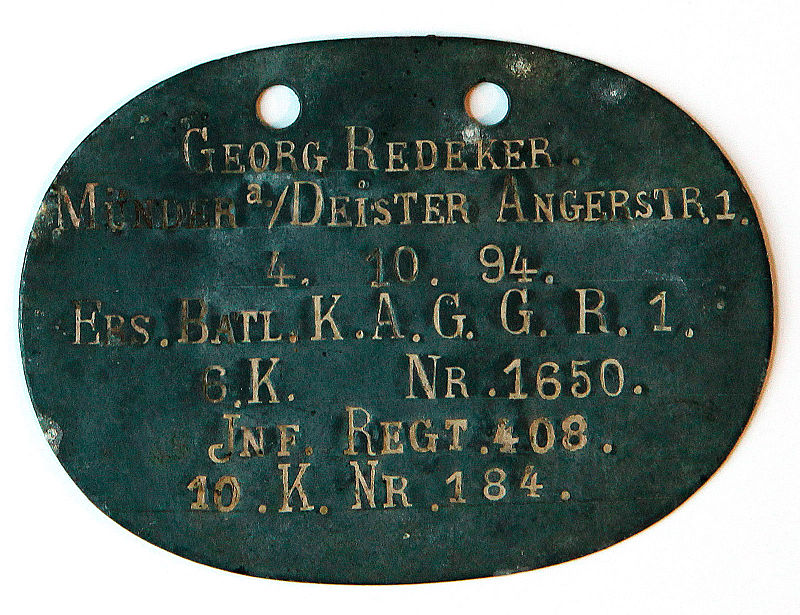 |
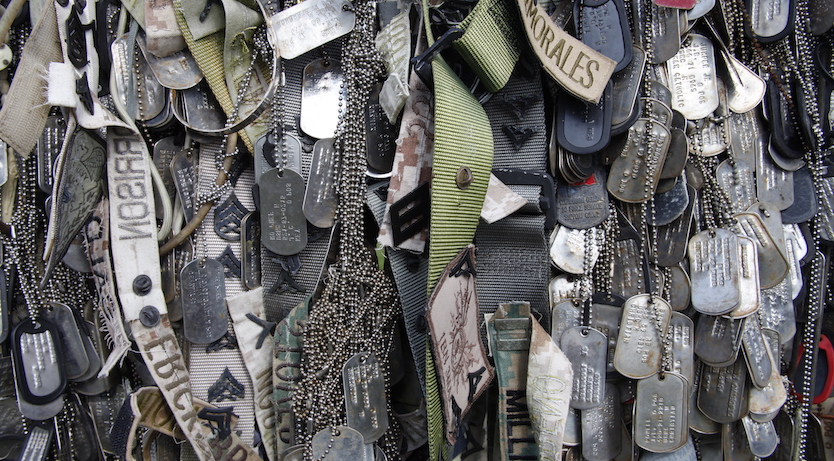 |
Around WWII, the circular tag was replaced by the more oval shape used by the military today. Its resemblance to dog collar tags led to the designation of "dog tag". The tags used in WWII were stamped by a machine called an addressograph that left a notch on one side. (and no, despite the persistent myth, the tags were not designed that way to place in the teeth of dead soldiers.) Dog tags and the information they contain have changed often through history and modern-day dog tags even contain microchip technology that offers medical and dental records. |
|
Vietnam Era Dog Tags Found!
In 2013, bullet-riddled dog tags were found that had belonged to Lanny Martinson who had been a 23-year-old Marine sergeant during the Vietnam War. They were discovered in undergrowth at the site of a months-long battle over an airstrip that had existed during the War. On June 4, 1968, Martinson stepped on a landmine that destroyed his right leg. Martinson came home from the war in a wheelchair, not sure where his tags had wound up.
"I can't tell you how much this means to me," Martinson said in an email when his tags were found. "It's like I left a part of me over there and somehow it made it's way back to me from a dark place."
A general search on JustaJoy for the word "dog tag" currently returns 35 listings, though some of the dog tags have already found homes. |
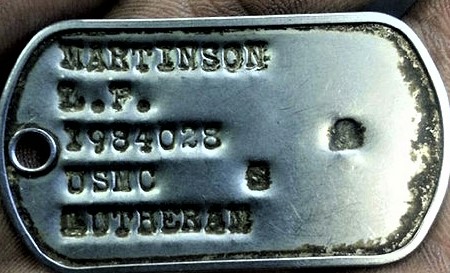 |
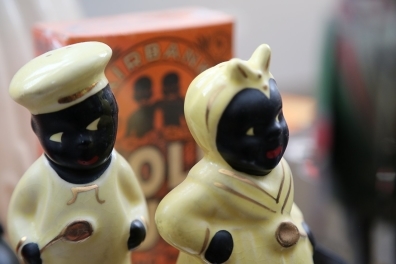 Follow Up - "Black Memorabilia" Movie
Follow Up - "Black Memorabilia" Movie
Reminders
- Usually, the antique dealers who post on JustaJoy will negotiate on price.
- All members can post and sell for free including genealogical and historical societies.
- Societies are eligible for FREE JustaJoy.com memberships for Society library computers.
- We are always available to help with a program introducing JustaJoy.com to any group.
- Don't forget about "General Search" when you want to search a place, school, regiment or any other parameters other than surname.
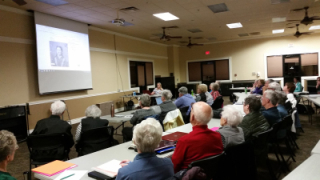
"Black Memorabilia" - New York Movie Premier Feb. 19th
What better time for the movie we worked on a few years ago to premier than during Black History Month! The debut will be at the Metropolitan Museum of Art in New York City on February 19th.
Along with other segments, our many years of dealing with these elements of history will be reviewed with an eye for racial lessons that can be learned. It is a product of Chico Colvard, a filmmaker and professor at Boston University. The movie will likely make a television debut at some time, later.
(P.S. - The movie was on PBS about a year after this note.)
|
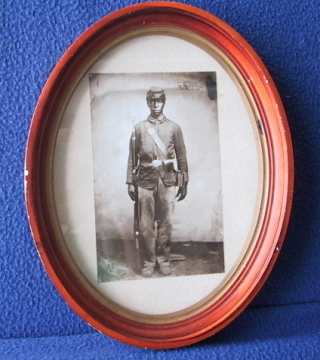 |
|
Q: How Many African-American Collectibles Are Available?
A: The abundance and variety of Black History items are nearly unlimited. Some, quite honestly, are heartbreaking, but nearly all, when taken in context, are inspirational and instructional. From military items that date to the Revolutionary War to slave tax documents, the possibilities are amazing. In the antique world, Black collectibles are quickly escalating in price. Buy pressure is created from new African-American museums such as the Smithsonian Museum of African-American History and Culture that opened in 2017, as well as older museums such as the DuSable in Chicago. There is also a growing general appreciation of what many people recognize as one of the most incredible histories of overcoming known to man - from slavery to the U.S. presidency in 150 years!
In the JustaJoy antique business (forerunner to JustaJoy.com), we were fortunate to handle everything from a "WHITE'S ONLY" water fountain to the galvanized tub (currently in the Smithsonian) used by Dr. Martin Luther King to soak his feet after the first day of the Selma to Montgomery march. As exciting as these items were to discover and place, they are probably not as important as those that are identified. Identified artifacts can be priceless to the families they touch. Everyday photos, documents, dogtags and other militaria, sports and political objects and much more regularly surface to be discovered. Although slavery records are often difficult to place, due to laws against slaves having last names in many states, there are thousands of records that can be found. Emancipation and estate records, bills of sale, slave hire, tax and insurance documents and much more can be found. Many of these were legally recorded, making it possible to find in courthouses, as well.
We have also handled detailed letters about the daily lives of specific slaves. Slave passes and tags that specify occupation, owner and residence, can also be found. There are even Civil War documents that record a purchase of the slave and his immediate enlistment into the U.S. Colored Troop Service. From slave to soldier in ten minutes or less - plus the birth of a surname!
More and more antique dealers who specialize in these kinds of items can be found. There are even specialty antique shows that feature Black History, perhaps the largest of which is the Black Memorabilia Show held annually in Gaithersburg, Maryland. This year that show is scheduled for April 14th and 15th.
There are few areas of American History that reflect as much passion, drama and victory as does African-American history and, thankfully, identified artifacts abound. |
|
Millie Christine McKoy - A Very GOOD Story!
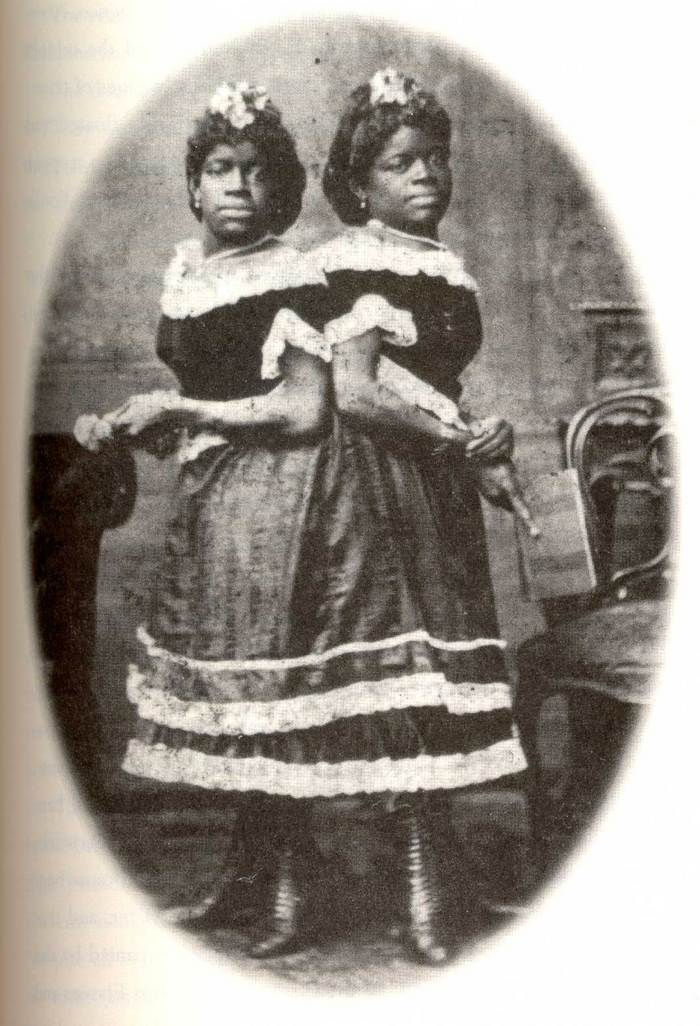
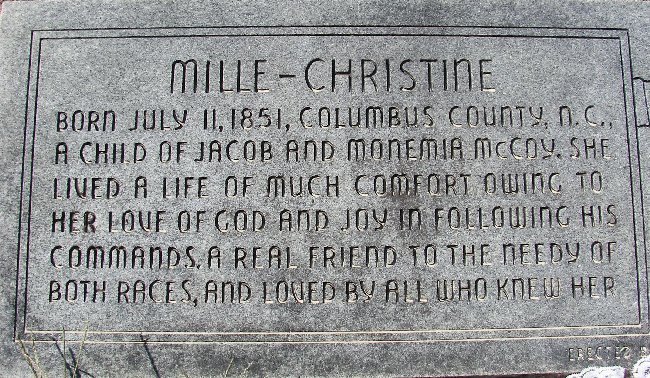

Are Black History Items Only For Black People?

 Casting Call!
Casting Call!
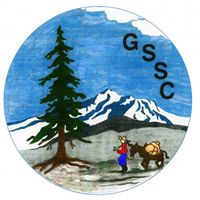 |
 |
|
Welcome Siskiyou County Genealogical Society! |
|
|
Now, I want to tell you, it is fun to talk to Patricia Healy from Siskiyou County, California. Her descriptions of her part of the state belie any and all stereotypes. She makes it sound like the Conestoga Wagons are still parked in the back yard! And politics - just don't get her started. As a hardcore advocate of the creation of the 51st state of the Union (the state of Jefferson), Patricia believes her part of the world should be so knighted and can easily explain that she is not alone in this plan. |
Just like so many genealogists, Patricia is self-defined and self-assured and as president of the Siskiyou County Genealogy Society, she is always looking for good opportunities for her members. Patricia has therefore taken advantage of our offer of free JustaJoy memberships for Society library computers. But the treat in this exchange was really ours. Thank you Patricia for a GREAT conversation! |
.jpg) A Special Match!
A Special Match!
 |
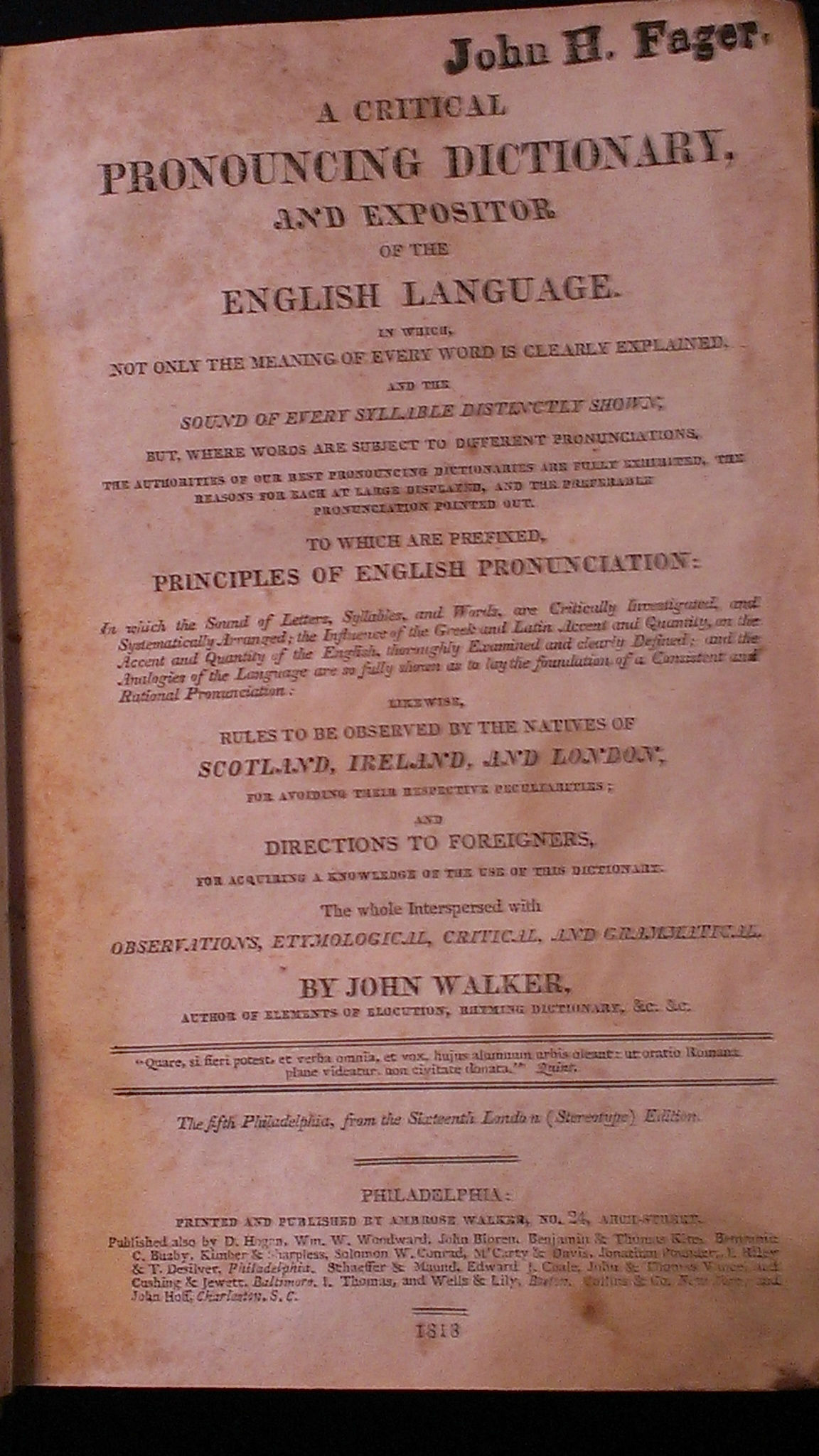 |
|
|
1818 Words
An item posted on JustaJoy in December really got our attention. It was an 1818 Walker dictionary that had belonged to a member of the Fager Family. As a dictionary enthusiast, I couldn't help but wonder, "Could there be lost words from 200 years ago?" Our words and our dictionary change over time. The past year saw 250 new words added to the Merriam-Webster dictionary. But what about the words they take out? It is hard to think of words dying. Educators are well aware of the link between vocabulary and concept development. Words are labels for ideas. Does that mean we lose ideas, or worse, understandings, as we lose the accompanying words? I believe that question may be too deep for "The Heritage Room" but I know for sure I forever want to be a "Questant" - a word I found in this book that means "a seeker of knowledge". I like the lay of this archaic word and even though the Walker dictionary already defined it as "not used" in 1818, I am going to embrace it. |
A Quillative Quiz
Would you like to be my "quartercousin"? What a lovely lost word that means friend. And now, a quillative quiz for my quartercousins. Is the following paragraph about: A. Cooking
B. Flying
C. Words
(You probably won't be able to depend on Dictionary.com for help. Many of these words are truly extinct.) By using altiloquence and ambages, I want to create an amandation without being an amanuensis. I do not want to amate or become altisonant or use anadiplosis in the process. I do not want to create amaritude or ambilogy. Perhaps the outcome will contain enough amability to be amatory and anacamptic. I probably won't use amphibrachs or anapests to everyone's delight. Please don't anathematize me! Spellcheck thinks I have lost my mind!
Answer - Words |
|
 Thanks for reading this newsletter. See you next month!
Thanks for reading this newsletter. See you next month!
"The Heritage Room" - November 2017
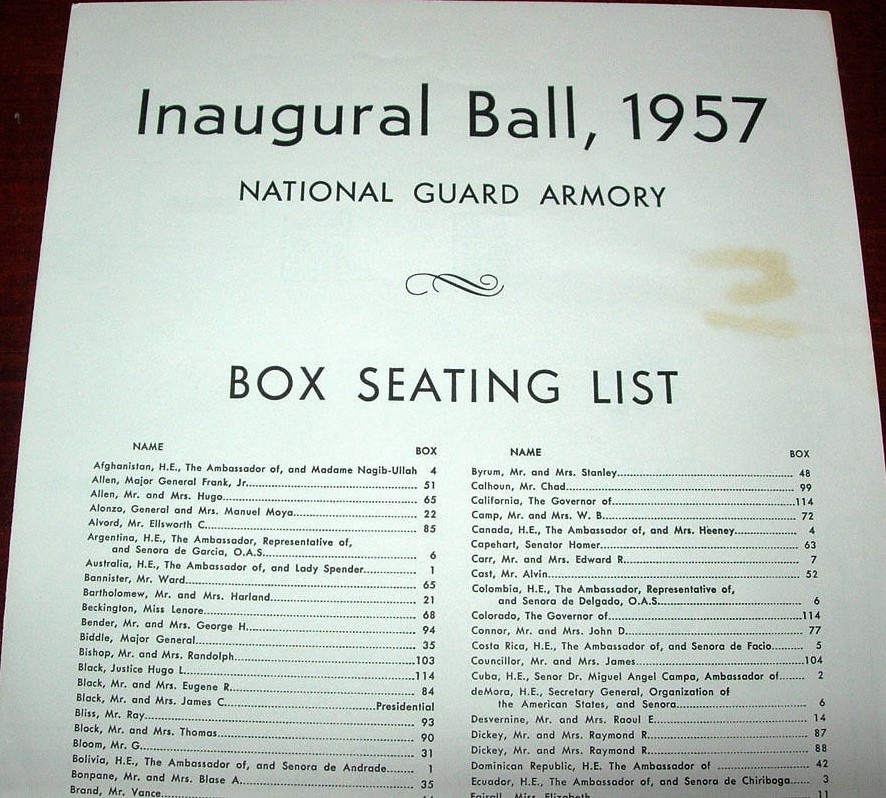 |
Presidents & Patriarchs at |
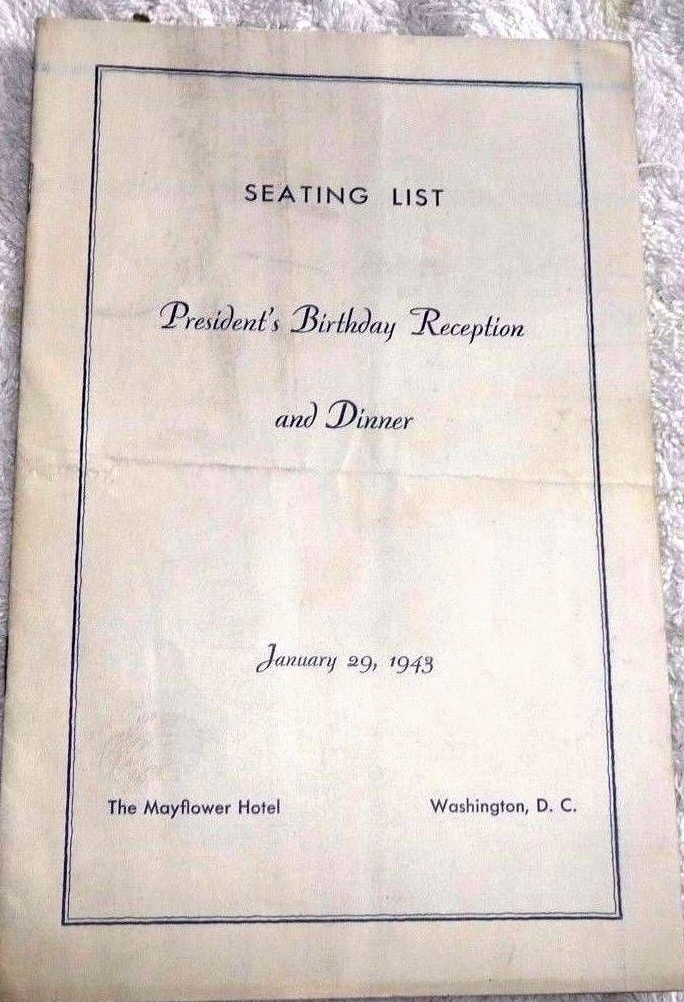 |
Some new and interesting items were added to JustaJoy this past month - three seating charts for American presidential events. Two were added for different inaugural balls for Frankin D. Roosevelt in 1957 and one for a dinner Taft in Boston in 1909. Each of these seating charts contains hundreds of names - all of which are now indexed on JustaJoy.
What interesting items these would be to pass down to the next generations, honoring both American history and family history at the same time! They would also be a great addition to anyone's Heritage Room. Be sure, to check out JustaJoy to see if you had an ancestor who was a part of one of these auspicious occasions!
California JustaJoy Member Discovers Identified Civil War Campaign Chair!
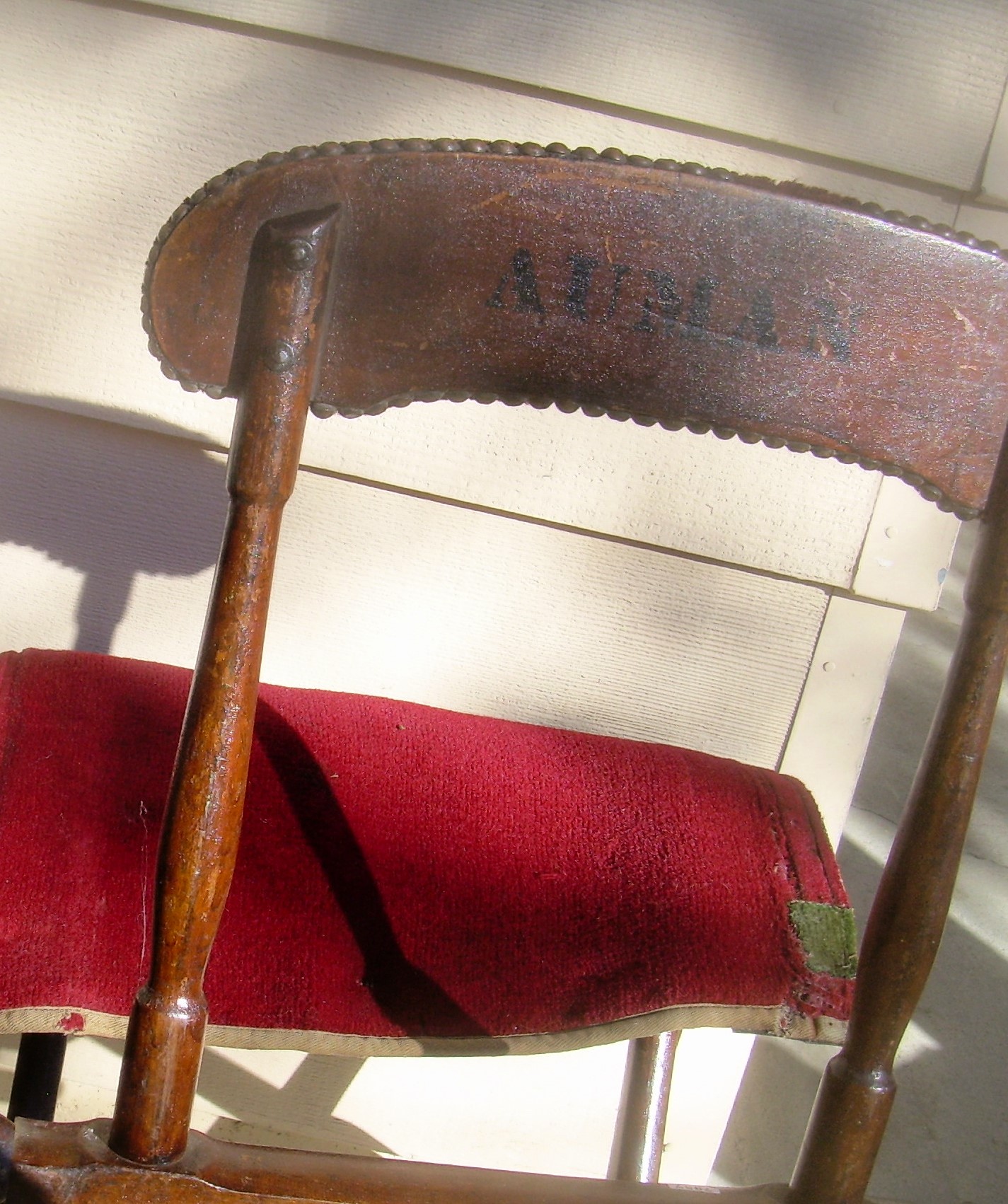
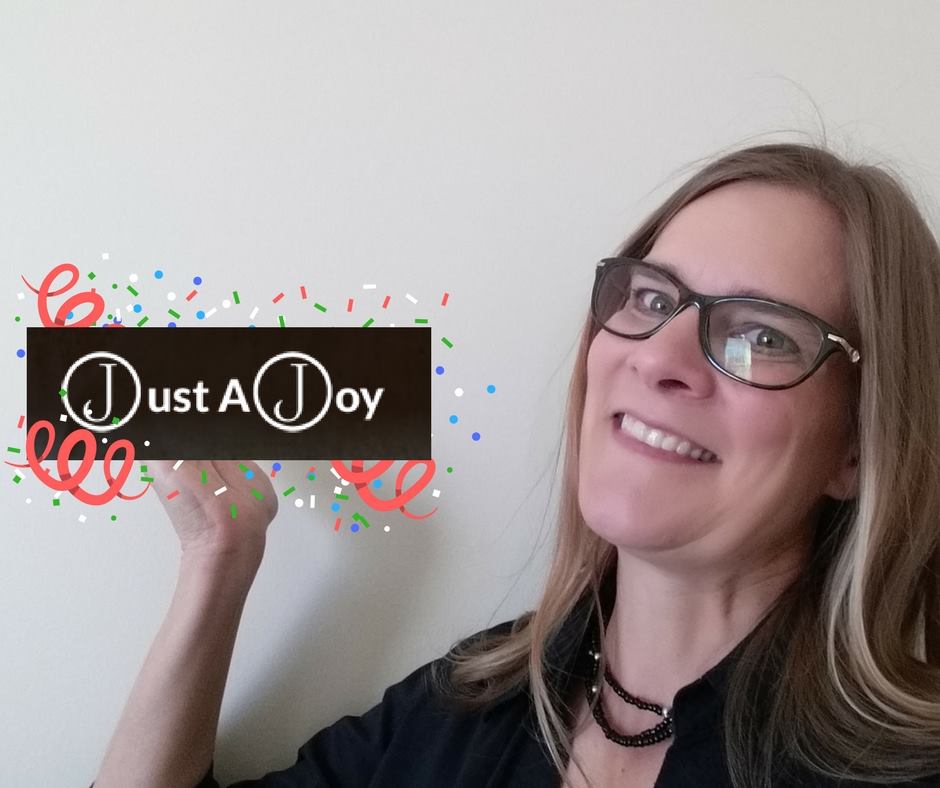 Meet Angela Rodesky - An Aptly Named Angel
Meet Angela Rodesky - An Aptly Named Angel
Special Reminders...

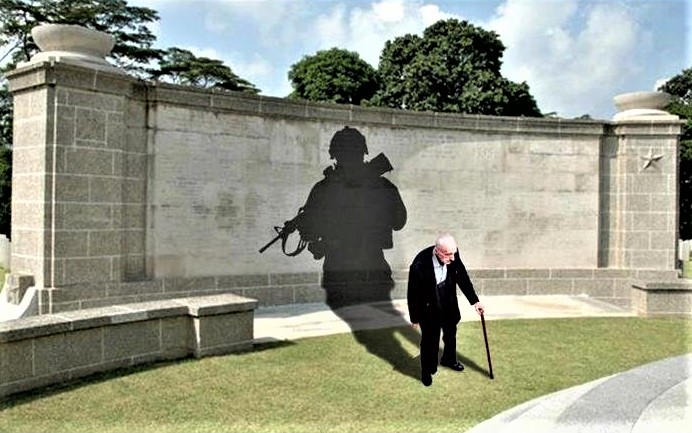 "Hug a Veteran" on November 11th!
"Hug a Veteran" on November 11th!
The Mexican Border War
|
|
|
Both "Blackjack" Pershing and "Pancho" Villa were larger than life. Villa escaped capture and Pershing would later lead the victorious American Forces in WWI. The honor roll, recently added to the site, has the names of the soldiers who served from Company D, Fourth Pennsylvania Infantry, National Guard during this conflict.
As is typical, it is illustrated with images of the men's training and experiences including a picture of General Pershing. The men listed are associated with 90 surnames. We can only hope it finds its way into the right hands.
|
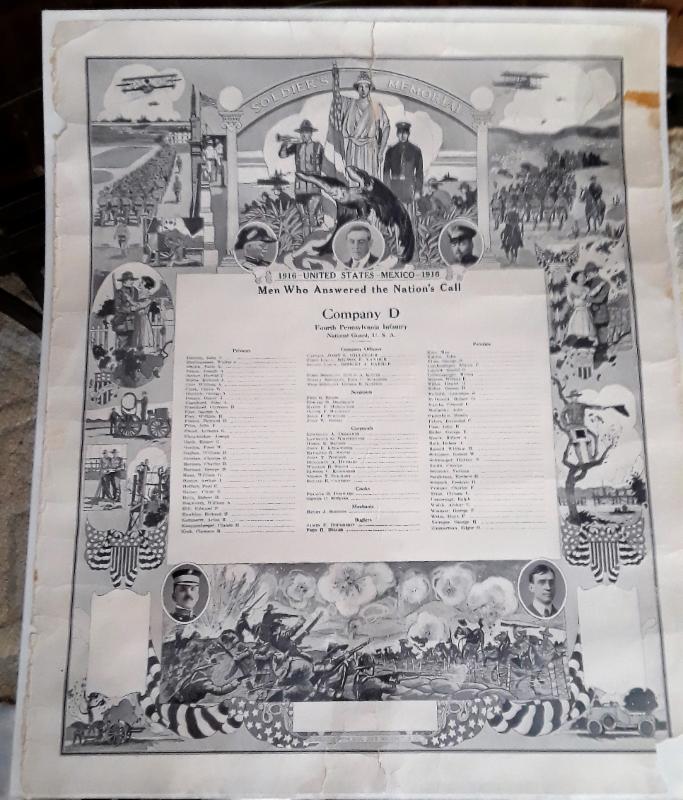 |
All Aboard! - The Romance of Railroads
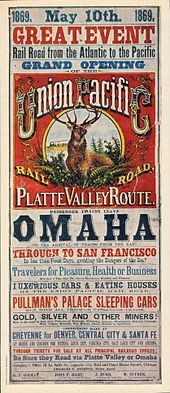
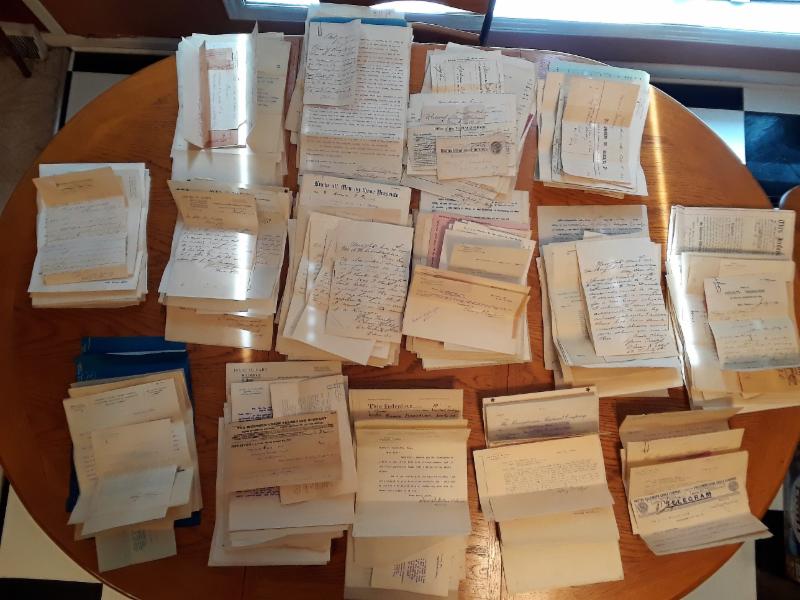
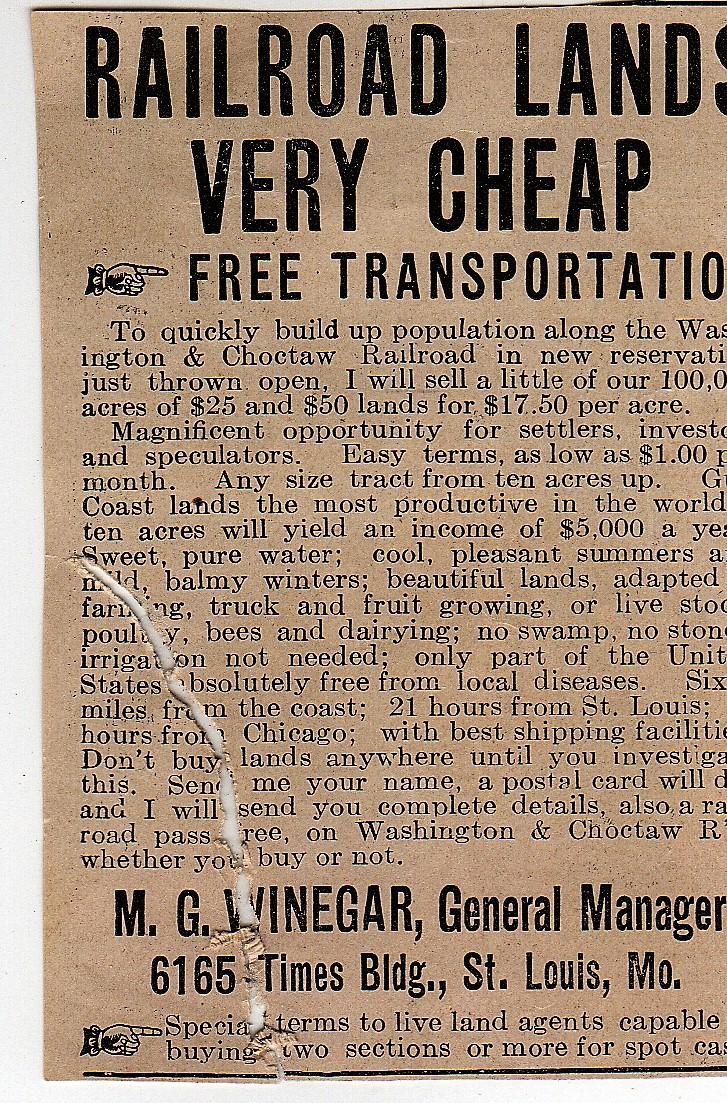
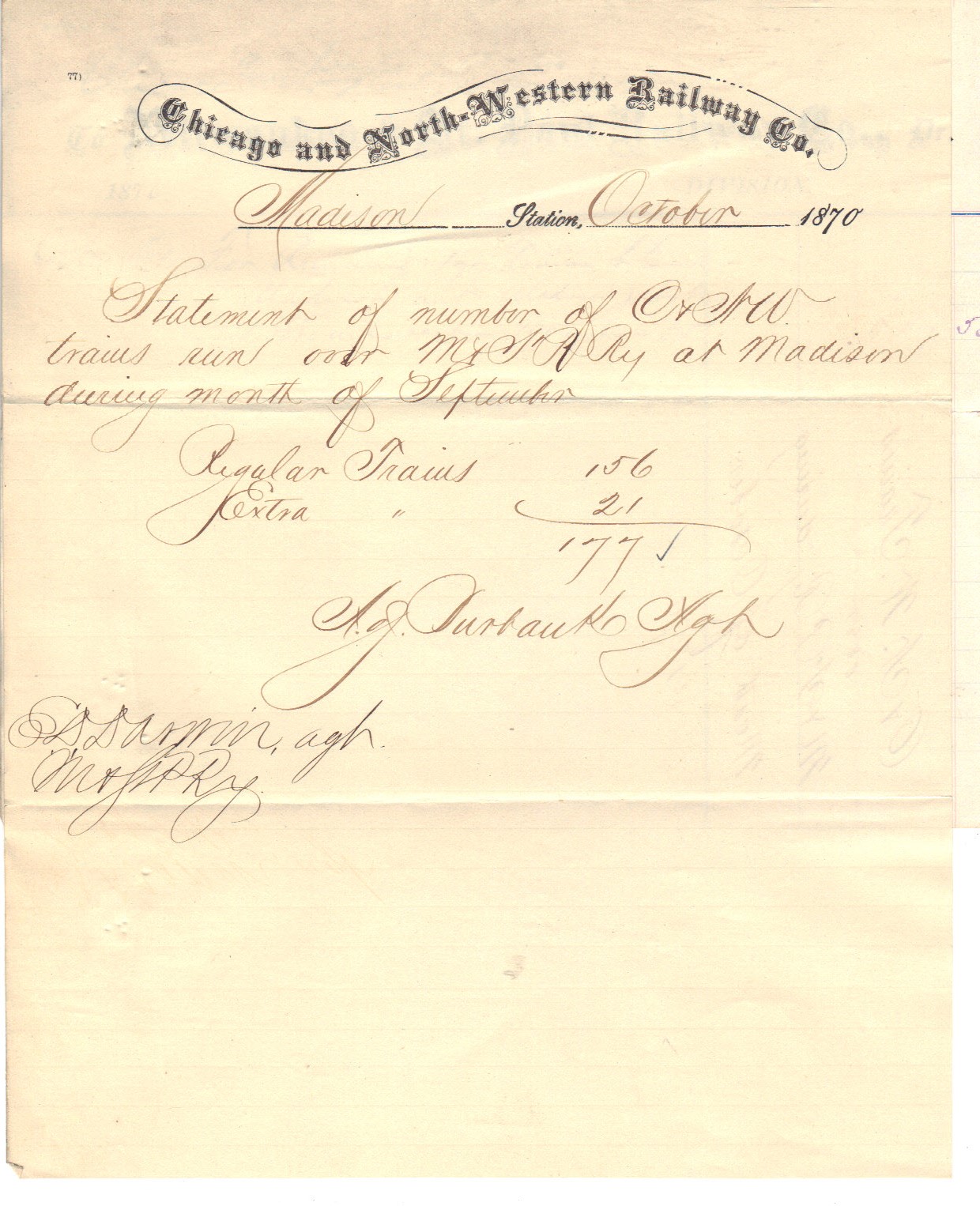
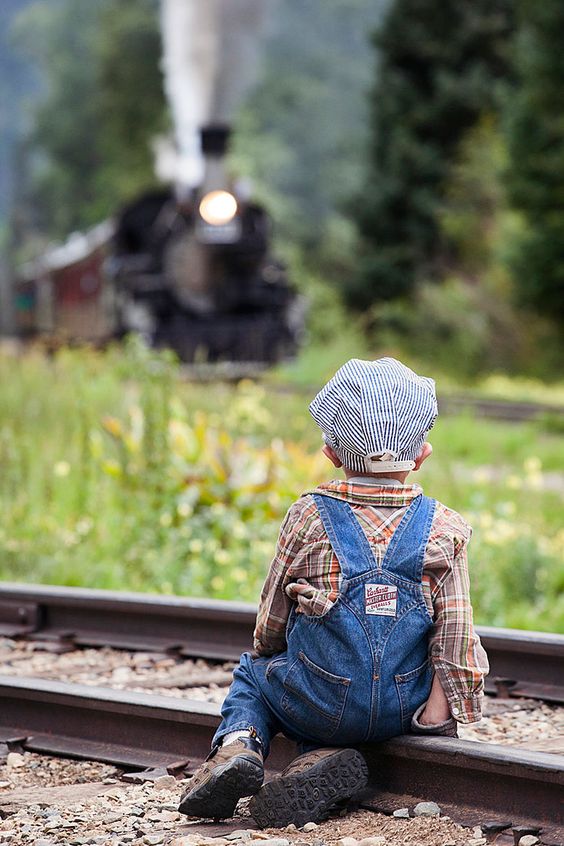
A Hungry Heritage - Kinfolk in the Kitchen!
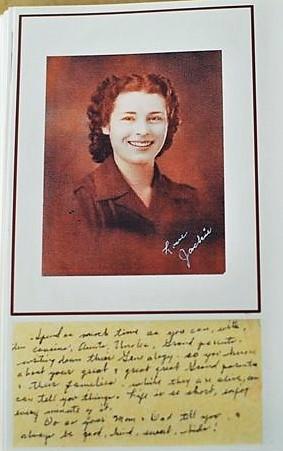
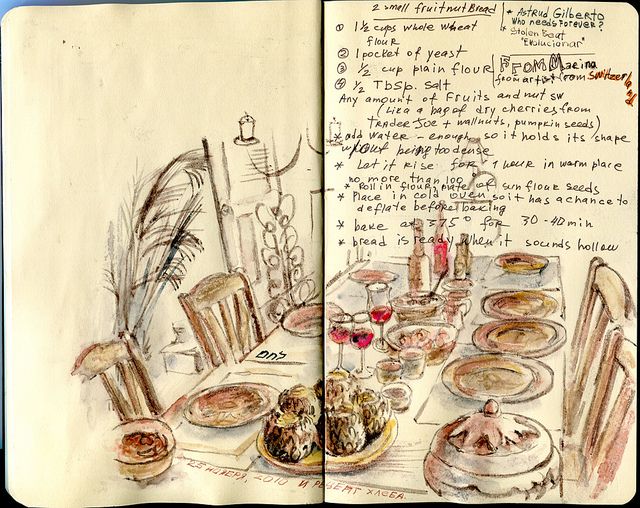
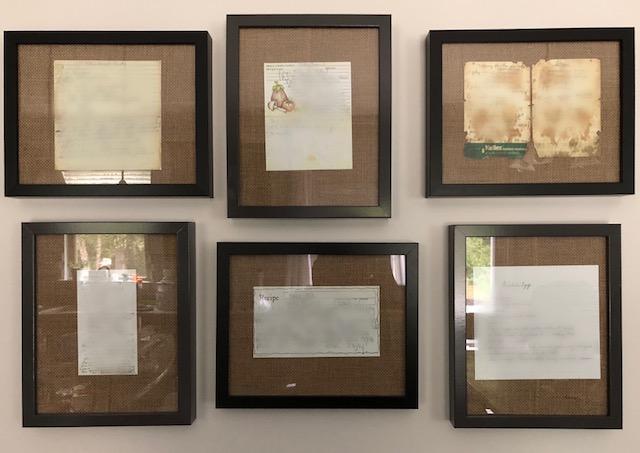
|
JustaJoy.com Wants To Be Your Civil War Research Angel 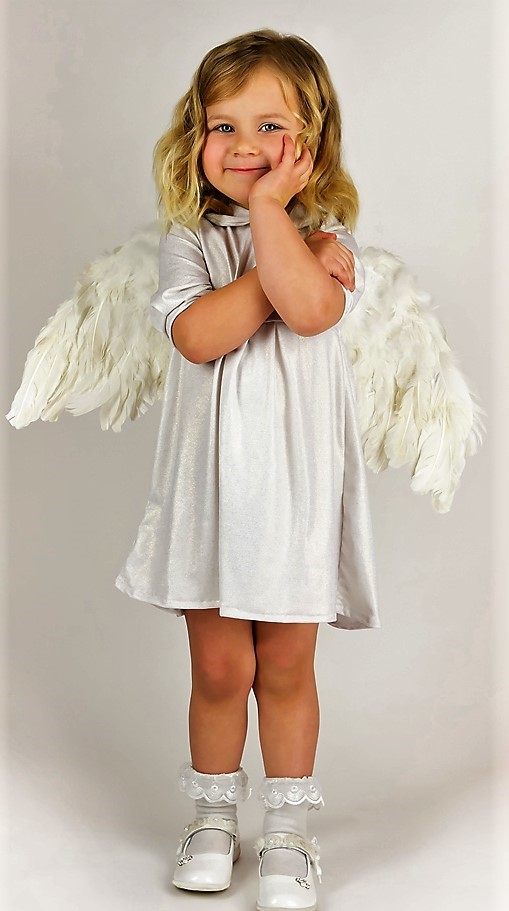 |
||
|
A JustaJoy.com general search on the term "Civil War" returns 971 original items as of this writing. Everything from letters and photos to identified guns and swords can be found and regularly are! Just ask Coreen Arioto, from Fresno, California who, just this month, discovered the only known photo of her father's great-great-grandfather, Garland J Blewett, Jr. The original photo showed him in his Civil War uniform as a member of the 12th Kentucky Cavalry. Coreen was delighted to surprise her father with such a great find! Cindy Reinhardt, also from California, has previously discovered original Civil War letters from her great-great-grandfather and was very generous with her praise, "Thank you from the bottom of my heart for shepherding this fabulous piece of our family's history back 'home'".
It's just amazing to hold a letter that my great-great-grandfather wrote nearly 150 years ago, at the close of the Civil War!", she wrote, "Wow!! I can't thank you enough for recognizing its value to his descendants and listing it on JustaJoy.com. It has become an instant family treasure!"
"But, I am not sure who MY Civil War ancestors are," you might say.
Of course, Civil War artifacts can only be discovered if the genealogist knows the Civil War history of their ancestors. Are you having trouble finding good information about a suspected Civil War ancestor? If so, we want to help. Because we are so active in researching these kinds of things, we have experience and access to many sources that require payment.
We are happy to share these resources by researching for your Civil War soldier. If you are a JustaJoy paid member just send an email providing everything you know about your ancestor, and we will review everything we have to see if we can help for free! Maybe, we will discover something GREAT! |
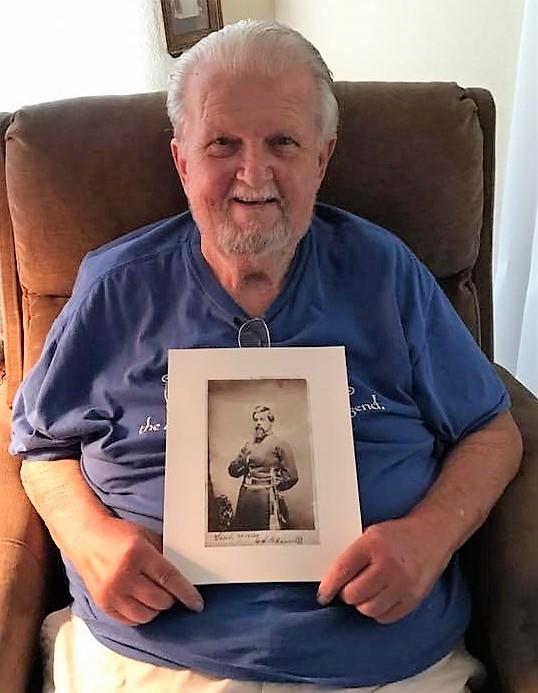 |
|
Thank you, Esther Shuman, MyHeritage.com blogger extraordinaire, for the opportunity to submit a guest blog about our work at JustaJoy. The blog is entitled, "Do Genealogists Care about Family Artifacts?" and addresses the idea of "DNA Memory" and other important topics.st, 2017
MyHeritage Guest Blog - "Do Genealogists Care about Family Artifacts?"by Esther Shuman, August 7, 2017 |
 |
||
|
This is a guest post by Joy Shivar, owner of JustaJoy.com Family Heirloom Exchange, a surname-searchable, bulletin board-style website used by antique dealers and others to reach out to family members. With thousands of original items associated with more than 100,000 surnames, JustaJoy has become the largest in the world at matching antiques and artifacts back to families. Joy has background as a lifetime antique collector and dealer which makes her uniquely qualified for such a venture. She describes her website as "Antique Hunting in the Family Tree" and loves when matches are made... Do genealogists care about family artifacts? The quick answer is yes and no. I have met people who would walk a hundred miles, if necessary, to have the chance to hold or own an item that belonged to a great-grandparent, while others would simply throw all of that "old stuff" away. There is a joke in the antique business that antique dealers buy "junk" but sell "fine antiques."
Perhaps, it is all perception but I think it goes a little deeper than that. After many years of studying how old things touch some people, I have come up with a theory I call "DNA Memory." In the antique world, different customers often seem to be instantly attracted to a wide variety of items. One lady sees the beauty in a handmade quilt while another is drawn to books, vintage clothes or old tools. I have seen men touch the stock of a colonial period musket with such reverence that it was easy to see they "felt" something from the gun.
DNA Memory would explain why some people are drawn to one class of antiques, art, and silver, for instance, while others are drawn to primitives. I have even come to believe that if people did not feel something from old things, there simply would not be an antique industry. But an industry it is. In nearly every town and city, one can find antique stores, malls, and events. Each one seems to hold items that others do not have and different dealers have different specialties. Everything from antique newspapers to world fair souvenirs can be found and many of these items are identified.
Family relics get away from families in many ways. Widows or widowers of second or third marriages may not have the necessary knowledge to place items correctly. Bankruptcies and divorces can also cause precious artifacts to become "orphaned heirlooms". But the biggest culprits we have found are administrators of estates. Often overwhelmed with a massive collection to distribute and burdened with the accompanying court-ordered paperwork, an executor will often lose sight of the big (generational) picture. They cannot be concerned with little things like photo albums or family Bibles when they have a $250,000 estate to dissolve!
As a result, nearly every antique dealer ends up with family-related items. Often the date and associated place can also be determined. These items take many forms. Letters, regimental photos, dog tags, friendship quilts, art, signed handmade furniture and clocks, engraved silver and gold, advertising pieces of all kinds, marriage licenses, baby pictures, yearbooks, personalized shaving mugs, trophies, wanted posters and court documents, needlework, and much, much more can be found.
We sometimes hear, "But, I already have everything from my family," to which we answer, that is not possible. We have found that genealogists regularly underestimate the massive assortment of items available. Because most family-related artifacts have real value, they are rarely destroyed, just passed from collector to collector. And we can also say on good authority, as these items are restored back to loving families, it brings a kind of happiness that little else can do - not just for the families but also for the person who made the restoration possible.
Take the story of two JustaJoy members, for instance, Bruce Weekley (Columbus, North Carolina) and Luella Taylor (Denton, Texas). Bruce, an antique dealer who specializes in historical paper, pictures and postcards, joined JustaJoy as quickly as he heard about it in 2012 and began posting fantastic material that included items that predated the American Civil War. One item Bruce posted was an 1856 business ledger from a general merchandise store in Shelby, NC.
The business ledger that Bruce purchased. He purchased the ledger at an antique auction near Shelby and posted it on JustaJoy, listing all the names he could find. The store had been built and owned by Charles C. Durham, great-great-great-grandfather of Luella."When the ledger arrived, I cried," wrote Luella. "Just to hold something over 150+ plus years old that he had held…" Luella has plans to pass the ledger to her great-grandchildren to "make history a living study for them. One ledger crossing seven generations, not a bad accomplishment," said Bruce when he heard her plans. "I am so happy to have been a part of it." There are many more such events on the "Happy Stories" page on the website. The opportunity to discover family artifacts is the reward for all those years of research and can make genealogy tangible to the delight of many generations to come, as well. This is treasure hunting at its very best! |
|
||
|
|
|
Are You Kin to Ahtushonuppa or Churchateneah?Native American Collectibles on JustaJoy.com |
| Perhaps, like myself, you have believed that any hope of finding information associated with your Native American ancestry would be completely impossible, much less artifacts. But, perhaps, we shouldn't give up so easily. A couple of items have recently been added to JustaJoy that created curiosity about these possibilities. One was a 1797 Columbian Centinel newspaper published in Boston, Mass. and the other is an 1848 printed muster roll from information original gleaned during the 2nd Seminole War in 1837 in Florida. Both of these items have extensive information about the Native Americans involved. The Centinel listed all of the names of the chiefs who "signed" the treaty followed by an X in parenthesis indicating that each Chief actually only made "his mark" to show his acceptance of the terms. But the muster roll originally created in 1837 provides much more genealogical information.The muster roll is also a list of Creek Indians, ones that died while in service to the United States Military while fighting the Seminoles in the longest and bloodiest fight between whites and Native Americans in America's history. It is also the first war in America that was partly fought over the subject of slavery and the only war with Native Americans that involved the Navy and Marine Corps as well as the Army. More than 15,000 American soldiers died during this War of both disease and fighting. It also bears the distinction of being the only Indian War where the U.S. sued for peace. In fact, it never technically ended with any formal capitulation by the Seminoles, though many did accede by following the orders of President Andrew Jackson and moving to Oklahoma. The Creeks were close cousins to the Seminoles and actually fought alongside them in the First Seminole War. Many of the names of the Creeks on the muster roll are very similar to Seminole names. Differences arose that included the problems created when the Seminoles harbored runaway slaves and by the time War broke out again in 1835, many of the Creeks served on the side of the U.S. - even in intelligence positions as indicated by the muster roll's designation of persons in a "Spy Battalion".
What is extra special about the muster roll is that we can learn the names of the closest relatives of the Creek Indians who died while in service to the U.S.. A disclaimer written by Major W.G. Freeman, commander of the regiment, on the bottom of the roll indicates that "information in regard to the families of the deceased was obtained from their relatives and from the chiefs and is believed to be correct."
Among the names of the deceased is David Moniac, the first Native American to graduate from West Point (1822), a reminder that even in those early days, some Native American tribes were quite educated with their own written language and libraries. In fact, a "massacre" that occurred early in the Second Seminole War was quite elaborately related in prose by Seminole leader Halpatter Tustenuggee or Alligator - one of the victorious Seminole warriors who was present. A link to his description is below along with other links to more on the Seminole War.
The obvious problem, when researching Indian names, is that their pronunciation and spelling could differ according to who was doing the recording. Thus many Native American persons from history often have many spellings, if not many names. This, of course, makes the genealogical track even harder to follow, but not impossible.
One warning - as with so many things related to genealogy, the more we learn about our Native American ancestors, the more interesting they become and therefore the more curious we will be. It is an exciting avenue to explore and we will likely be writing more on this subject, as we discover more artifacts.
What I have already discovered has given me the hope that I may, personally, get to learn more about that handmade Cherokee basket in my own Heritage Room that came from my Grandmother's house - a beautiful grandmother who looked just like a Native American!
|
||

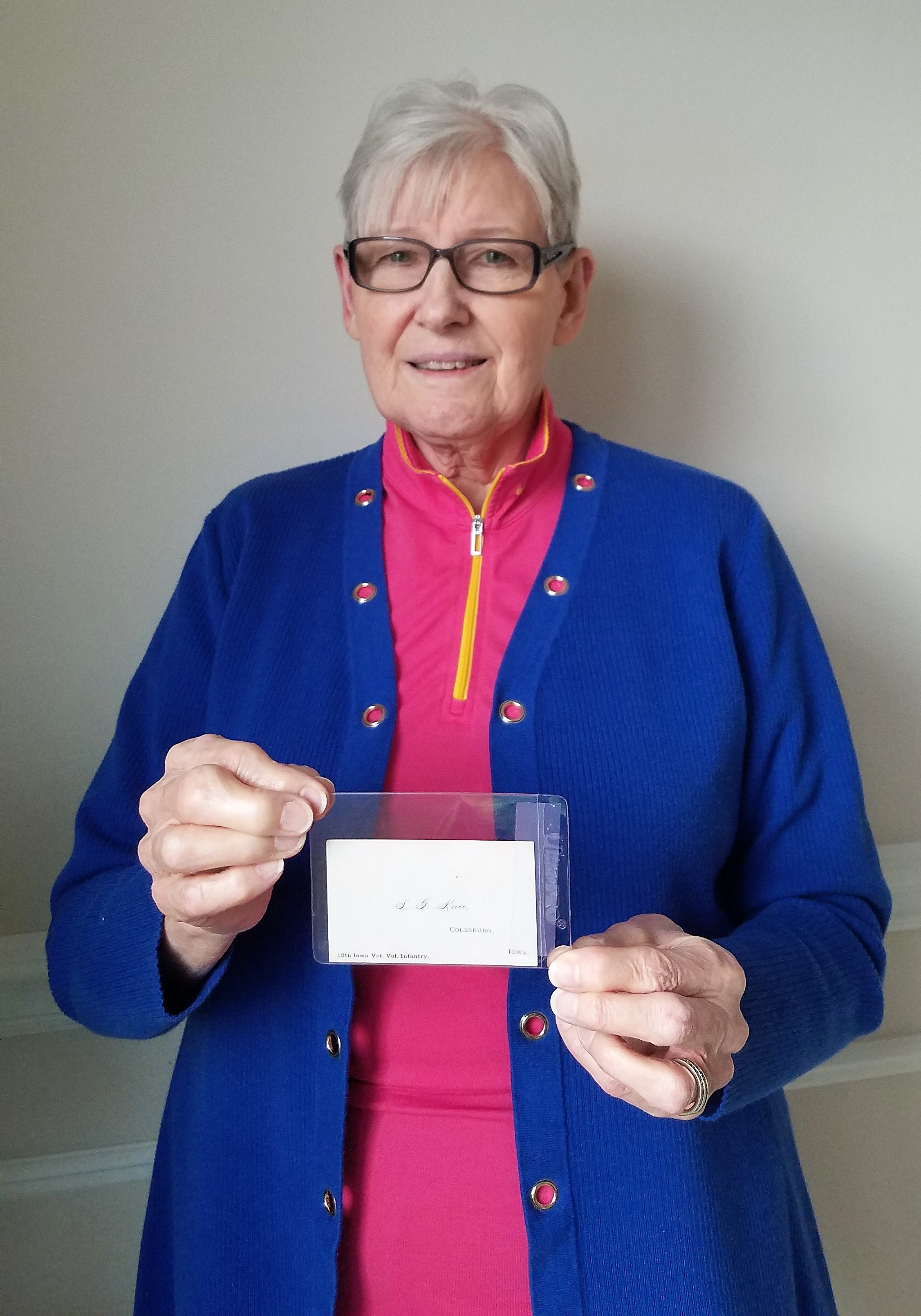
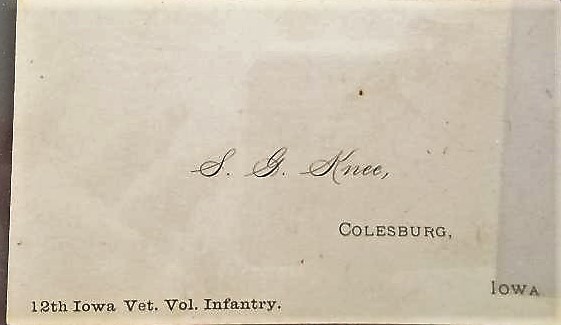
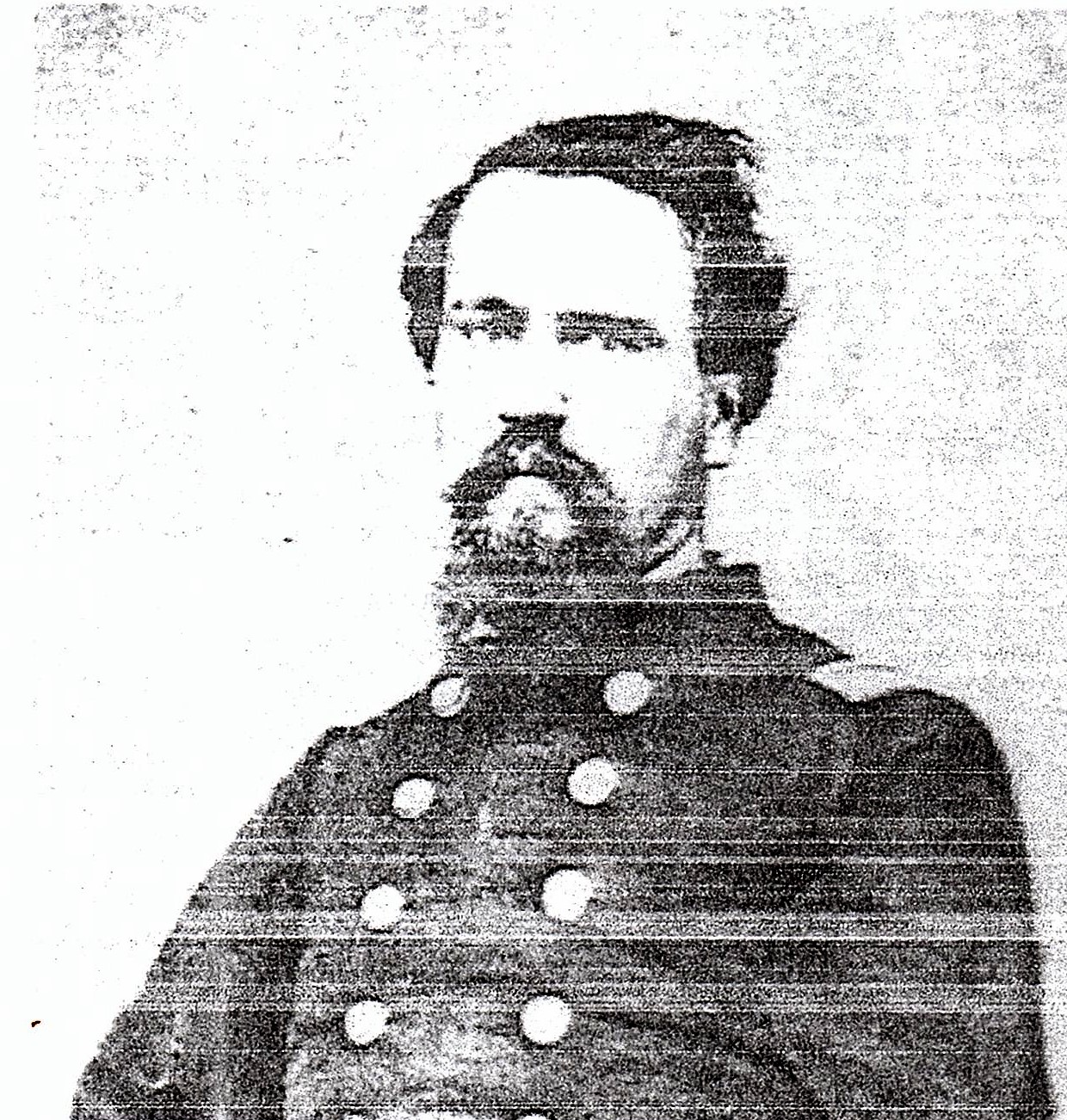
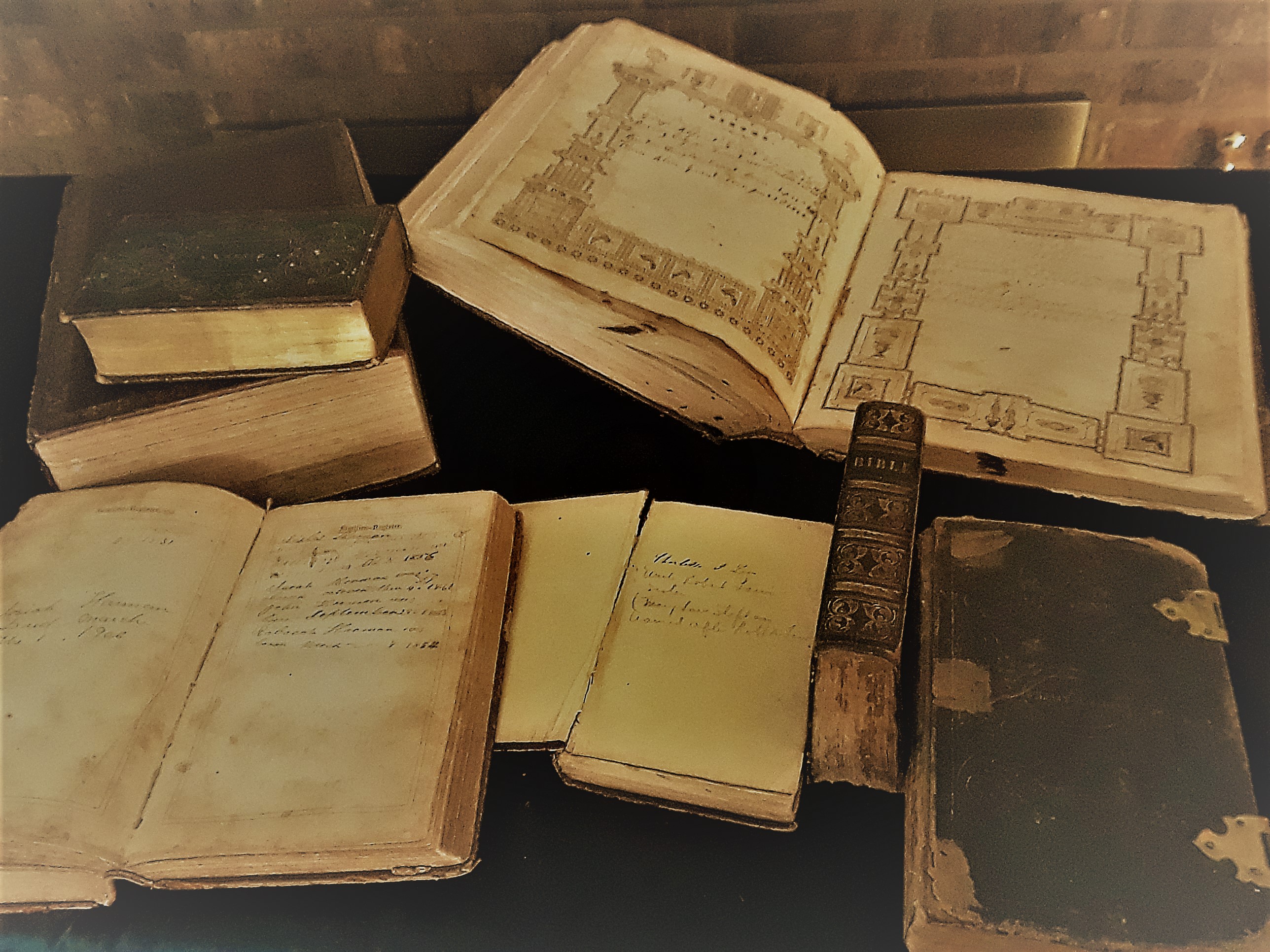
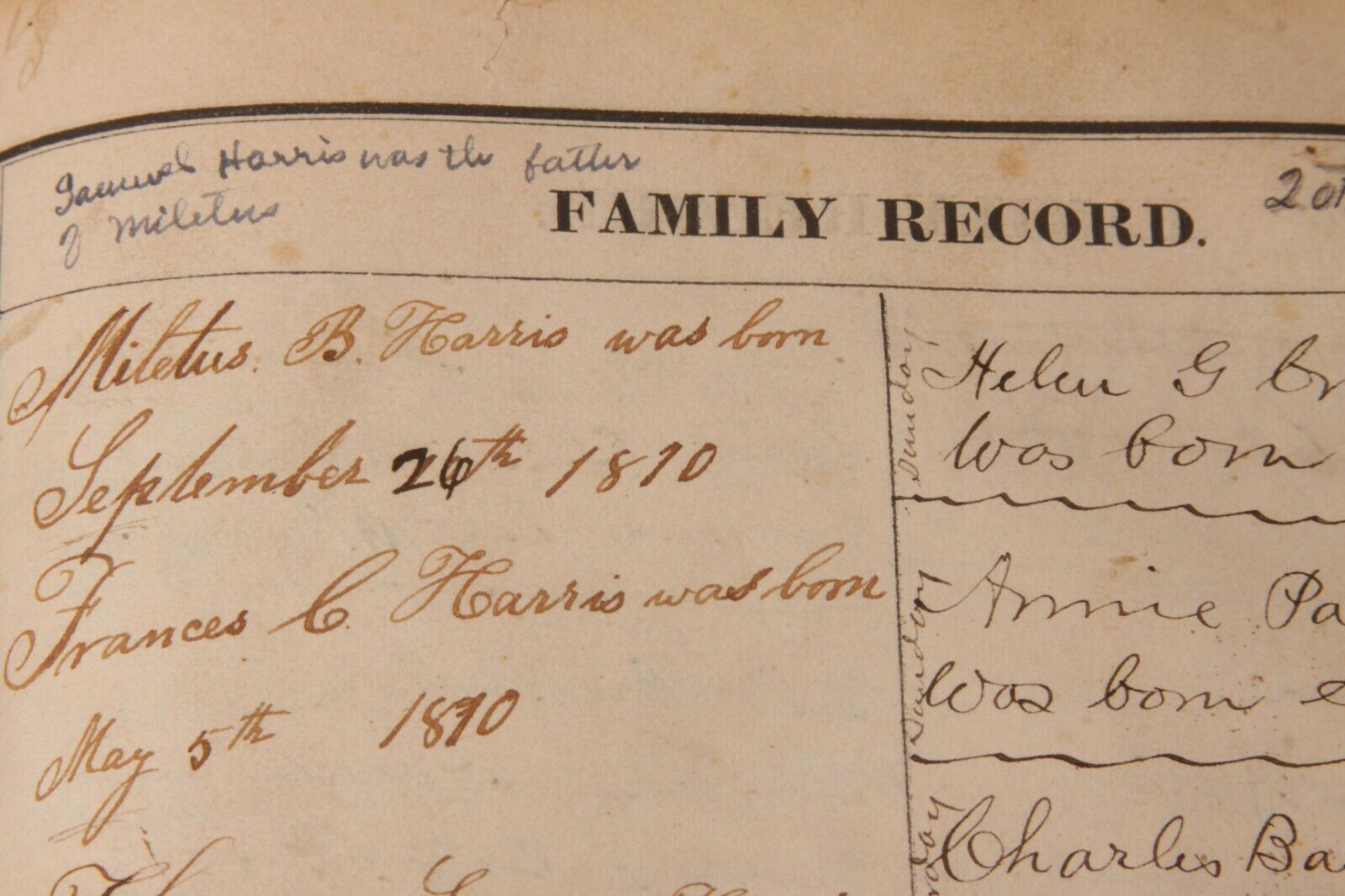
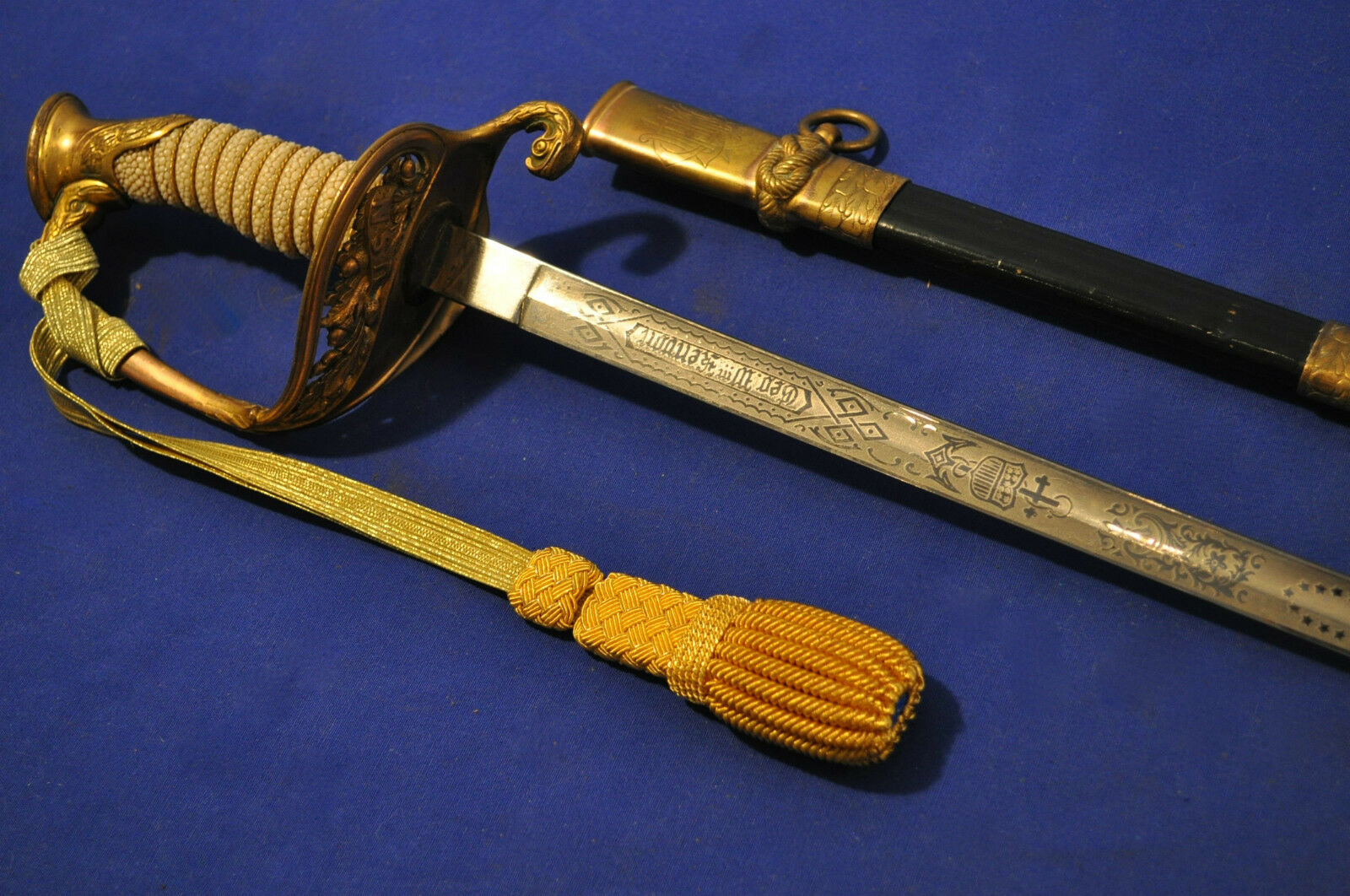

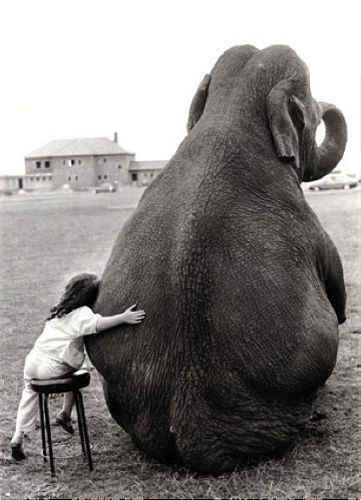
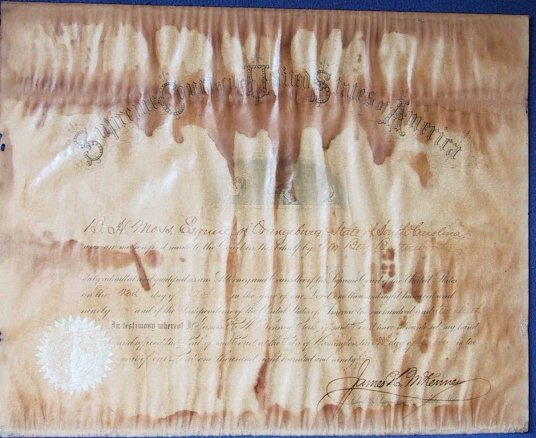
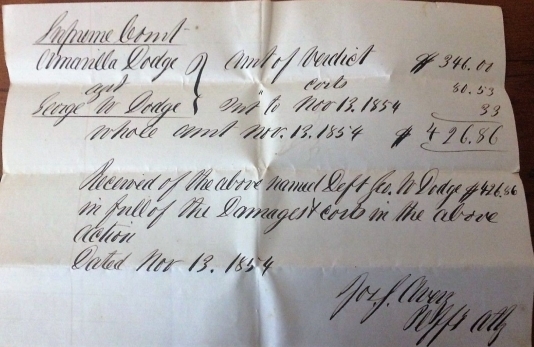
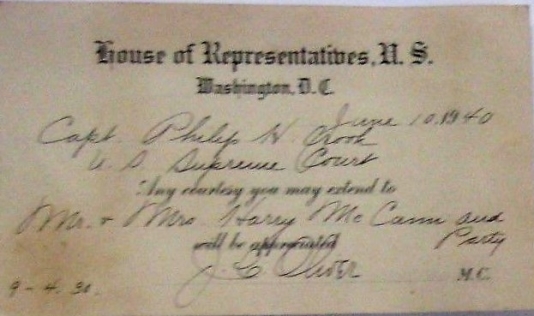
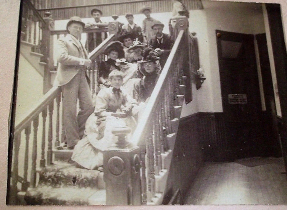
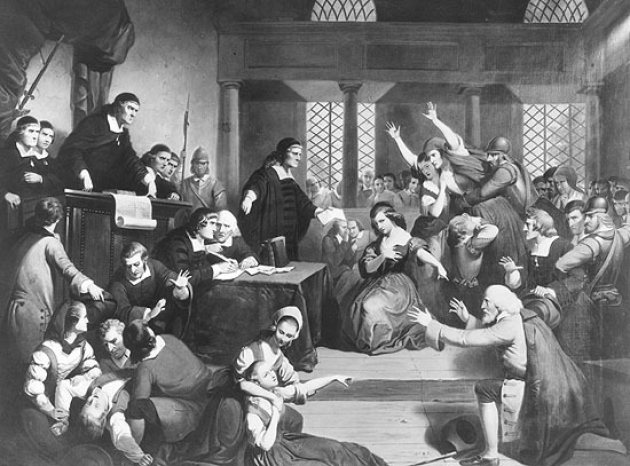
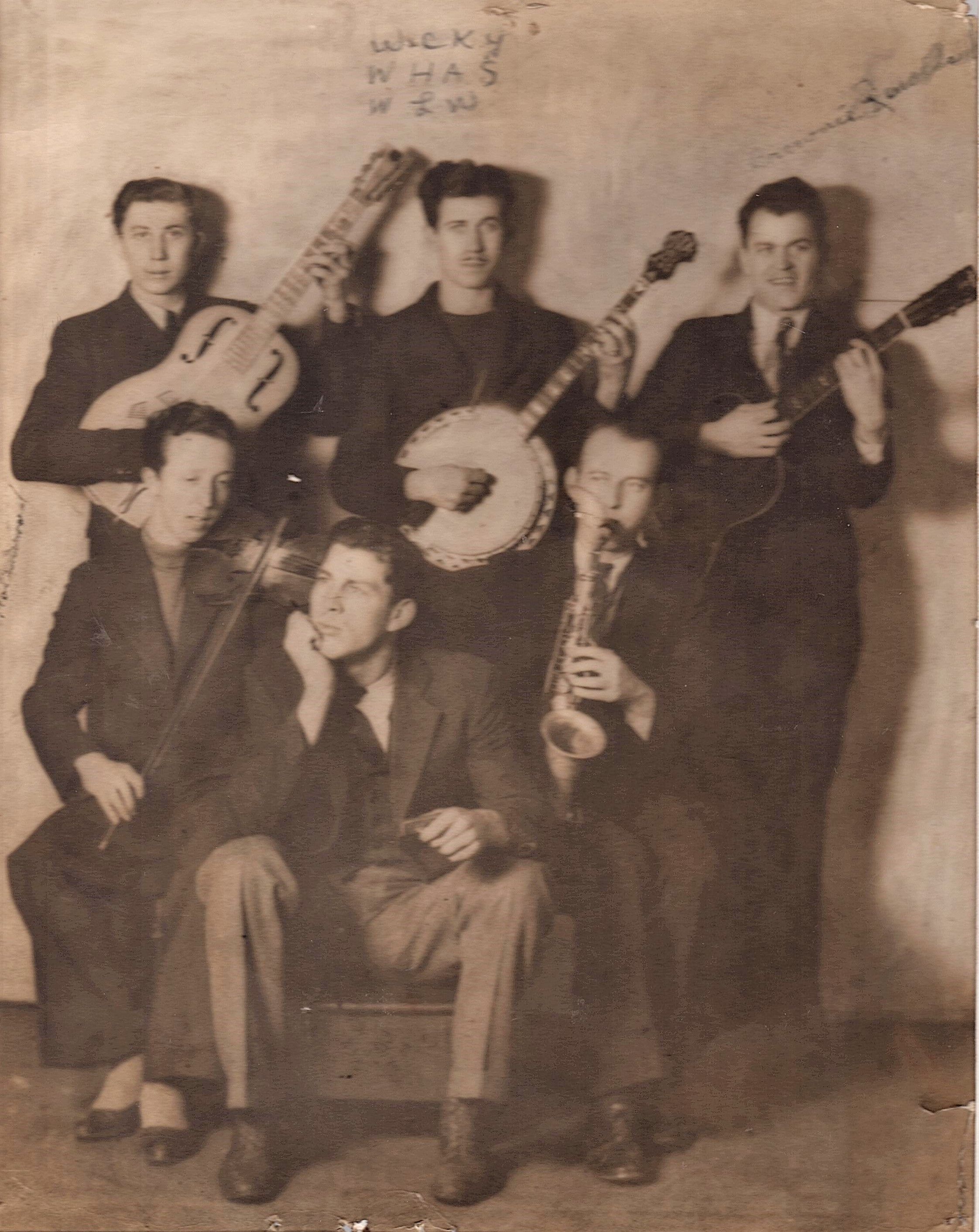
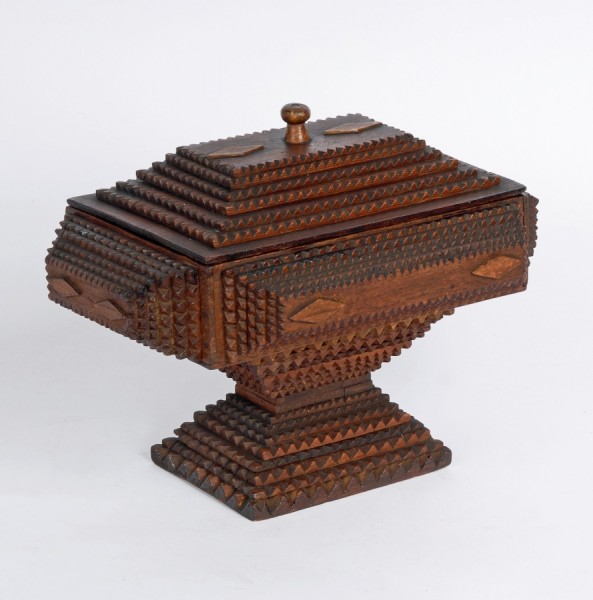
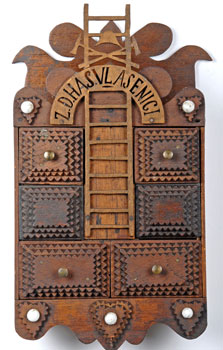
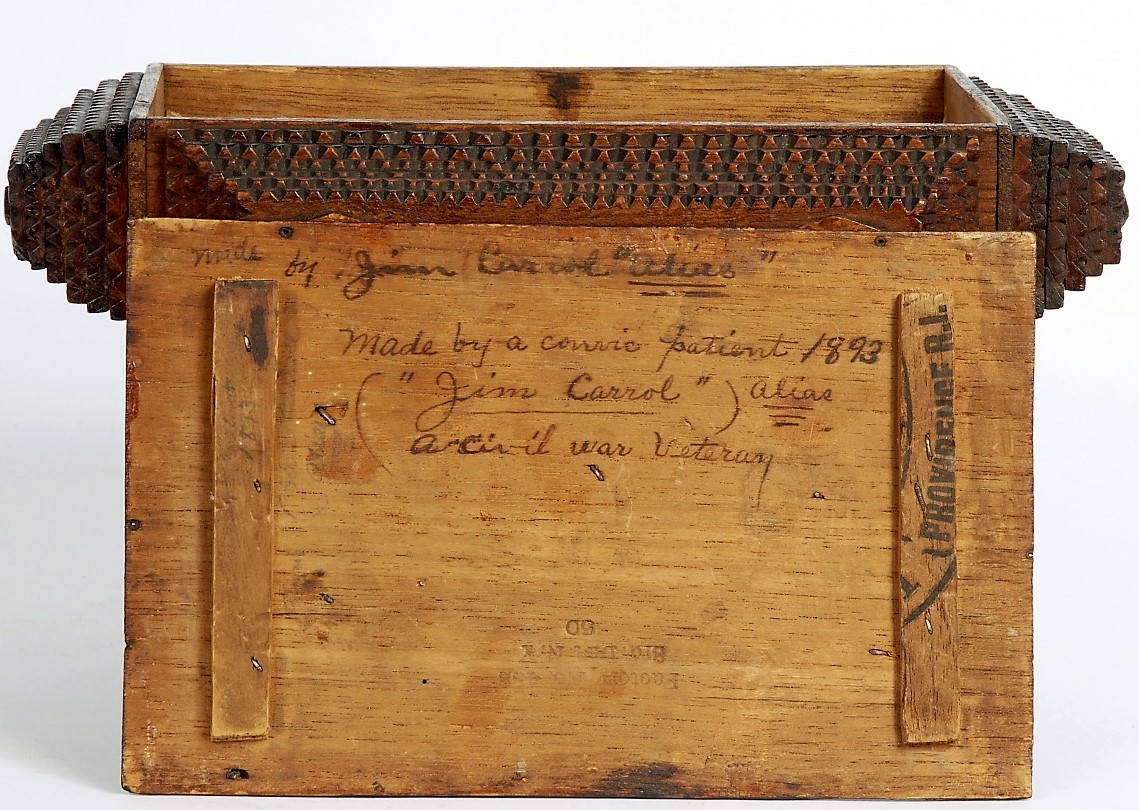


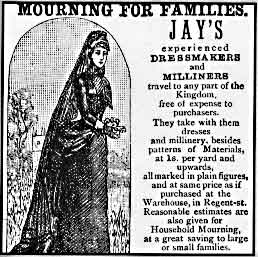
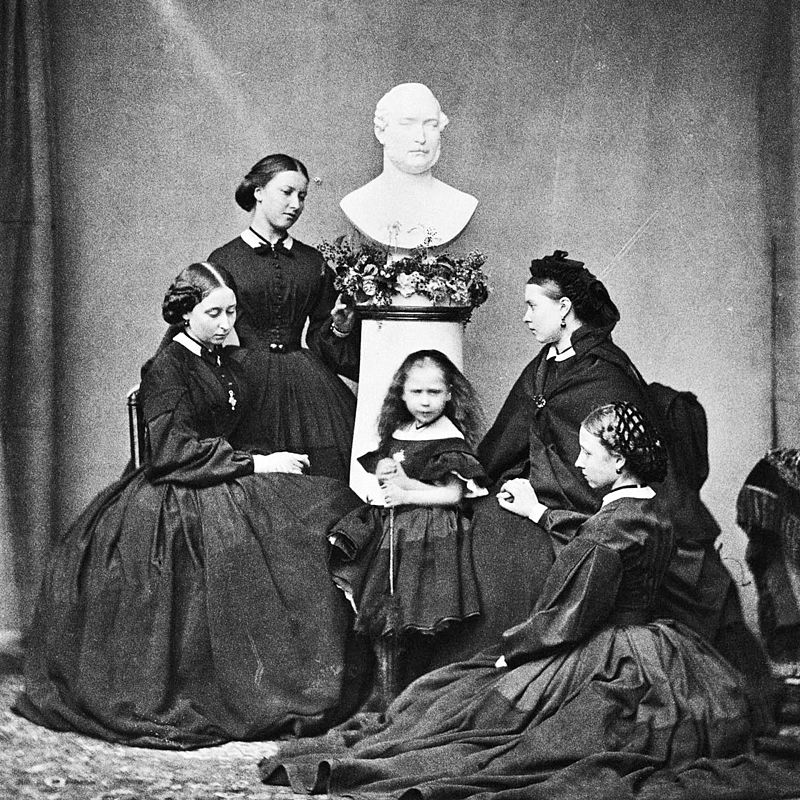
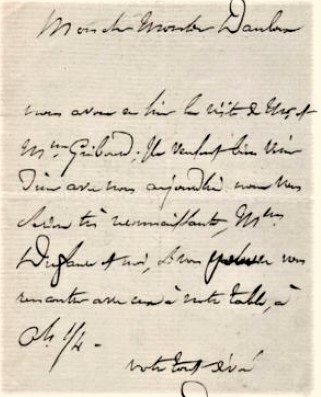
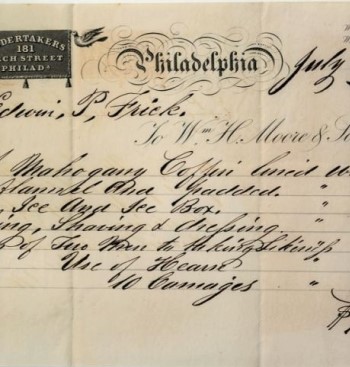
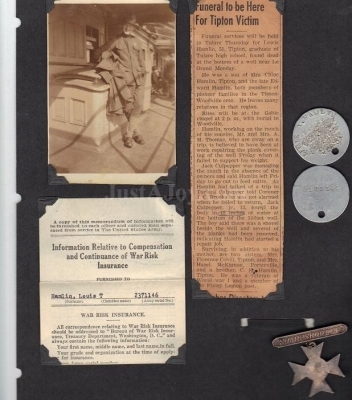
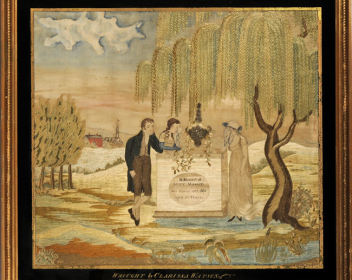

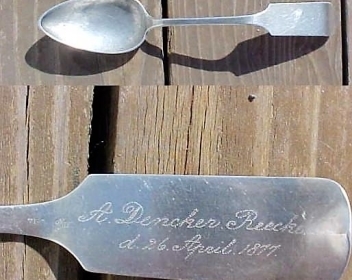
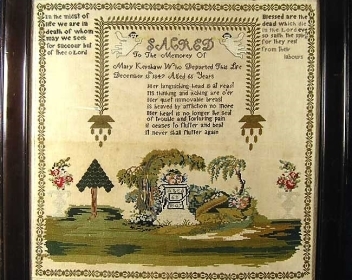
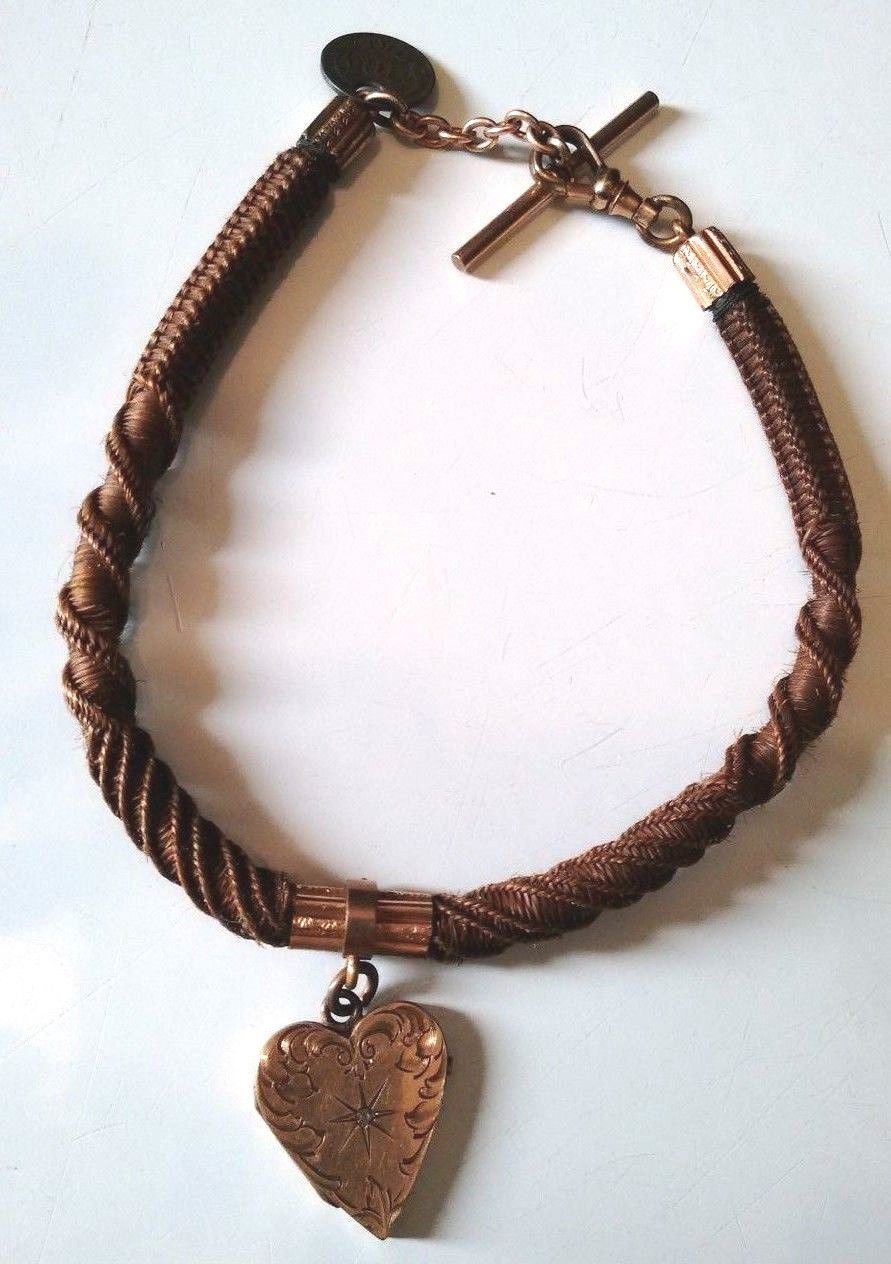

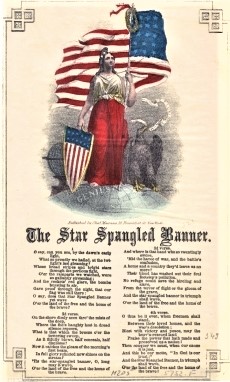
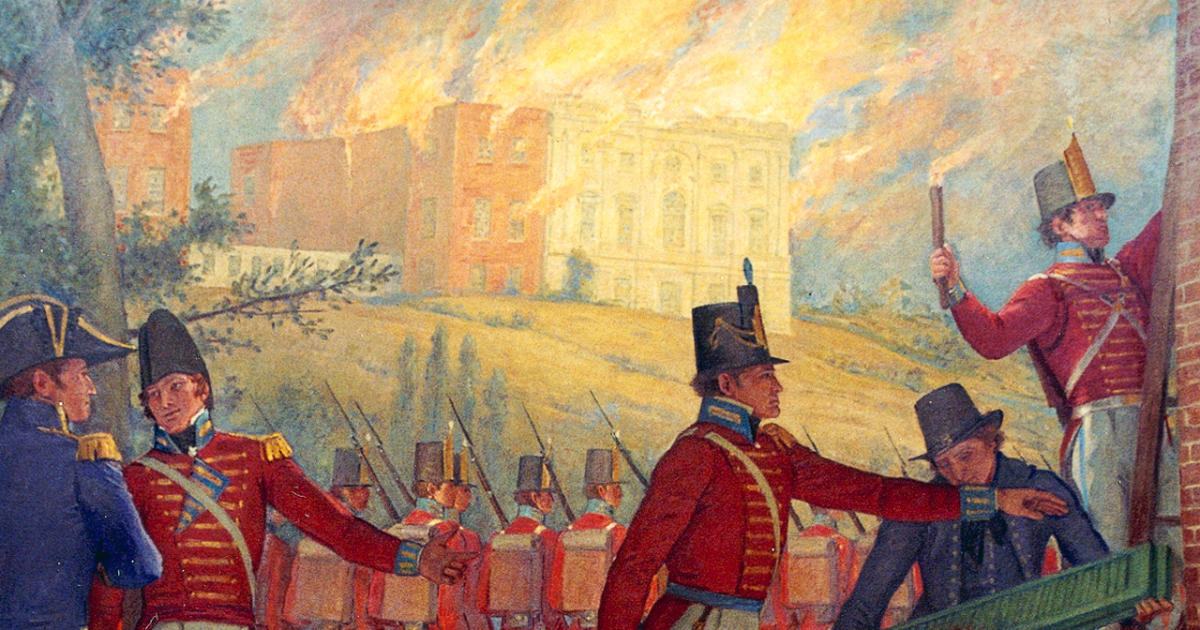
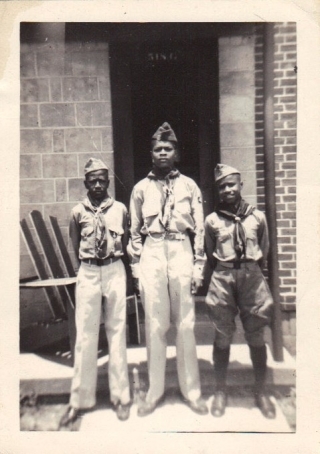
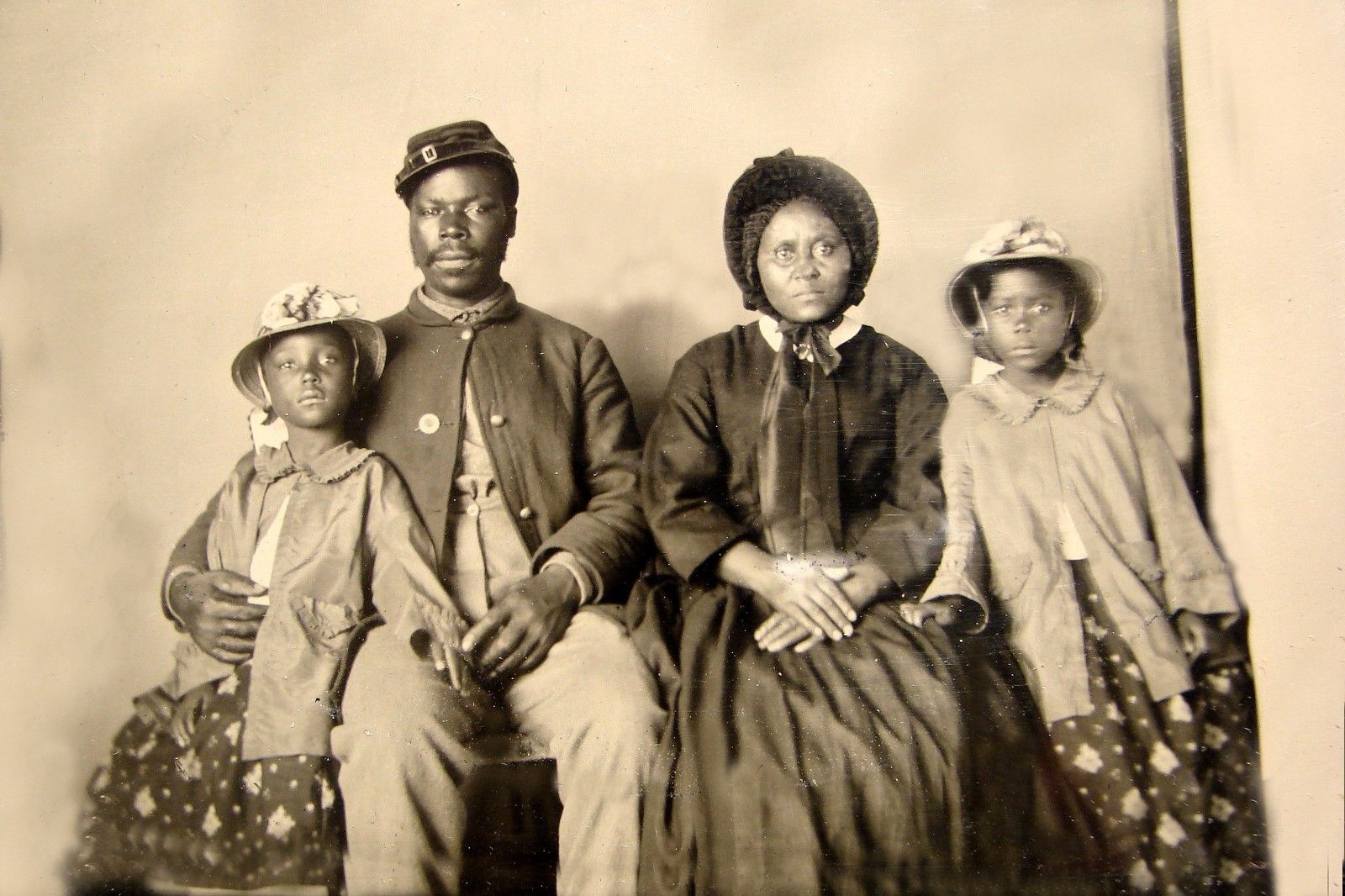
.jpg)

